Golf Ball Compression Chart for Every Golf Ball

In this guide, we’ll go over all of the important factors that effect golf ball compression. We also have a complete golf ball compression chart , which shows you the compression value for every single golf ball available today.
Use our chart, plus the information in this guide, to find a golf ball that maximizes your driving distance and gives you efficient energy transfer.
This guide has been updated for new 2024 golf balls, including the new Callaway Chrome Tour and Taylormade Speedsoft.
Related: Golf Shaft Flex Calculator and Guide
We’ll also teach you about:
- Golf ball compression and what it is
- The different golf ball features that effect compression
- External factors that might cause you to change your golf ball
- How to buy the golf ball with the right compression for your swing
If you have any questions about this golf ball compression chart, comment down below at the bottom of this guide and I will help you find the right ball for you.
- Save Money on Golf Balls
Did you know that you can save a ton of money on your golf balls?
Golf Ball Planet sells all of the balls listed in our compression chart below in bulk packs, mint condition. Browse and check out prices for yourself by clicking the button below! (Link will open up in a new tab)

What is Golf Ball Compression?
Bridgestone, under 80 mph, between 80 and 90 mph, between 90 and 100 mph, between 100 and 110 mph, over 110 mph, experience level, swing speed, distance vs swing speed chart, golf ball layers, weather conditions, frequently asked questions (faq).

Golf Ball compressiojn is the change of shape that occurs when your club transfers energy to the ball as it makes contact. Whereas any golfer can benefit from any of the features in a golf ball, compression is the one feature dependent on your swing speed.
Golf ball compression optimizes the ball’s distance and control for a given swing speed. For this reason, this is the #1 research you should perform before you buy a golf ball.
A golf ball with a low compression will compress more when hit, assisting the golfer in transferring energy. A golf ball with high compression will require more swing speed to compress. Compression value is the same as hardness value if it helps to think of it that way.
Below is a complete golf ball compression chart for every golf ball currently available to buy in 2023. Make note of the compression rating; then, we’ll teach you how to match up the right golf ball for your swing speed.
Golf Ball Compression Charts
Golf ball compression is a measurement of how much the ball deforms when force is applied to the ball after being struck by a golf club.
It’s measured in pounds per square inch (psi) and is expressed in two ways: peak pressure and initial velocity. Peak pressure refers to the maximum amount of force exerted on the surface of the ball during impact. Initial velocity is the rate at which the ball travels after being struck.
Some golf brands measure compression of the core only and others will state compression for the entire ball. Either option is fine as long as you understand what you are reading. We prefer to see the compression values for the entire ball because it reflects more real life situations.
The Best Compression Golf Ball For Every Swing Speed
In my opinion, here are the best golf balls to buy according to your swing speed. I picked highly ranked golf balls from the golf ball compression charts above.
- Callaway Supersoft
- Taylormade Distance+
- Titleist Tour Soft
- Callaway ERC Soft
- Mizuno RB 566
- Srixon Soft Feel
- Bridgestone E12 CONTACT
- Srixon Z-Star
- Taylormade TP5
- Titleist Pro V1
- Bridgestone Tour B X
- Callaway Chrome Soft X
- Bridgestone Tour B XS
- Callaway Chrome Soft X LS
- Srixon Z-Star XV
- Titleist Pro V1x
How Do I Know Which Golf Ball to Buy?
You can use the compression rating of the golf ball above in the golf ball compression chart, along with your experience to match up the right ball to buy today.
If you are a beginner golfer and you aren’t sure where to begin, a soft golf ball with a low compression is always a good choice for you. Lower compression balls can give you more yardage off the tee box when you are just starting out.
It will be harder to shape your shots with specific draws and fades, but most beginner golfers aren’t worried about this anyway.
Scratch players generally have faster swing speeds and get good distance off of the tee already. A harder ball will ensure that you don’t actually lose energy when you hit the ball.
If you buy a launch monitor to measure and learn what your swing speed is, then you can buy a specific golf ball that matches your speed. A good rule of thumb is that you want a compression rating that matches your swing speed in miles per hour (MPH).
In other words, as your swing speed gets faster, you want a ball that will compressesoff the tee less (a higher compression value) as you transfer energy from the club to the ball. Slower swing speeds will benefit from a softer ball.

Curious to know what your expected distance will be depending on your swing speed? A chart of typical ball distance vs swing speed is:
What Golf Ball Features Effect Compression?
Different golf ball features play an important role in compression.
Golf balls can be manufactured with between 2 to 5 layers. A 2-piece golf ball has the inner core and the outer and that’s it. A lot of softer golf balls (low compression) are 2-piece construction because it is designed with a full core that is easy to compress.
A golf ball with more layers requires you to power through more material in order to transfer energy to the middle of the golf ball. So you will see 5-piece golf balls generally be very hard with a high compression value.
Most PGA tour players, like Bryson Dechambeau, like a multi-layer golf ball because these extra layers give them greater control and spin on their shots.
The core of the golf ball is made from injection-molded or sythesized rubber. The core has the greatest impact on how hard or soft a golf ball is. When you hit a golf ball, energy is stored and released by the core in order to propel the ball forward.
Golf ball manufacturers can alter the core by changing how dense it is. A denser core makes the ball harder, requiring more swing speed to get energy to it.
The outer cover of a golf ball is constructed of one of a few different materials:
- Surlyn – a harder plastic resin
- Urethane – a slightly softer synthetic compound
Since surlyn is a harder material, it can contribute to some extra distance and durability out of the golf ball. Urethane is a bit softer and promotes more spin and control out of your shots.
A golf ball cover has dimples added to control the spin and aerodynamics of the golf ball. The pattern and depth of the dimples can effect how much golf ball makes contact with your ball and how efficient the transfer of energy is. A complex dimple pattern can be harder to manufacture and increase the cost of a golf ball.
What External Factors Effect Golf Ball Compression?
A golf ball is not immune to the elements of the day. Keep these factors in mind when you are select the right golf ball.
When it is cold outside, a golf ball (and other objects) stiffen up. If you play a lot of early morning golf, then a softer ball with a lower compression value is preferred.
If you play at a golf course in a higher altitune, the air density will be lower and there will be less drag on the golf ball in the air. For this reason, you should look to hit a golf ball with a bit higher compression value. You will already enjoy a little extra distance and the harder ball will give you some better control at higher altitude.
How does golf ball compression affect distance?
When a golfer strikes a golf ball, he or she applies a certain amount of force to the ball. This force compresses the golf ball and causes it to deform. As the ball deforms, it becomes less spherical and its drag increases. Drag is the resistance caused by the movement of air across the surface of the ball. The greater the drag, the harder it is to propel the ball forward.
The lower the golf ball compression, the less drag there is, so the ball flies farther. A high golf ball compression rating means that the ball has been compressed to a very small size. When a golfer strikes the ball, the compressed ball rebounds back toward him or her, resulting in a shorter shot unless they have a bigger swing speed to compensate for the added compression.
Why do some golf balls have a higher compression rating than others?
The difference between golf ball compression ratings comes from the manufacturing process. Some manufacturers use a molding machine to compress the ball before it’s vulcanized. Others use a hydraulic press to compress the ball while it’s still soft. In either case, the manufacturer uses a specific number of psi to achieve a specific golf ball compression rating.
What does golf ball compression impact feel?
A high-compression ball feels firmer when struck because it allows for more deformation At impact. It is easier to control and requires a higher swing speed in order to maximize distance compared to a low-compression ball.
How does golf ball compression impact spin?
Spin is created as the ball moves through the air. Spin is affected by many factors including the type of material used in making the ball, the shape of the dimple pattern, and the amount of compression. Higher-compression balls tend to be spinnier.
Do golfers prefer a high- or low-compression ball?
Most average players like a medium-compression ball. High-compression balls offer better distance but require higher swing speeds to generate enough energy to launch them. Low-compression balls produce longer drives but they don’t fly as far.
Overall, you should match your swing speed (in MPH) with the compression rating of a golf ball in order to find a perfect match.
If you have a slow swing speed of less than 80 MPH, then try a low compression golf ball.
If you have a medium swing speed between 80 and 100 MPH, then try a medium compression golf ball.
If you have a high swing speed between 100 and 110 MPH , then try a high compression golf ball.
If you have a tour swing speed over 110 MPH , then try a high compression golf ball with added features and more layers in order to refine the control of the ball for different kinds of shots.
Use the golf ball compression chart above to learn and understand the compression value of all of the top balls today.
Each of the top brands release a golf ball for every swing speed in order to maximize sales.
Try out a few balls in your compression range in order to find the one that suits you most. You might see a huge impact in your swing if you pick the right ball.
What is your favorite golf ball to hit? Comment down below today!
Ryan William
With over 25 years hands-on experience in the golfing world, Ryan is not just an avid golfer but a topical authority. His journey has had him delve deep into the nuances of the sport, from mastering the swing to understanding new golf technology. As an entrepreneur, Ryan is at the forefront of the latest golf trends, reviewing all new clubs, accessories, and training aids. His insights and expertise are backed by a prolific writing career, with over 1000 articles published across various platforms. Ryan's commitment is clear: to guide and inform the golf community with unparalleled knowledge and passion.
Modern Golf Apparel

Save on TaylorMade, Callaway & more!

Golf Ball Compression Chart: Find Your match
Last Updated on January 31, 2024 by Matt Greene
If you can match the golf ball compression to your swing, you can gain distance and increase or decrease spin, depending on your goal.
A golf ball's compression rating is a rating of the softness or hardness of the ball.
Generally, the lower the compression rating, the easier the ball compresses.
Knowing which golf ball compression matches your swing speed, tempo and club head speed will get you closer to your goal. Understanding the compression of modern golf balls is the first step in the process of finding that perfect ball.
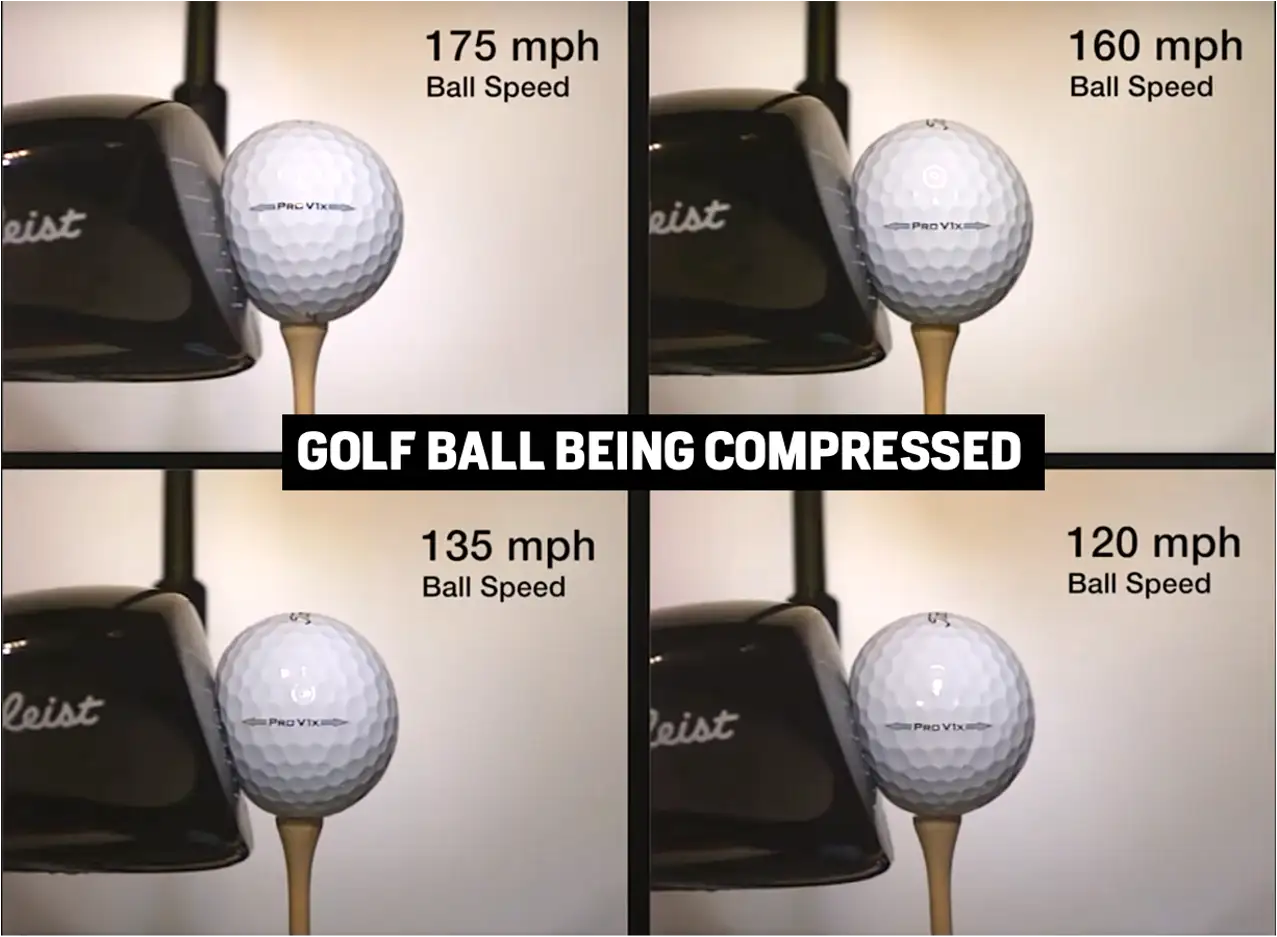
Golf ball compression explained
Golf ball compression is a rating or measurement of how much a golf ball deforms when it is hit. When a golf club hits a golf ball, the impact causes the ball to change shape as it compresses against the face of the club.
The ball will then spring off the face towards the target.
Compression stated on the golf ball or on a manufacturers' website are for the entire ball, but often manufacturers refer to core compression only.
Golf Ball Compression vs Swing Speed Chart
When we refer to swing speed, we are referring to the DRIVER swing speed specifically.
Driver swing speed is an easy benchmark because it is predictive of the swing you'll have throughout the bag.
There is one foolproof way to work out your driver swing speed so you can match it to the correct golf ball for you.
- Go to a Trackman or other radar-equipped driving range. You can hit many balls with your driver to establish your driver swing speed. This is the most accurate swing speed measurement equipment in golf.
With this information, you can now make an informed decision to select the correct golf ball compression from the ball compression chart and squeeze maximum performance from your golf ball. Keep in mind that you can increase your swing speed with the correct shaft .
There are cheaper options available within each swing speed bracket and I've included a price guide below.
Kirkland Golf Ball Compression
Kirkland Signature golf balls have a compression rating of 94 which places them in the high compression category. As a 3 piece urethane covered golf ball, the Kirkland Signature characteristics are the same as a Srixon Z Star or a Titleist Pro V1.
What does a golf ball compression rating mean?
The golf ball compression ratings range between a score of 30 and 120. The softest being 30, and the hardest being 120.
Low compression golf balls are softer balls.
Higher compression golf balls are harder balls.
Do low compression or high compression go a further distance?
Compression and ball speed are related very closely.
- Generally, for FAST SWINGS OVER 105 MPH specifically , lower compression (softer) balls produce less ball speed and these fast swinging golfers lose distance with a low compression ball.
- "Soft balls are slow balls" is a confusing catch phrase thrown around the internet, so don't get confused.
- The biggest loss in distance using low compression golf balls is only for a higher swing speed (105 mph+) with the driver.
- For slower players (below 85 mph driver swing speed), the differences in ball speed and distance discrepancies between high and low compression balls are so small that we can disregard the notion that 'soft is slow' in this instance.
- For golfers who have swing speeds over 85 mph, producing more spin in excess of 2,750 rpm with the driver, lower spin produced by the low compression golf ball can actually make up for the distance you might lose with that same 'soft' low compression ball.
- In other words, the low compression ball reduces backspin enough to negate the 'slow' ball speed so that you actually benefit from the low compression ball.
As swing speed comes down, especially on iron shots, low-compression balls may be faster than firmer balls.
Soft balls make slow ball speeds but under the conditions above, the softer covers on high compression balls explain the differences in speed.
It's important to also remember that, soft balls do not spin.
The same design principles that make a ball soft also make a ball spin less.
The lowest spinning balls are low-compression balls throughout the bag; whether you look at the wedges, irons and even the driver.
If you need straighter shots with your driver or to remove spin in your irons, soft (low compression) balls work great. If however, you need more spin on approach shots, the soft low compression balls are not for you.
How does compression affect spin on the ball?
Low compression balls otherwise known as soft balls, are lower spinning than firm balls. The reason is the way they are constructed, not the compression.
Spin is the result of putting a soft layer (soft cover) around a hard layer (high compression core) and that is why low compression balls spin less. Their core is soft with a hard outer cover.
The covers on low compression balls are often hard ionomer while high compression balls that create high backspin, have a urethane cover.
It is possible to make a lower spinning hard ball but the soft balls spin the least in general.
How can low spin, low compression balls hold a green?
Most low compression golf balls have dimple patterns on the cover that create high trajectory shots.
The ball is made to create a higher ball flight and steeper landing angle to negate the loss of backspin and that is how the ball will stop closer to its pitchmark.
The soft inside core of softer balls means that soft or low compression balls usually produce lower spin.
Lower spin on a driver shot means a straighter ball flight, but a low spin iron shot can make it more difficult to stop the ball when you land on the green.
Any golf ball with a urethane cover ( MULTI PLAYER TOUR BALL ) will create more spin than a non-urethane cover (low compression 2 layer ball). By wrapping a high compression golf ball in a soft urethane cover, spin is created.
Does compression affect spin around the greens?
The main way that spin is produced on your short shots is from putting a soft layer around the hard layer - in other words, a urethane cover around the firm core of the ball.
Urethane golf balls will spin much more than ionomer/surlyn golf balls. This is universal and does not depend on a compression. If you want the most spin, you need golfball with 3 layers or more, and a urethane cover.
Callaway Super Soft, Srixon Soft Feel, and Wilson DUO will spin less around the green than a Tour ball like the Titleist Pro V1, Callaway Chrome Soft or Srixon Z-Star. The Tour ball has a urethane cover which is the softest layer of the ball, but underneath that, is a very firm layer. Onlymultiple layer balls with urethane covers spin significantly around the green.
The balls with the biggest difference in urethane softness and the underlying layer firmness will spin the most.
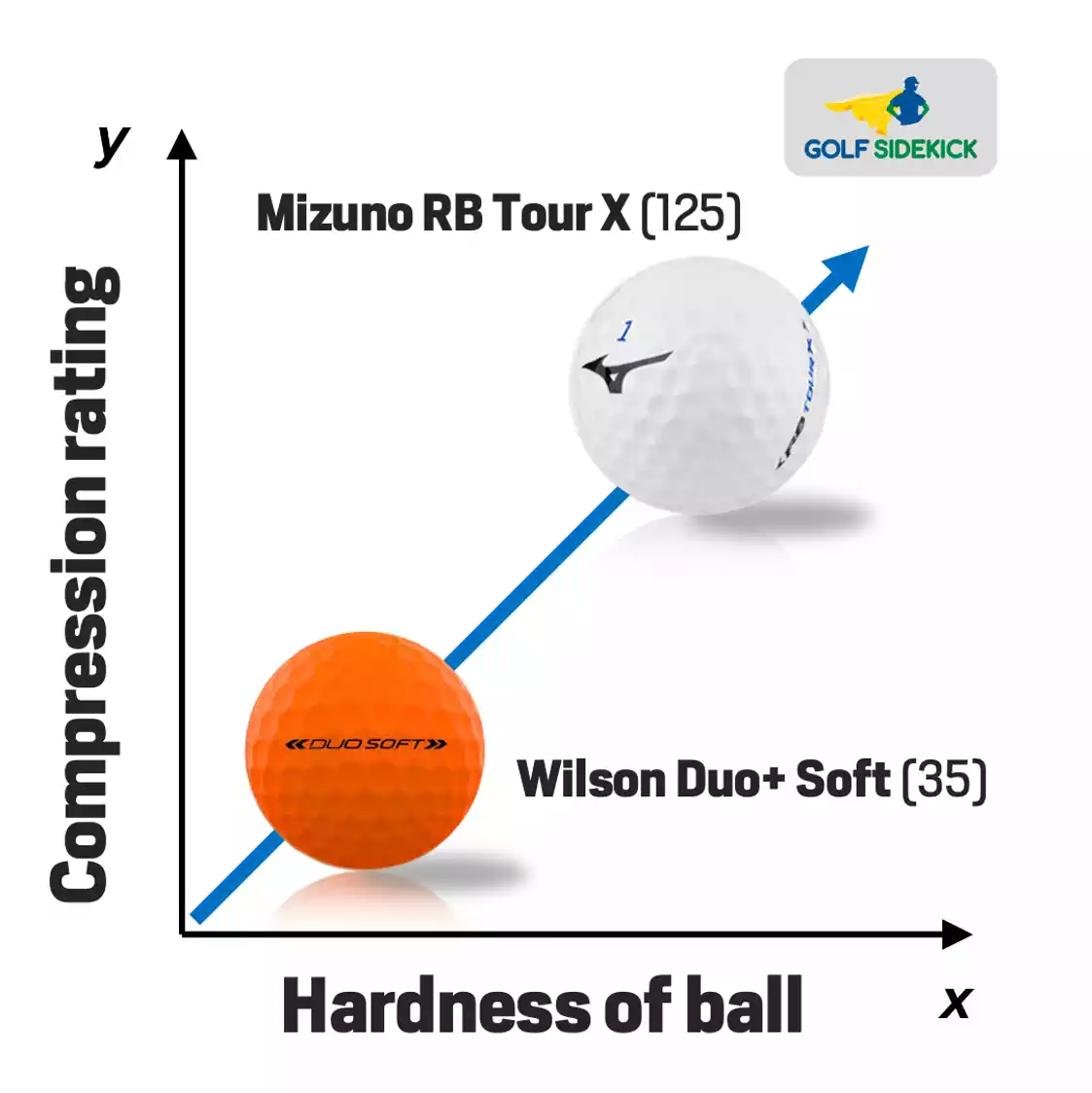
Which ball goes with which driver swing speed?
Faster swing speeds (above 100 mph).
Faster swings need higher compression golf balls. A higher compression golf ball will perform the way a fast swing needs the ball to perform while a low compression ball will lose distance in this swing speed range.
The options in this bracket will usually be a premium golf balls because high swing speeds are in the minority. A cheaper option in this category are the Kirkland Signatures.
Average swing speeds (85 – 100 mph)
If you are medium swing speed golfer, you have a choice when it comes to the ball you play.
Try out many golf balls depending on your driver spin rate and iron spin rate.
If you are a high spinning golfer, you may need a low compression ball to remove some of that spin. If you're a low spinning golfer, you do not need to lower spin even more, and you should go with feel. What feels best to you?
If you actually need more spin, choose a medium to high compression ball with a urethane cover .
Slower swing speeds (below 85 mph)
Distance is at a premium for slower swinging golfers so well-priced low compression golf balls are the best option. The softer the ball the more pleasant the sound, the lower the spin rate and the longer you'll hit the ball.
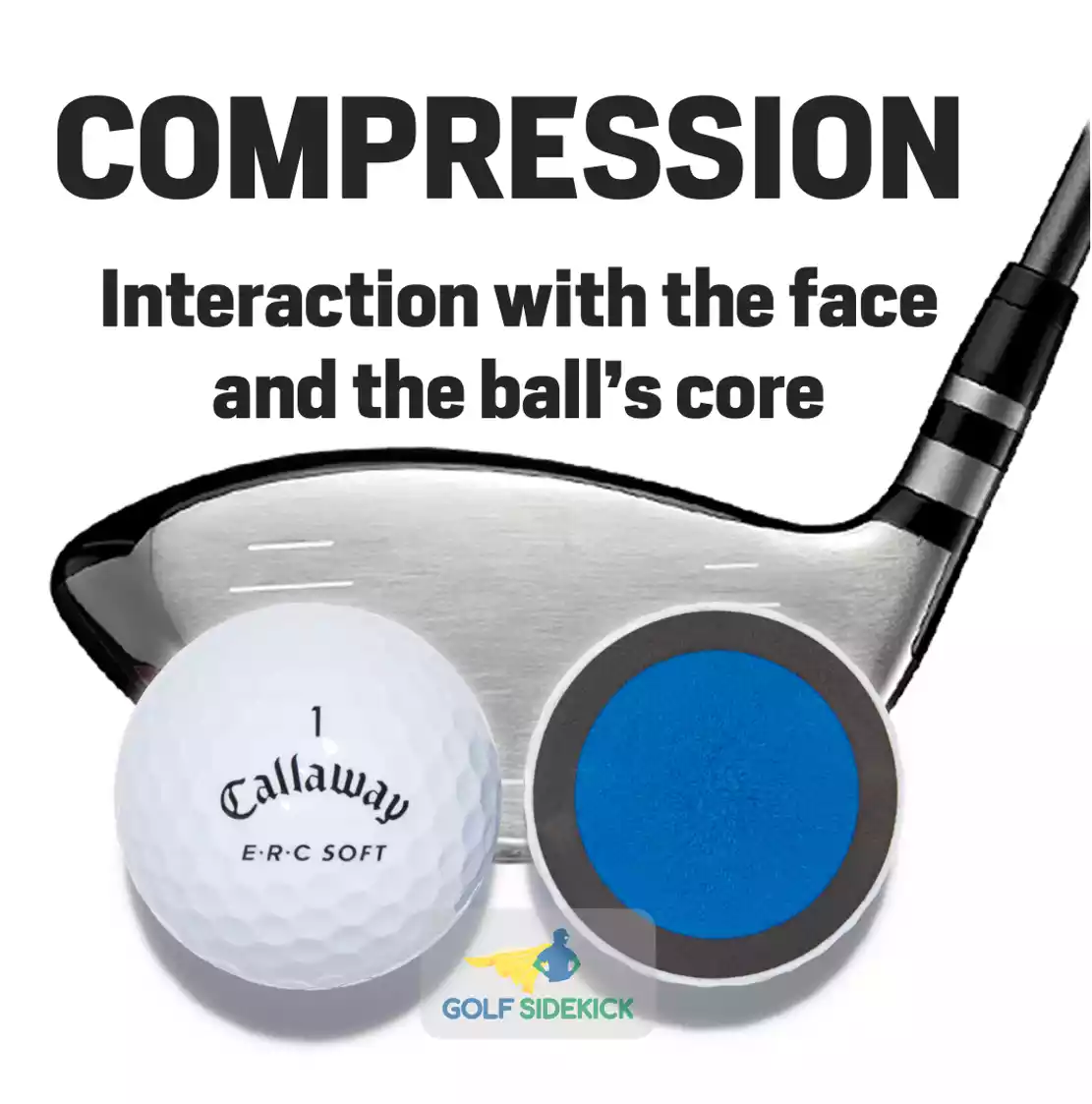
Do number of layers make a difference?
Players of different abilities will get more from balls with a specific number of layers.
If you're a high handicapper with a slower swing speed, a premium 5 piece golf ball isn't going to be suitable for you.
Here's a quick break down of how to choose the right number of layers for you:
2-Piece Golf Balls: The perfect golf ball for all casual golfers especially those with slower swing speeds. These balls are often well-priced. A great example of a two piece ball is the Srixon Soft Feel.
3-Piece Golf Balls : The Titleist Pro V1 is the gold standard of 3 piece golf balls and can be used by golfers with a variety of swing speeds and skill levels but I would reserve these balls for you when you lose fewer than 2 balls per round. Another good 3 piece ball is the Srixon Z star.
4 And 5-Piece Golf Balls: Super premium balls specifically designed for experienced golfers to optimize distance and control. These balls perform best for skilled players.
How do high and low compression balls feel?
- High compression balls will feel firmer. The sound off the club face is very clicky.
- Lower compression balls feel softer on the club face and make a sound that is more pleasing.
- The compression is not the only factor in the feel of a golf ball.
- The cover makes a bigger difference. Urethane covered golf balls feel much softer and are usually found on 3 piece golf balls.
- Ionomer or surlyn cover golf balls are found on the 2 piece golf balls and feel much firmer and clicker.
Final thoughts
If I have learned one thing about golf balls in my 25 years of playing golf and watching other golfers, it's that more expensive doesn't always mean better.
Everyone who starts the game thinks they should be playing a Titleist Pro V1, Callway Chrome Soft or TaylorMade TP5, but it's just not the case. These balls can cost upward of $4 each and will they make that much difference to the game of most golfers? No.
I play the Volvik S4 as it matches my swing speed (115 mph) and my needs around the green (stop quickly). This high compression golf ball wouldn't suit many of my playing partners and they would get better performance from a cheaper two piece ball .
As with nearly everything in golf, play around with options then stick to what works.
If you have some experience playing golf now, try not to bounce around different balls. Find one which works and learn how it reacts to your game. Learn the ball and learn with the ball. It'll save you strokes, I promise.

The Golf Ball Compression Chart: What Every Golfer Must Know
- Last updated on December 22, 2023
Toni Benedito
- Golf Equipment & Gear , Blog
Choosing the right golf ball is key to improving your game. Compression, measured from 0 to 200, determines how much a ball compresses upon impact, influencing its trajectory and distance. Refer to a golf ball compression chart to match your swing speed and playing style, ensuring you pick the perfect ball for optimal on-course performance.
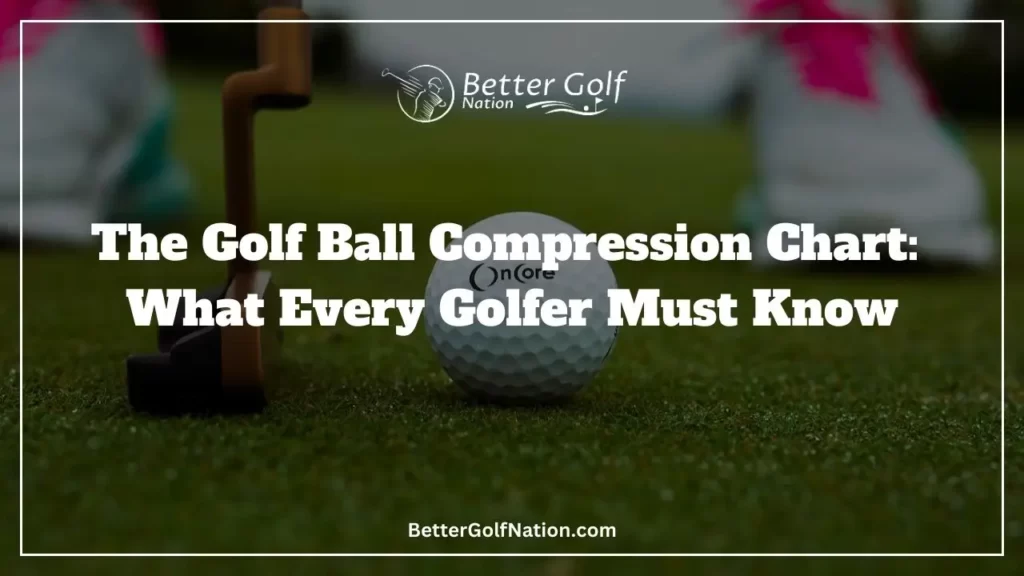
Key Takeaways
- Golf ball compression, ranging from 0 to 200, impacts trajectory and distance. A low compression means a softer ball, easier to compress, while a higher compression indicates a harder ball.
- Compression charts visually represent different balls’ compression levels, aiding in selecting based on swing speed and playing style.
- Understanding compression is crucial for optimal performance, as it influences flight trajectory, distance coverage, accuracy, and overall play.
- Players can assess their swing speed and refer to a reliable compression chart for informed ball selection, ensuring ideal performance on the course.
- Testing compression using launch monitors or simulators helps determine the ideal compression level, ensuring players choose the right ball for their playing style and swing speed.
Introduction
Golf, a dynamic fusion of skill, precision, and sheer determination, demands the right equipment to elevate your game. Amidst the myriad of choices, one often-overlooked yet pivotal element is the golf ball. As a golf enthusiast, you’re likely familiar with the overwhelming array of options lining the shelves of your local pro shop, each promising to enhance your performance on the course.
Navigating this sea of choices can be a challenge, but fear not, for within the realms of golf ball selection lies a game-changing factor: compression.
In the pursuit of mastering the art of golf , understanding the nuances of golf ball compression is akin to unlocking a secret code that can significantly influence your game. Compression, graded on a scale from 0 to 200, delves into the very essence of how a golf ball reacts to the forces it encounters on the course.
Whether you wield a putter, iron, or driver, the compression of the golf ball under the impact of your swing dictates its trajectory, distance coverage, accuracy, and overall performance. It’s not merely a technicality; it’s a fundamental aspect that can either enhance or impede your prowess on the greens and fairways.
Enjoying this article? Read more:
Unlocking a Mystery: What Is a Links Golf Course? Explained!
Check out this video below from Club Champion ‘s YouTube channel talking about ball compression and whether it matters or not:
As we embark on this journey into the intricacies of golf ball compression, we’ll unravel the layers of information that shape this crucial element of your golfing arsenal.
From the fundamental definition of compression to the practical application of golf ball compression charts, our exploration will equip you with the knowledge needed to make informed decisions about the golf balls you choose to accompany you on your golfing endeavors.
In the world of golf, where precision is paramount and the right choice can make all the difference, understanding golf ball compression emerges as a key to unlocking your full potential on the course.
So, let’s delve into the depths of this critical aspect, exploring how compression charts, swing speed, and tailored testing can guide you towards selecting the golf ball that aligns seamlessly with your playing style, ensuring each shot is a step closer to golfing excellence.

Understanding Golf Ball Compression
Golf ball compression is a term that refers to the hardness of a golf ball.
Simply put, it is the amount of pressure that a golf ball exerts on itself when it is hit by a club . The higher the compression, the harder and less elastic the ball will be.
There are different levels of compression available in golf balls, ranging from around 70 to 110. Golfers choose their golf balls based on their swing speed and playing style.
Players with slower swing speeds tend to benefit more from low-compression balls because they compress more easily upon impact with the clubface and produce more distance off the tee. On the other hand, high-compression balls are better suited for players with faster swing speeds because they require more force to compress, resulting in less deformation at impact and producing more spin.
"Understanding golf ball compression is critical for optimizing play. The higher the compression, the less elastic the ball, suitable for faster swing speeds. Not all expensive balls have high compression; low-compression options offer excellent performance and feel. Compression charts provide valuable insights for personalized ball selection."
It’s important to note that not all high-end or expensive balls have high compression ratings. Some manufacturers produce low-compression premium balls that offer excellent performance and feel around the greens while maintaining distance off the tee.
Similarly, some budget-friendly alternatives can also provide superior performance relative to their price point. Compression chart data analysis can provide valuable insights into which type of ball you should pick for your game based on your driving yardage, swing speed rank, spin rate, and efficiency in different aspects of your game, such as putting or chipping.
Overall, understanding golf ball compression is critical for optimizing your play on the circuit or when just having fun playing golf with friends. The next section will cover why you should pay attention to this aspect of your equipment selection process.
How Do Pro Golfers Get Paid? The Business of Golf
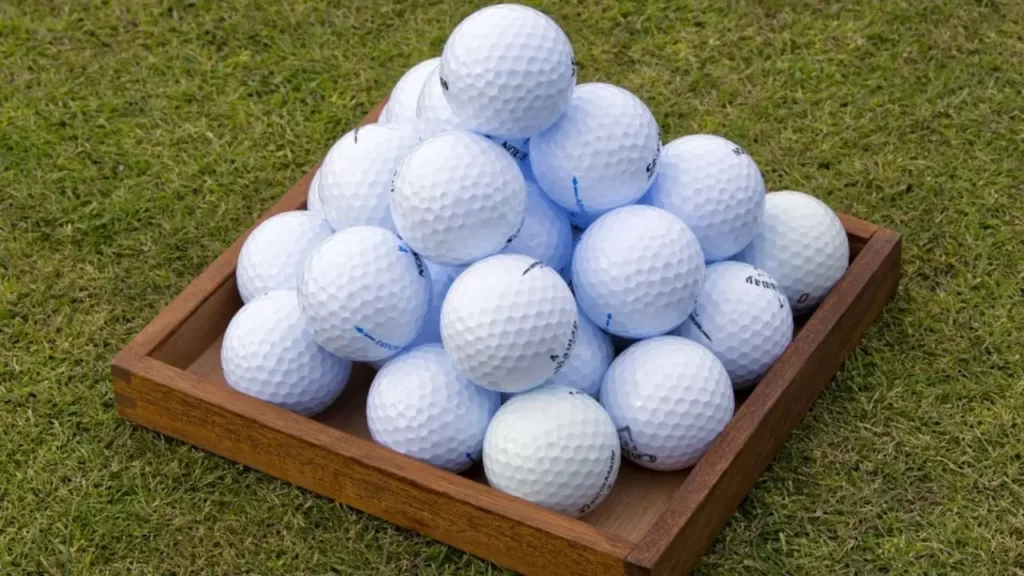
The Importance of Golf Ball Compression
Golf ball compression is a key factor in determining the effectiveness of your golf shots. Compression refers to how much the ball will compress when it is struck.
The more the ball compresses, the less energy it loses upon impact, resulting in greater distance and better performance. Thus, choosing the right compression rating can significantly affect your yardage and control.
It is important to note that golfers with different swing speeds will require different compression ratings to maximize their game. For instance, if you have a slower swing speed, you may benefit from using a low-compression golf ball, as it will help you achieve better length on your shots.
On the other hand, if you have a higher clubhead speed, using balls with higher compression ratings can help provide more control over your shots. This cannot be overstated when comparing high-end and top-quality balls with lesser-known brands or generic balls found at discount stores.
"Choosing the right compression rating is vital for golfers. More compression means less energy loss, resulting in greater distance and control. Tailoring compression to your swing speed is key—low-compression for slower swings, high for faster ones. It's a game-changer, especially when comparing top-quality balls and different club styles."
Top-of-the-line balls come with detailed information guides that include circuit analysis charts detailing all aspects of their performance; these charts are particularly useful when selecting a new type of ball to try out since they offer numerous data points by which to compare options. Compression also plays an important role when comparing drivers and clubs used for iron play.
Different clubs require different types of balls for optimal performance and distance control. Generally speaking, players who use older-style irons may prefer low-compression balls since they provide more spin-off for each iron shot for greater accuracy.
Additionally, players who use newer models of drivers may need higher compression ratings given their larger clubheads; this enables them to compress the ball more easily for better yardage results.
Understanding golf ball compression can significantly improve a player’s overall yardage and control on each shot taken within range during every round played on any course around the world, making this aspect critical whether playing casually or competitively at any level!
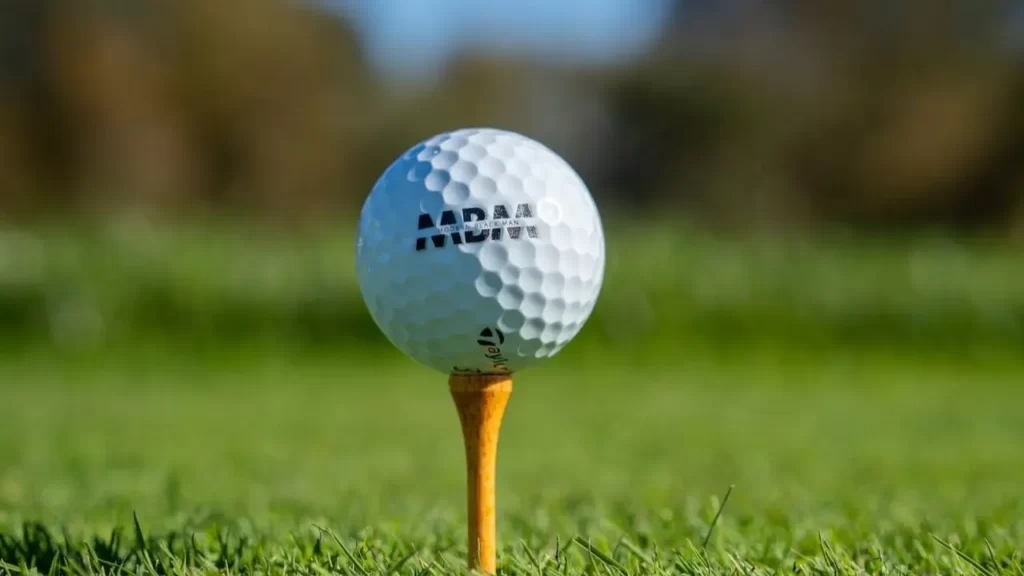
Golf Ball Compression Chart Explained
To understand the golf ball compression chart, it is important to know what compression means. Compression refers to the degree of density at which the ball is made.
The higher the compression, the harder and denser the ball will be. Golf balls have varying degrees of compression, ranging from 0 (soft) to 200 (hard).
The ideal compression for each golf player depends on their swing speed, playing style, and skill level. The golf ball compression table is designed to help golfers select the right type of ball that suits their game.
It provides valuable information on how different levels of compression affect performance on the course. The chart typically ranks balls by compressing them with a machine that measures how much they deform under pressure.
The graph shows how far a compressed ball travels when hit by a driver. The length of the yardage varies depending on where it lands and how steeply it bounces back up into the air after impact. Below are some examples from our compression chart:
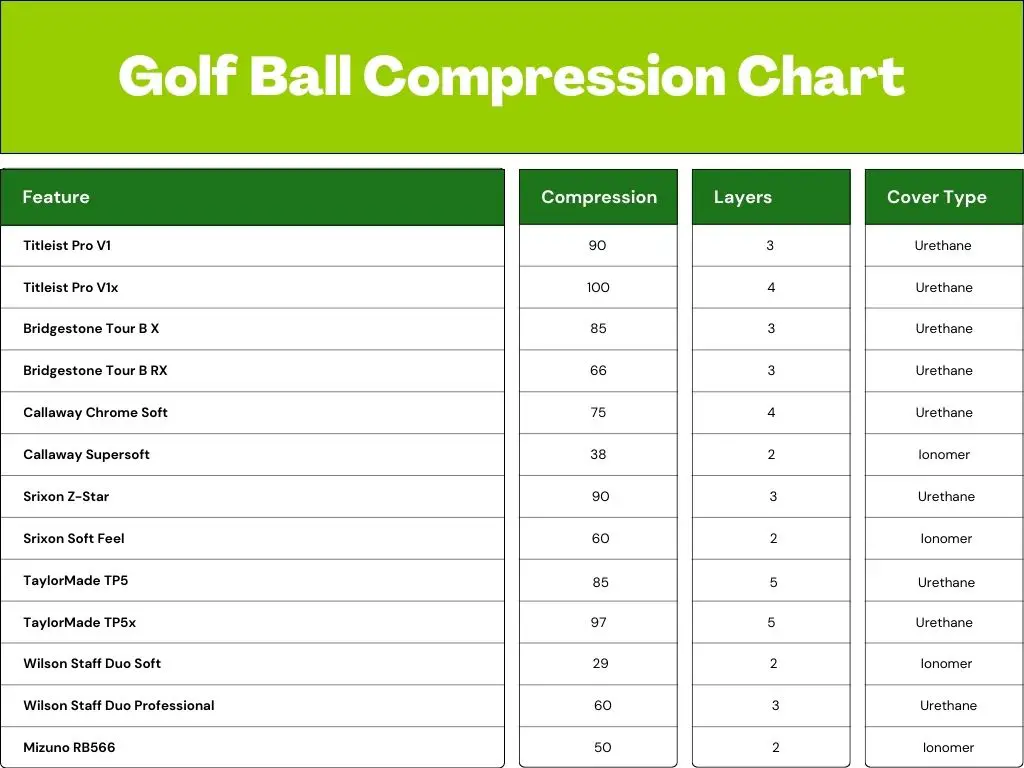
Players who have slower swing speeds usually choose lower-compression balls because they compress more easily upon impact and generate greater distance with less force. A top-quality golf ball will typically feature multiple layers, each with different levels of firmness or softness.
These layers work together to optimize spin and provide maximum distance while reducing unwanted sidespin or spin axis tilt. Upon analysis, this layering can be seen in detail in a table format alongside other details such as manufacturer name and price range.
Choosing a golf ball can be an overwhelming task for any golfer due to the countless options available for selection. Using a golf ball compression chart as your guide can save you time and money by helping you select optimal options based on your game’s needs without breaking your circuit or wallet!
Breaking Down the Dollars: How Much Are Golf Clubs Really?
Check out this video below from Wilson Golf ‘s YouTube channel talking about golf ball compression and distance:
Choosing the Right Golf Ball Compression for Your Game
Embarking on the journey to select the ideal golf ball compression is a nuanced process where considerations unfold like the layers of a well-struck drive. At the heart of this decision-making endeavor is the pivotal factor of swing speed. Whether your swing is a deliberate dance or a lightning-quick flourish, understanding how the ball reacts to your clubhead’s impact becomes paramount.
Here are some factors to consider:
Swing Speed: Your swing speed acts as the compass in the labyrinth of compression options. For those who orchestrate a more deliberate swing, a lower-compression ball proves advantageous. The ease with which it compresses upon impact translates to enhanced distance and control. Conversely, those wielding a faster, more dynamic swing find solace in the arms of higher-compression counterparts, which demand a forceful impact, resulting in controlled shots and increased spin.
Type of Golf: The stage upon which your golf narrative unfolds plays a significant role in the compression saga. High-end circuits, with their demands for precision and performance, beckon the use of superior golf balls adorned with multiple layers and a higher compression rating. These balls are crafted not just for distance but also for spin control, offering a symphony of capabilities crucial in competitive play. On the flip side, if you’re still honing your swing in recreational settings, a mid-range or lower compression ball may prove more forgiving and budget-friendly.
Personal Preferences: As golf is as much a game of feel as it is of numbers, your personal preferences become the brushstrokes that add the final touches to your compression masterpiece. Some players find comfort in the softer caress of a lower-compression ball, while others seek the resolute response of a firmer touch. This preference, guided by the sensations you seek on each swing, becomes a hallmark of your unique playing style.
Choosing the right golf ball compression transcends the realm of mere technicality; it’s the fine-tuning that can elevate your on-course performance. Armed with a comprehensive golf ball compression chart and a keen awareness of your swing speed and personal inclinations, you wield the power to sculpt your golfing experience. The right ball becomes not just a tool but a companion, guiding each shot towards precision and mastery on the lush greens and fairways of your golfing journey.
Dressing for Success: Why Does Golf Have a Dress Code
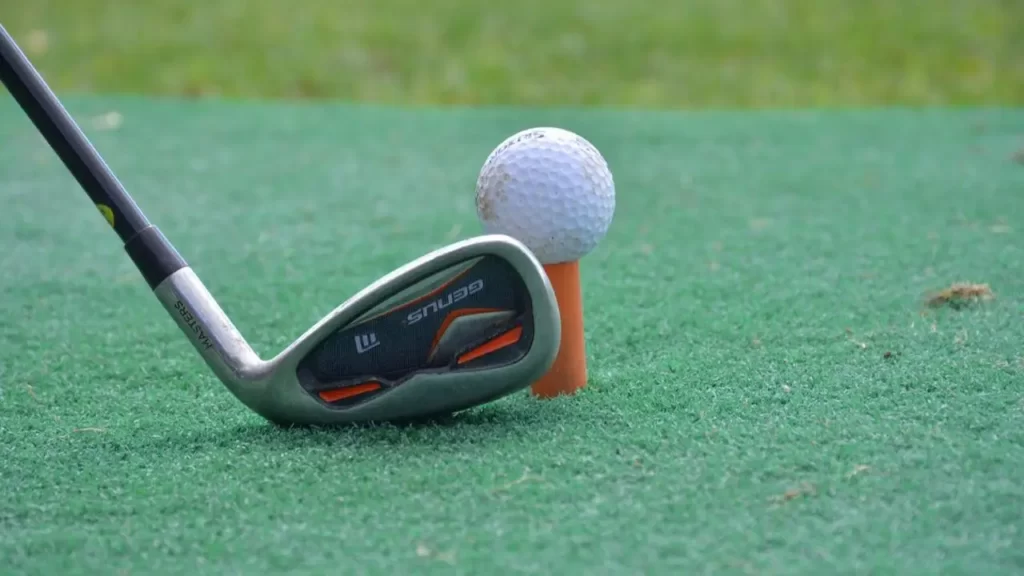
Testing Golf Ball Compression
When it comes to testing golf ball compression, there are several methods available. One of the most common is the “squeeze test,” where you use your hands to compress the ball and measure how much it compresses.
This method can give you a rough estimate of the ball’s compression, but it is not very accurate or consistent. For a more precise measurement, you can use a dedicated compression testing device.
These devices typically consist of a platform that supports the golf ball and a hydraulic press that applies pressure to the ball until it compresses to a predetermined level. The machine then measures the amount of force required to achieve this level of compression and displays it on a digital readout.
If you want to go even further in your testing, you can use high-speed cameras and sensors to measure how much a golf ball deforms upon impact with a clubface. This type of analysis can provide valuable insights into how different types of balls perform under different conditions.
It’s important to note that while testing golf ball compression can be useful for understanding how different balls will perform on the course, it should not be the only factor in your ball selection process. Other factors, like spin rate, launch angle, and overall feel, should also be taken into account when deciding which ball will best suit your game.
In addition, keep in mind that even two balls with identical compression ratings may have very different performance characteristics due to differences in design and construction. It’s always best to test out several options on the range or course before making a final decision on which one is right for you.
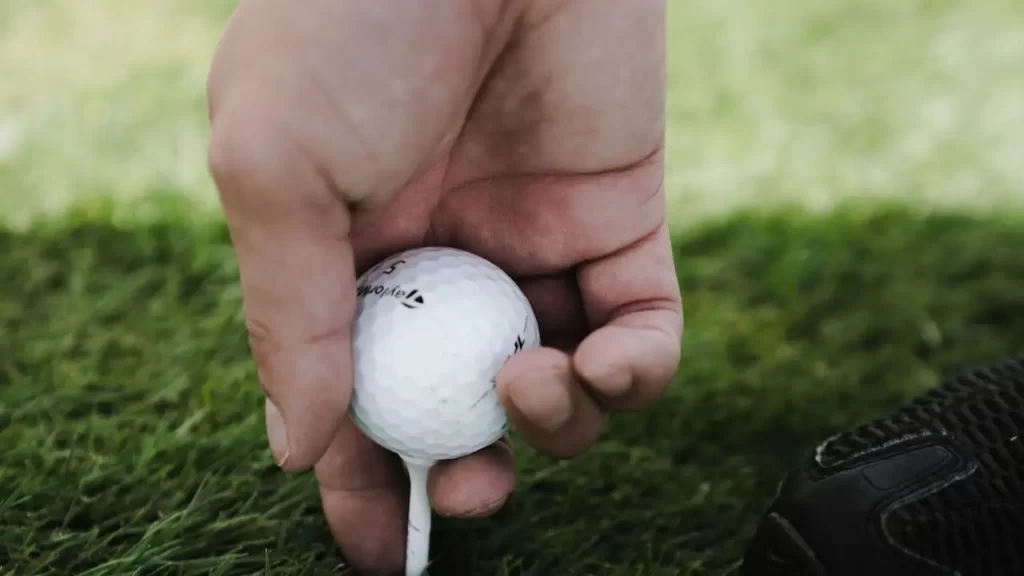
Check out this video below from THP Golf TV ‘s YouTube channel talking about golf ball compression and distance:
Understanding golf ball compression is essential for any golfer who wishes to excel at the sport. The compression chart provides a solid foundation for choosing the right golf ball that suits your swing speed and skill level.
With the right golf ball, you can improve your yardage, spin rate, and accuracy with each shot. Testing various golf balls for their compression rating can help you identify the best-quality ball that works well with your specific clubhead speed, swing style, and preferences.
Depending on whether you are using a driver, iron, or putter, different types of balls may be more suitable for each type of club. A high-end, top-quality ball may compress at higher rates than cheaper ones but provide more efficiency and effectiveness in terms of yardage and spin.
Remember that while there are significant factors to consider when selecting the best golf ball for your game, it’s crucial to focus on how well it works with your swing style rather than solely relying on any chart or analysis. Therefore, testing various balls before settling on one can lead to better results on the course.
Taking time to understand golf ball compression and using a compression chart to select the right one is an excellent way of improving performance when playing golf. This knowledge, along with some practice time at the driving range or course, will make all players better informed about their game and how they can maximize their abilities while enjoying themselves at the same time.
Share this Post
Keep Reading
Recent posts.

Professional golfers get paid both before and after tournaments. Before a tournament, they receive appearance fees, sometimes exceeding $1 million, to attract top players. After the tournament, earnings depend on their placement, with the PGA

How Much Do Golf Players And Pros Make? You Won’t Believe It!
Professional golfers earn substantial incomes through tournament winnings, sponsorship deals, and endorsements. Top players on the PGA Tour can make millions annually, with significant earnings from prize money and lucrative brand partnerships. For example, Rory

The Shocking Cost: How Much Does It Cost to Fly with Golf Clubs?
Flying with golf clubs can be a hassle, but it’s worth it for avid golfers. Costs vary by airline, ranging from $30 to $150 per way. Southwest Airlines offers a generous policy, allowing one set

Why Do Golfers Tape Their Fingers Before Hitting the Course?
Golfers tape their fingers to prevent injuries from repetitive motions, provide support for existing injuries, and improve grip comfort. It’s a popular technique among amateurs and pros alike, offering a lightweight and effective solution compared

How Much Does a Round of Golf Cost? Are You on Par?
The cost of a round of golf varies widely based on factors like course type, location, and time of play. Public courses typically range from $30-$100 per round, while exclusive ones like Augusta National or

Hidden Fees: How Much Does It Cost To Rent a Golf Cart
Wondering how much it costs to rent a golf cart? Explore factors like location, rental duration, and cart type impacting prices. Daily rates range from $50 to $80, while weekly rentals can vary from $200
Table of Contents
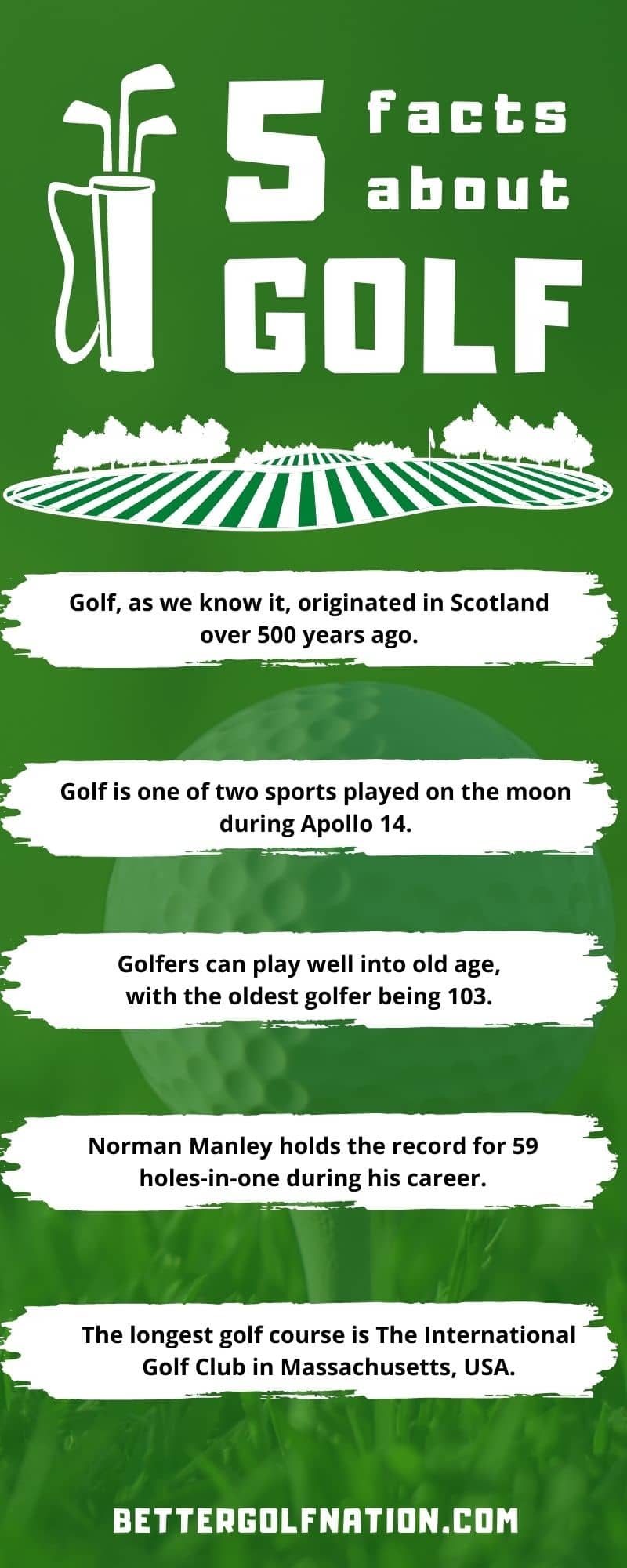
Similar Posts

Understanding Why Golf Uses Bird Names: A Detailed Guide
Why bird names for scoring terms in golf? Bird names like birdie and eagle were introduced to make the scoring system more memorable and enjoyable. They add character and personality to the game, making it engaging for players and spectators alike. Key Takeaways Golf scoring uses bird names such as birdie and eagle to represent…

Discover Why Scramble Golf Is the Format You Need to Try Today!
A scramble in golf is a team-oriented format that balances individual skill with collective strategy. Each player tees off, the best shot is chosen, and all players continue from that spot, aiming for the lowest team score. Perfect for all skill levels, it brings a unique twist of cooperation and shared victory to this typically…

Mastering Fourball: Understanding Golf’s Most Dynamic Format
Fourball is a golf format where two pairs of golfers compete against each other, with each player playing their own ball throughout the round. The best score from each team on each hole counts toward the team’s score. This format requires strategic gameplay and is popular in professional golf tournaments such as the Ryder Cup…

The Slicer’s Dilemma: A Guide on How to Fix a Slice in Golf
Fixing a slice in golf, a common problem where your shots curve sharply due to an outside-in swing path, can be achieved by correcting common mistakes such as improper ball alignment and incorrect grip. This article delves into easy-to-follow techniques and drills to help eliminate the dreaded slice from your game. Key Takeaways Understand that…

Essential Women’s Golf Tips for Beginners
Master the basics of women’s golf with our essential tips for beginners. From choosing the right equipment to perfecting your swing, we’ve got you covered. Start your golf journey on the right foot and enjoy the game to the fullest. Key Takeaways Begin your golf journey with a strong foundation by understanding the basics of…

Guide to Golf’s Golden Eagle: Scoring an Eagle in Golf
An eagle in golf signifies a player mastering a hole two strokes under par, a rare feat often achieved on par-4 or par-5 holes. This term, emerging after “birdie,” symbolizes an exceptional performance, requiring preparation, skill, and confidence. Although a challenging accomplishment, it brings an unforgettable thrill to your golfing journey. Golf enthusiasts, aficionados, and…

Golf Ball Compression Chart (2024 Update)
When you purchase through links on our site, we may earn a teeny-tiny 🤏 affiliate commission.
Finding the right golf ball compression for your game is vital. Compression measures how hard or soft the golf ball is, with lower compression meaning a softer ball. So, let’s see where your swing speed fits in the golf ball compression chart and that will tell you which is best for you (and why).
The golf ball’s compression is the density or tightness of the ball. The lower the compression of a golf ball, the softer they are. If a golf ball is high in compression, it is harder. Low compression balls work best for golfers with a slower swing, giving a golfer more distance with their shots.
Here’s a golf ball compression chart:
[amazon box=”B09MG873G1,B08QSPK6LZ,B07JNVDBHN” grid=”3″]
Let’s compare some different golf ball compression options and see what fits your needs.
Low Compression Golf Balls

Benefits of Low Compression Golf Balls
- Increased distance for slow-swinging players
- Increase ball spin
- Soft for easier ball control
Low compression golf balls have many benefits, especially for beginners, seniors, or people with slower swing speeds. When it comes to selecting the best golf balls for beginners , low compression balls are a great option as they can help golfers with slower swing speeds to achieve more distance and accuracy on their shots.
These golf balls can help with distance and spin. They are softer and compress more easily when you hit them. Because of their softness, these balls release more energy when contacted and therefore travel a greater distance.
Golfers who use low compression balls may have a lower swing speed.
Many golfers recommend starting with low compression balls when you are first learning how to play. This is because the ball’s softness allows you to feel how your shot impacts the ball. This feature is important for beginners to ensure they are swinging correctly.
Downsides of Low Compression Golf Balls
- Golfers used to high compression may struggle to control the shot
- Too much spin can sacrifice distance
Low compression golf balls have downsides, too. If you are used to high compression balls and plan to switch to low compression, you may struggle at first.
Knowing how to control the ball with high compression balls is very different from low compression. So, you will have to rethink some of your strategies when playing.
When it comes to control, low compression balls can give slow-swinging players more control over their shots. However, they can do the opposite for those with higher swinging speeds.
The ball’s softness means it can go farther than you want it to when taking a shot. More distance is not always a good thing in the game of golf.
Golfers Who Would Benefit Most From Low Compression Golf Balls
- Slower Swing Speeds
- Casual Golfers
High Compression Golf Balls

Benefits of High Compression Golf Balls
- Increased distance for fast-swinging golfers
- Optimal control
- Won’t go as high; better for distance
These benefits seem similar to those of low compression golf balls, but there are some major differences. You will only benefit from high compression golf balls if you have a high swing speed. Otherwise, you won’t see any of these benefits.
You may wonder how these changes are possible based on swing speed.
When you hit a golf ball at a low speed, you may need some help from the ball to get the distance you want. This is where low compression can help you improve your distance. If you use low compression balls with a high-speed swing, it will actually decrease your overall distance.
This happens due to the construction of the ball.
The contact will force the ball to contract when you hit a low compression ball. As a result, the ball essentially jumps forward, giving you more distance. If you do this at a high swinging speed, the low compression ball will still compress but not in time with your hit. The delayed compression slows down the ball’s speed.
Downsides of High Compression Golf Balls
- Low distance boost with slow swinging speed
- Feel different from low compression balls
The downsides of high compression golf balls arise for golfers with a slow swinging speed. If you are used to low compression golf balls, these will be difficult to get used to. They have an entirely different feel when you hit them compared to low compression.
You can use these with a slow swinging speed, but you will not get as much out of them as possible. Instead, your ball will not go as far. So, consider that before switching or trying these instead of low compression golf balls.
Golfers Who Would Benefit Most From High Compression Golf Balls
- Intermediate to expert players
- Those trying to increase their swing speed
- Fast hitters who want better control
The Best Options for Low and High Compression Golf Balls

Now that we know the main differences between low and high compression golf balls let’s talk about some of our favorite brands. While there are some clear high and low compression options, you will also find several middle options for you to get the best of both.
Our Favorite Low Compression Golf Balls: Titleist Velocity Golf Balls
[amazon box = “B09MG873G1″ template=”horizontal” description_items=”3″]
If you need a low compression golf ball that can help you get more distance with every shot, we recommend the [amazon link=”B09MG873G1″ title=”Titleist Velocity golf balls” /]
These give you the maximum distance on slower swings without too much spin.
We highly recommend these golf balls for slow-swing players because they tend to fly higher when hit.
Fast hitters do not need the extra height as it will force them to sacrifice distance. However, height can be difficult for slow-swinging players to achieve, so these balls provide a great opportunity to get the ball even higher on your swings.
High Compression Golf Balls We Recommend: TaylorMade TP5 Golf Balls
[amazon box = “B08QSPK6LZ” template=”horizontal” description_items=”3″]
If you are looking for high compression golf balls, try the [amazon link=”B08QSPK6LZ” title=”TaylorMade TP5 golf balls” /]. These golf balls have five layers of material on the inside, allowing you to get the most out of high-speed swings.
From the core to the cover, many parts of this golf ball make it great for those who tend to swing fast.
The dimple pattern on the outside of the ball creates a more aerodynamic experience, allowing the ball to travel further. So, you can still find ways to get more distance from high compression balls, even if it may be a different method.
Middle Compression Option: Wilson Tour Velocity Golf Ball Pack
[amazon box = “B07JNVDBHN” template=”horizontal” description_items=”3″]
We recommend the [amazon link=”ASIN” title=”Wilson Tour Velocity golf balls” /] for golfers with medium swinging speeds.
These golf balls give you the benefits of both high and low compressions without being too hard or soft. This feature is excellent for players who normally use low compression golf balls and are looking to move toward a higher compression without the drastic change.
These golf balls provide a little bit of compression when you hit the ball without being too much and sacrificing distance for those with faster swinging speeds. They also provide a good amount of rolling after your ball hits the fairway or green. So, you can get a lot more distance after the ball hits the surface.
Try these golf balls as a middle ground for those who struggle with low and high compression balls and want something different. They provide good benefits to help your game without being too hard or soft.
Using the Right Compression

Now that we know the differences in golf ball compression, let’s talk about whether or not you’re using the right compression.
It can be difficult to tell what’s right for you as you, the average golfer, probably don’t know your exact swing speed. Even if you do, the speed can change over the years of playing the game as your skills and muscle mass change.
When you see the swing speed of professional golfers, it can be difficult not to want to achieve those speeds. In reality, most golfers swing below 100 MPH (160.9 KMH). So, you may not swing as fast as you think.
How To Find Out Your Swing Speed

- Visit a pro shop
- Take a lesson as they usually have a radar
- Purchase a speed monitor
Each of these options can give you a better idea of your club swing speed . A radar monitor that accurately determines your swing speed is expensive. So, we understand that not everyone can afford that option.
Consider visiting your local pro shop and trying out some new golf clubs for a free option. There, you can measure just how fast you swing.
Once you know your swing speed, you can better determine your appropriate compression. So, let’s break down what your speed means when it comes to compression.
Remember, this number is only an estimate. If you’re close to the limit for any compression type, we recommend trying both to see which works better for your play style.
Final Thoughts on Golf Ball Compression

The golf ball compression you need depends on how you play the game. Check your swing speed to get a better idea of which compression level is best for you.
Switching up the golf ball compression level you use may help you get more distance and better spin. So, consider switching to a different compression level depending on your swing speed.

Meet Kolter, the dedicated golfer driving Honest Golfers forward. His golfing journey started at the young age of 8, guiding him through youth tours, high school, and college golf. With a remarkable stint as a two-time Team Captain at Carroll College, Helena, MT, and participation as a two-time World Long Drive regional qualifier, Kolter's expertise runs deep. Now, he shares his lifelong passion and knowledge, offering sincere advice and gear recommendations to fellow enthusiasts. Embark on a golfing adventure with him, and together, let's enhance our skills on the fairways.
Golf Ball Compression Chart
Our golf ball compression chart makes it easy to find models with your preferred specs, including the spin, height, and price. This guide will also cover what compression does to performance and feel and how to pick the right golf ball for your game.
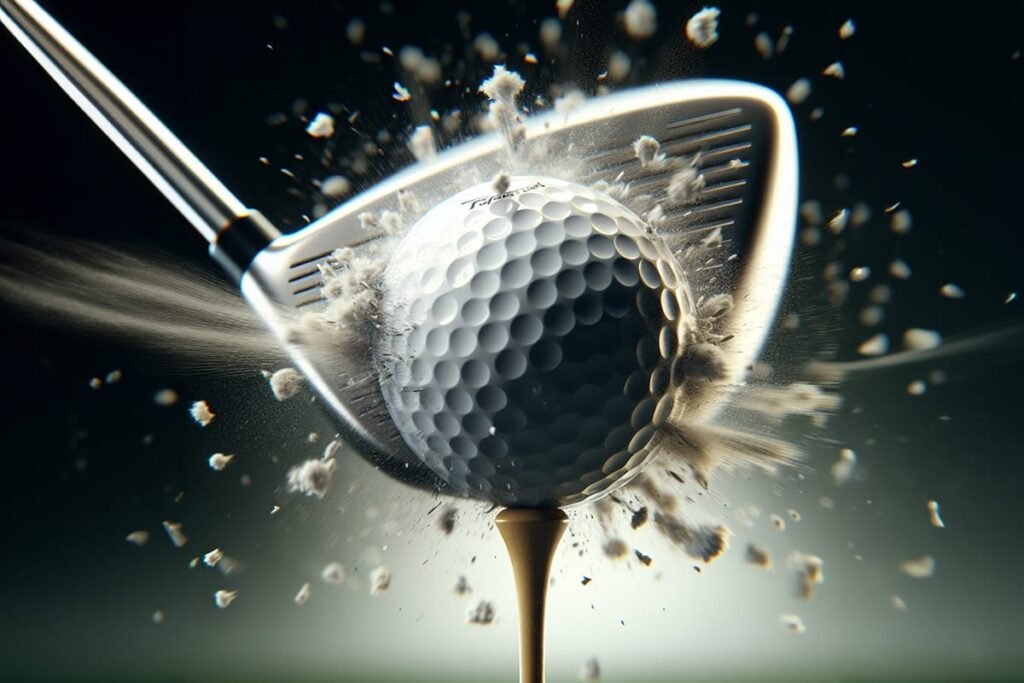
The Truth About Golf Ball Compression
While many believe that your swing speed determines which compression you should play, this isn’t true. Regardless of which ball you choose, you will be able to compress it and hit it fine. The risk is that players with high swing speeds will over-compress a low-compression ball and could be leaving some distance on the table.
You should choose your golf ball based on spin, trajectory, and feel. Higher compression will tend to spin more and feel firmer, but this isn’t always true. Lower-compression balls tend to spin less, so they might go the same distance as a high-compression ball.
All the factors in this golf ball compression chart are rated from 5 (high) to 1 (low). Actual values will vary based on your swing, but the chart should be helpful for comparison.
What Does Compression Do?
The compression level of a golf ball determines how much the ball is deformed under force. The level of compression has the following tendencies:
- Higher compression = a harder feel . This doesn’t always hold true as construction can vary, but it’s mostly the case, so if you like a softer feel, get a lower compression ball (and don’t always believe the branding).
- Higher compression = more distance for fast swing speeds . If you have a lower swing speed (80’s or so), the ball distance won’t vary as much, and you can worry more about forgiveness (which is often lower spin). If you have a higher speed, you may gain some distance.
If you don’t know your swing speed, use a simulator or speed measuring device or check out our golf club distance chart to get an idea of speed based on your club distances.
Compression Chart Image
This chart is also available as an image here:

https://mygolfspy.com/buyers-guides/golf-balls/2023-golf-ball-test/ https://www.titleist.com/fitting/golf-ball-fitting
Share this post
Kyle J. Larson
Comments cancel reply.
Your email address will not be published. Required fields are marked *
Same my info for the next time I comment.
Fairways Scotland

Booking Hotline!
0800 246 1774
Golf Ball Compression Chart & Guide (Updated 2024)

Golf Ball Compression Chart: Matching Ball Ratings with Swing Speed 2024
Understanding the correlation between golf ball compression and swing speed is essential for golfers aiming to optimise their performance on the course. The right compression rating can impact distance, control, and overall feel. In this golf ball compression chart, we’ll explore top ball ratings based on swing speed, helping golfers make informed choices for their game.
Table of Contents
Understanding golf ball compression, what is golf ball compression.
Golf ball compression refers to the measure of how much a golf ball compresses upon impact. It is a crucial factor that directly affects the ball’s performance, especially concerning distance and feel.
Importance of Golf Ball Compression
Selecting the appropriate compression is vital for optimising your game. A properly matched compression ensures that the golf ball deforms correctly upon impact, maximizing energy transfer for an optimal shot.
Golf Ball Compression Chart: Top Ball Ratings by Swing Speed:
Tips for choosing the right compression:.
- Test Multiple Balls: Experiment with different compression ratings to find the ball that suits your swing speed and feels comfortable.
- Consider Feel Preferences: Some golfers prefer a softer feel, even with faster swing speeds. Consider your preference for feel and feedback on each shot.
- Evaluate Spin Rates: Higher compression balls often produce more spin. Assess your spin needs based on your playing style and course conditions.
- Understand Your Swing Speed: Accurately measure your swing speed to align it with the recommended compression range. This ensures you get the most out of your chosen golf ball.
Scotland’s diverse weather conditions can significantly impact golf ball performance. Consider booking a golf trip to Scotland to see how your golf balls perform under real Scottish weather. Explore our Golf Trips Scotland Near You .
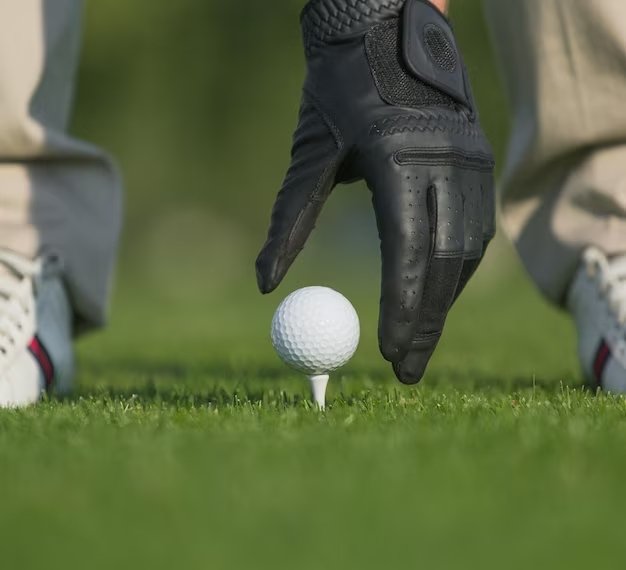
How Do I Know What Compression Golf Ball To Use?
Who should use a low-compression golf ball, 1. swing speed: below 85 mph.
- A soft feel ball that maximizes distance for slower swing speeds.
- Known for its ultra-low compression, promoting straighter shots and increased distance.
2. Swing Speed: 85 – 95 mph
- Provides a good balance of distance, feel, and control for mid-range swing speeds.
- A low compression ball offering a soft feel without compromising distance.
3. Swing Speed: 95 – 105 mph
- A higher compression option suitable for faster swing speeds, providing excellent control and performance.
- Designed for golfers with moderate to higher swing speeds, offering a combination of distance and control.
4. Swing Speed: 105+ mph
- A premium ball with higher compression, delivering exceptional performance for faster swing speeds.
- Known for its higher compression, offering control and workability for high swing speed players.
The golf ball compression chart serves as a valuable guide for golfers seeking the perfect balance between compression and swing speed. By understanding these relationships and considering individual preferences, golfers can make informed decisions to enhance their performance on the course .
Maximize your newly found golf ball performance by taking a memorable golf holiday in Scotland . Check out our exclusive offers on Golf Holidays Scotland Near You .
How to Choose the Right Compression for You?
Assessing your swing speed.
Begin by accurately measuring your swing speed . This fundamental step sets the foundation for determining the ideal compression for your game. Various tools, such as launch monitors , can assist in this process.
Matching Compression to Playing Conditions
Consider the environmental conditions where you frequently play. If you often find yourself on cooler courses, opt for a lower compression ball to maintain flexibility. For warmer climates, a higher compression ball may be more suitable.
Once you’ve chosen the perfect golf ball with the right compression for your game, why not plan a golf break to Scotland and experience some of the world’s most iconic courses? Learn more about our tailored Golf Breaks in Scotland Near You .
Frequently Asked Questions (FAQs) - Golf Ball Compression Chart Guide
Q1: what is golf ball compression, and why is it important, q2: how does swing speed correlate with golf ball compression, q3: how does temperature affect golf ball compression, q4: how can i accurately measure my swing speed, q5: can i experiment with different golf ball compressions.
Choosing the right golf ball is just the beginning; planning how to get your golf gear to Scotland is next. Find out about our transport services Near You for golf tours to make your trip hassle-free

Golf Ball Compression Guide (Read This Chart!)
One of the ways that golfers choose a golf ball is by looking at the compression ratings . Compression ratings vary from less than 40 to more than 120.
If you have heard one of your playing partners talk about the need for a high or low compression ball, we have all the information you need.
Understanding golf ball compression will help you make more informed decisions about the best golf ball to use on the course.
We recently did some testing of several different golf balls based on their compression, and here is what we found.
Golf Ball Compression chart
This golf ball compression chart isn’t an exact science, but it’ll give you all the information you need.
Selecting a golf ball based off your swing speed and the golf ball compression that correlates best with it is one simple way to start improving your game.
Using the chart above, you can search for golf balls that are in your compression range.
What Is Golf Ball Compression?
Golf ball compression measures how hard or soft a golf ball is. A ball with high compression is a bit harder, and it will take more for you to be able to compress the ball.
In other words, you need more strength and power to get the proper results out of a high compression ball.
With low compression, golf balls expect that you will need less swing speed or clubhead speed to get the ball to compress.
However, with having less resistance in your shots, you can expect that these lower compression balls won’t go as far for the faster swing speed player.
It would be simple if fast swing speed players could use a low compression ball and bomb it, but that is, of course, not the way that golf works.
Why Does Golf Ball Compression Matter

Golf ball compression has a big impact on the length of the shot that you can hit. Let’s face it, distance matters.
All golfers should be thinking about the golf ball they choose in terms of its impact on their game. Don’t choose golf balls simply because of the price.
There are performance factors that will greatly impact you based on the technology incorporated into the golf ball.
Low and high compression golf balls can travel a long distance. However, if you want to get the most distance out of your shots, you must use a golf ball that has a compression rating that will match your golf game.
High swing speed players that are looking for distance need to choose a high compression golf ball.
Slower swing speed players looking for distance need a low compression golf ball.
The higher the compression rating, the harder the feel of the golf ball. When you play with something that has a harder feel, expect that it’s going to impact performance on the putting green the most.
Soft feel golf balls are great, but they can sometimes get a bit too soft or even mushy feeling, and that makes it hard for players to adjust their shots.
Pricing/Ball Category
The price of golf balls will range from anywhere around $20 a dozen to more than $50 a dozen.
Although compression and pricing are not directly tied to each other, typically speaking, the higher compression golf balls are the expensive type of golf ball.
One of the things that can add to the compression rating of a golf ball is the number of layers the ball has. With three or even four layers of performance, the pricing of the golf ball increases.
When pricing goes up and compression gets higher, the result is typically a golf ball that is considered players or tour level golf ball.
Lower compression, softer golf balls are generally geared at the higher handicap players or beginners looking for more value type golf balls.
Golf Ball Compression Examples and Ranges
Now that you have a better idea as to the differences between low and high compression golf balls, it’s time to look at some real life examples.
Some golf balls will advertise their compression right on the packaging, while others will make you do your own research to find it.
Piper golf balls, for example, make it super easy to find the right golf ball compression for your swing speed.
Low Compression Golf Ball (Less than 40-65)
There are no hard set guidelines on what is considered low compression and what is considered high compression. Based on the overall options on the market, we consider anything less than 65 to be a low compression golf ball.
The lower compression balls are soft around the greens. They are typically considered distance golf balls, and most will be advertised as having a softer feel.
In addition, low compression golf balls are often very fairly priced and have branding geared at the slower swing speed players. Seniors, women, and new players are going to have plenty of low compression golf ball choices.
Low Compression Golf Ball to Try: Callaway Supersoft

In fact, it is one of the lowest compression golf balls, not just in the Callaway lineup but in any golf manufacturer’s lineup.
Callaway Supersoft golf balls are soft, they are relatively easy to compress, and they make a great option for a slower swing speed average golfer or even a new player.
With the Supersoft, you may notice that there is some trouble with getting the ball to spin around the greens. This is common with a lower compression golf ball; very few have the same high spin capabilities that you see from companies like Titleist and Bridgestone.
Overall if you are a slower swing speed golfer that wants a little more distance off the tee, the Callaway Supersoft could do the trick.
Other Low Golf Ball Compression Examples:
- Srixon Soft Feel
- Callaway Superhot
Medium Compression Golf Ball (66-85)
Medium compression golf balls are built for the medium swing speed golfer. Many of the medium compression balls are three-piece models that have some great feel and a mix of spin and distance technology.
Many of the medium compression golf balls are average-priced balls. Most players that switch to something like this will notice that there is a bit more spin and workability built into the golf ball.
Players that have slightly higher swing speeds or average swing speeds will benefit the most from the medium compression golf ball.
Medium Compression Golf Ball to Try: TaylorMade Tour Response

TaylorMade Tour Response is my favorite medium compression golf ball. The Tour Response has gone through some rigorous testing in the last few years, and it is still one of the best sellers for TaylorMade.
Essentially TaylorMade took their impressive TP5 golf ball and eliminated a few of the layers, and they came up with the Tour Response. This is like a three piece version of the high performing five piece golf ball.
What players got in return was a mix of feel and distance that makes this is a really great choice for a large majority of players.
Golfers with fast swing speeds who are playing in colder weather will find that the Tour Response helps them stay within the same general distance ranges.
In addition, slower swing speed golfers who are working on getting their speeds up a little have noticed that the TaylorMade Tour Response gives them the added spin and control boost they need.
Other Medium Golf Ball Compression Examples:
- Wilson Triad
- Titleist Velocity
High Compression Golf Ball (85+)
High compression golf balls are the player’s golf balls. These are the most difficult to compress and require the most clubhead speed in order to hit far.
Almost all golfers on professional tours are using high compression golf balls. The higher compression also means that they re getting a few extra layers of performance.
The four and five piece golf balls can allow golfers long distances off the tee while still maintaining high spin rates around the green. Don’t be surprised when you start spinning your iron and wedge shots back when using a high compression golf ball.
High Compression Golf Ball To Try
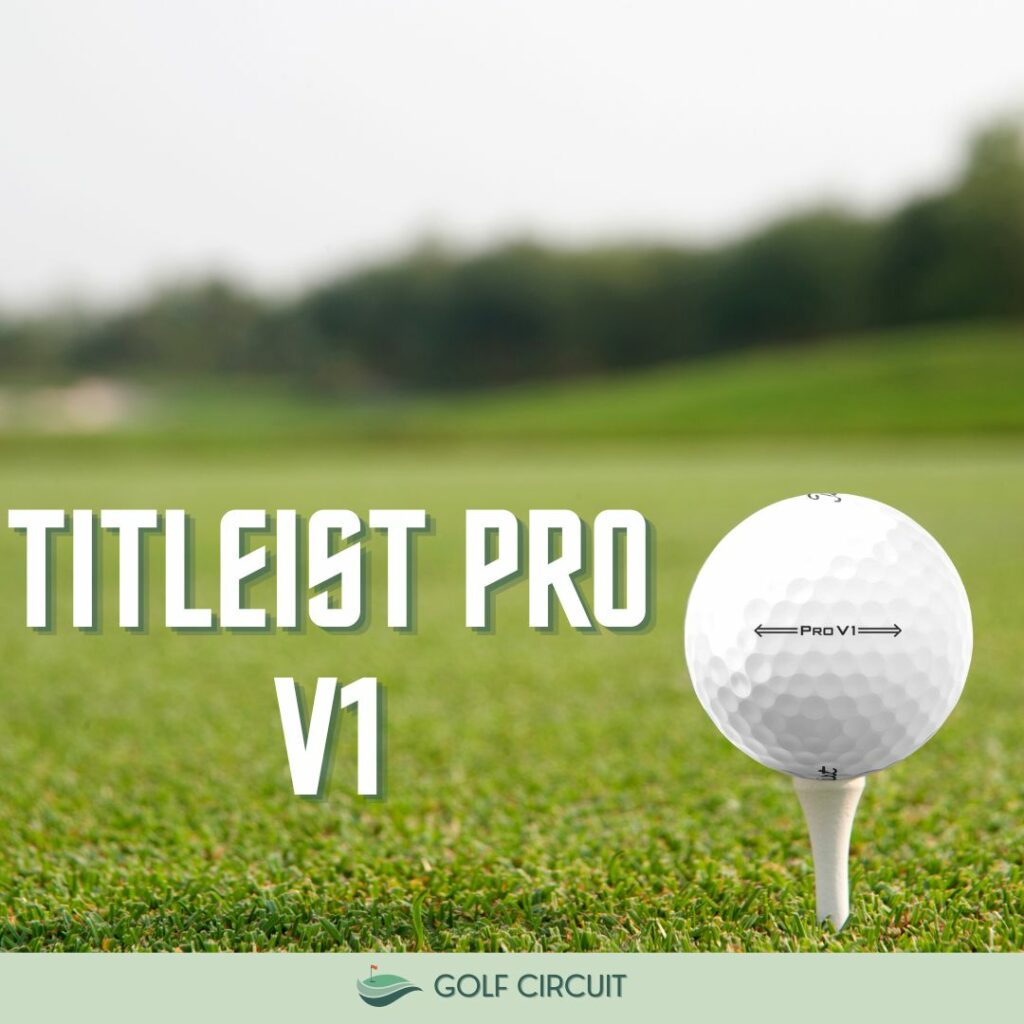
Perhaps the most well-known high compression golf ball in the game, the Titleist Pro V1 allows players plenty of extra distance and some of the best spin in golf. High spin shots make it easier to control where the ball lands and therefore improve overall accuracy.
Of course, the pricing of a Pro V1 golf ball is the downside. The Pro V1 is one of the more expensive golf balls in the game.
However, for golfers with high swing speeds that need extra compression, the pricing will be well worth it.
Other High Golf Ball Compression Examples :
- Mizuno RB Tour X
- Callaway Warbird
Frequently Asked Questions
Golf ball compression is a commonly misunderstood feature of the game of golf.
Here are some of the things you should know about the compression of your golf ball before you make your next purchase.
What is a good compression for a golf ball?
Compression is not good or bad; instead, it has to match your abilities on the golf course. A high compression golf ball, like a 90 compression ball, is best for faster swing speed players. A low compression ball around a 60 is good for slow swing speed golfers.
Do lower compression golf balls go further?
Lower compression golf balls can go further if you have a slower swing speed. Golfers with high swing speeds will not hit a lower compression golf ball very far.
What compression are Pro V1 golf balls?
The compression of the Pro V1 is between 88 and 90.
Does golf ball compression really matter?
Golf ball compression only matters in the way it impacts your performance. If a golf ball has a low compression, it does not mean its low quality; it’s simply designed for a certain type of player.
Hopefully, you have learned enough about golf ball compression to realize that it’s worth considering before you make your next golf ball purchase.
Don’t buy something that is simply cheap, as the compression may not be enough of a match for what your golf game needs. Instead, choose golf balls that fit the specific needs of your game.
Specifically, the faster you swing the golf club, the higher the compression you should be looking for. If you can’t find the compression of your current golf ball on the box, do a quick google search, and you should find something quite easily.
Similar Posts

Perfect Feel: Callaway Supersoft Golf Balls Review
In-depth overview of Callaway Supersoft golf balls. Golf is an immersive game; you can’t simply pick up a…

Guide to Srixon Soft Feel Golf Balls
Srixon has been around for quite a while, yet, they keep improving their golf balls line, with their…

We Tried All 4 Mizuno Golf Balls (They Were Amazing)
This is our in-depth review of 4 Mizuno golf balls. Whether you are new to golf or a…
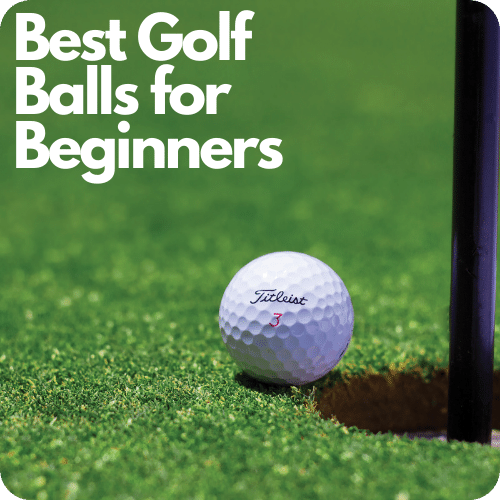
The 10 Best Golf Balls For Beginners in 2023
With dozens of manufacturers and hundreds of different kinds of golf balls, it can be tough to know…
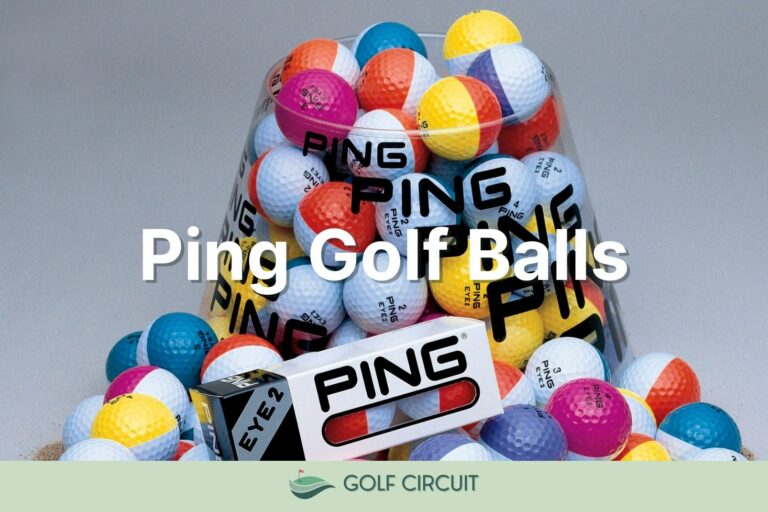
Ping Golf Balls: Why Are They So Expensive in 2023?
Golf, like every other sport, has a diverse fan base that enjoys the nuances of the game, and…

Titleist Velocity Golf Balls Review: Great In 2023
This is our in-depth Titleist Velocity Golf Balls Review. To the novice, it might seem like all golf…
Leave a Reply Cancel reply
Your email address will not be published. Required fields are marked *
Save my name, email, and website in this browser for the next time I comment.
Top 50 Equipment Choices
- Club Fitting
- Personal Lesson
- Ball Fitting
- GOLF TIPS How To Play: Beginner Tips Golf Drills & Swing Tips Golf Swing Tips Golf Shots & Swing Setups Golf Exercises & Stretches Mental Golf Golf Magazine Online Golf Workouts: Your Health Bunker Golf Tips Golf Alignment Sticks
- GROUPS Pro Golfers Signature Shots Pro Golfers Swing Sequence Better Golf Watching the Pros PGA Tour Players Signature Move Golf's Greatest Teachers Ladies Golf Tips Left Handed Golf Tips Senior Golf Tips & Lessons PGA Players On Course Golf Video Lessons
- EQUIPMENT Drivers Tips Fairway Woods Tips Hybrid Tips Irons Tips Wedges Tips Putting Tips Comparison Charts Best Golf Hybrids Chart Best Golf Irons Chart Best Golf Putters Chart Best Golf Shoes Chart Best Golf Bags Chart Golf Balls Golf Ball Custom Fitting Golf Ball Reviews Golf Ball Compression Chart Golf Ball Comparision Chart Golf Ball Layers Chart Golf Ball Dimples Golf Ball Spin Chart Golf Ball Cover Chart Golf Ball Core Chart Golf Ball Price Chart Top Rated Golf Balls Reviews Golf Iron Reviews Golf Hybrid Reviews Golf Club Reviews, and Test Golf Ball Reviews Golf Glove Reviews Golf Bag Reviews Golf Push Cart Reviews Golf Putter Reviews Golf Shoe Reviews Golf GPS Reviews Golf Shaft Reviews Golf Club Sets Reviews Golf Course Reviews Golf Equipment News Golf Equipment Choices Golf Training Aids Thomas Golf Reviews
- GUIDES Golf Grip Golf Club Fitting Golf Practice Golf Techniques Golf Questions Answered Golf Quiz United States Golf Courses Canada Golf Courses United Kingdom Golf Courses Golf Course Reviews Golf Course Map Unlimited Free Golf Tips & Lessons
- INFO Home Golf Terms Golf Shop Golf in the USA Golf Videos Golf Rules Golf Tours List Golf Jokes Golf News All For Golf History of Golf Handicap Calculator Key Principles of Golf
- SEARCH ARTICLES
- SHOT TYPE Driving Woods Hybrids Irons Bunkers Chipping Putting
- GAME IMPROVEMENT Shot Setup The Golf Swing Practice & Drills Playing Conditions Mental Game Alignment Sticks Questions Answered
- GROUPS Greatest Teachers Pro Golfers Beginners Seniors Ladies Left Handed
- INFO Golf in the USA Personalized Lesson Ball Fitting Club Fitting
- SEARCH VIDEOS
Golf Ball Compression Chart & Rank 2024

Golf Ball Compression Chart and Rank
Everything You Need To Know About Golf Ball Compression
For detailed articles about golf ball compression, explore the tabs above. To find the compression rating of a specific golf ball, explore the chart below. (You will also find some great info below this chart)

Of all the variables that determine a golf ball’s performance, compression may be the most mysterious. What, exactly, is compression? It’s a measurement of how much a ball compresses against the clubface at impact, expressed as a simple number (e.g. 75 or 100). If you’ve seen photos or slow-motion video of the moment of impact, you’ve seen the ball compress or smush against the clubface. The ball launches as this compression is released.
Sounds simple enough, and it is… on the surface. There’s at least some disagreement, however, on the role of compression in how a particular ball performs for different golfers.
In recent years, manufacturers like Bridgestone and Wilson have put a major emphasis on compression, with the goal of fitting each golfer with the ball best suited to his swing speed and skills . The idea is that golfers with slower swing speeds have an easier time compressing a lower-compression (softer) ball, therefore getting more distance than they can with a high-compression tour model .
It stands to reason that a softer ball will compress more than a high-compression ball, right? Most analysts think so. And nearly every company makes golf ball models of different compression ratings aimed at golfers of different swing speeds.
The lone dissenter: Titleist . The world’s No. 1 golf ball manufacturer insists compression isn’t important when fitting golfer to golf ball. Titleist argues that there’s little discernible difference in how much a tour pro and a rank amateur compress the ball, regardless of the ball’s compression rating. Instead, Titleist focuses on feel, backspin, accuracy, trajectory and greenside responsiveness in its fitting recommendations.
So who’s right, and who’s wrong? As of early 2014, there’s no definitive answer. But most of those in-the-know tend to sway toward the compression matters camp.
For the sake of argument, let’s assume they’re correct.
Which Compression is Right for You?
Should you play a high-compression ball (rated 90-plus), a mid-compression ball (66 – 89) or a low-compression ball (65 or less)? That depends on your performance preferences. But let’s assume that, like most amateurs, driving distance is a key concern.
If you swing the driver at 105 mph or faster: You’ll generate good distance from any ball. While you may get a few extra yards from a mid- or low-compression model, you could also hit it too high with excess spin, resulting in a lack of control. Your best bet – a high-compression tour or premium model .
If you swing between 85 – 104 mph: On the higher end of this range (95 – 104 mph), a low-compression ball could create control issues. Your best bet likely lies among the mid-compression models. On the lower end (85 – 94 mph), control should be less of an issue if you pick a low-compression ball. Still, a mid-compression model could be a better fit.
If you swing slower than 85 mph: Definitely try a few low-compression golf balls. Compare them against each other, and against some mid-compression varieties. In this swing speed range, control isn’t a huge issue – but every yard matters. There are plenty of distance golf balls that could serve your needs well.
To be sure, compression isn’t the only factor affecting a golf ball’s length. Its core, cover and mantle materials have an impact, as do dimple shapes and patterns. And, just because you hit Ball A farther than Ball B doesn’t necessarily make A your best bet. You may prefer the flight and spin characteristics of B, or simply like the way it feels coming off the club.
In other words, compression isn’t the be-all, end-all of golf ball fitting. But it is a variable you should take into account.
This site features a Free Golf Ball Fitting Service as well as in-depth Golf Ball Tests and Reviews . Happy hunting!

Basically, the ‘compression’ rating of a golf ball is a number that relates to that ball’s ability to be compressed. Low compression golf balls require less force to have their size compressed than do high compression golf balls. When you hit a golf shot, the ball is actually deformed for a fraction of a second at impact. This happens far too quickly to be seen live, but it can easily be observed with the use of a high-speed camera. The ball is ‘squished’ up against the club face before restoring to its usual round shape as it launches off into the air. If golf balls were too hard to be compressed, they wouldn’t fly very far at all – imagine hitting a rock with your club, and think about how far it would go (and how much it would hurt your hands). Golf ball compression is important because it provides the ‘spring’ that allows golfers to hit the ball 250 yards or more.
So, which is better, low compression golf balls or high compression golf balls? If only it were that easy. As you might suspect, the right golf ball for each individual is going to vary on a number of factors. Some players are going to be better served with a low compression ball, while others need to use high compression. The process of determining which ball is right for you doesn’t need to be too difficult, but it will take a little time and some critical thinking. Once you figure out which golf ball compression is going to be right for your swing and your game, you can move on to solving other problems and continuing to lower your scores.
When looking at golf ball compression ratings, it is important to understand the scale that is used. Ratings in the range of 70 and below represent softer golf balls with a low compression rating. From the 70-90 range is what would usually be considered a medium compression golf ball. High compression golf balls are those that are rated at 90 and above. It should be noted that the compression is only one aspect of the overall ‘feel’ of a golf ball, so you might not be able to tell the difference between compression ratings just by hitting a couple shots. It is possible for an 80 compression ball to feel similar to a 90 compression depending on the other characteristics of the ball.
If you are able to get a grasp on what is meant by golf ball compression ratings, and how they affect the performance of the ball, you should have an easier time picking out the right golf ball for you. Of course, it is always best to test golf balls out on the course when you have the opportunity before buying a full dozen of them to add to your bag. Use compression, along with other factors, to create a list of possible options for your game and then test them each out one by one.
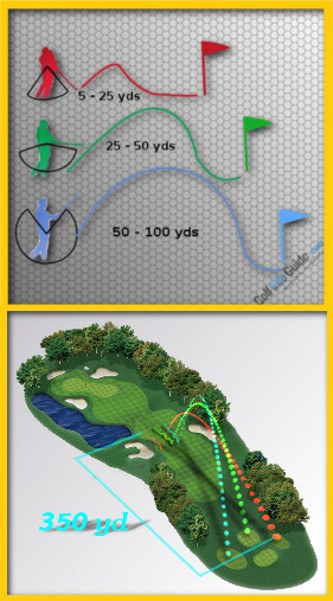
You might be surprised to learn, then, that the pros actually play high compression golf balls. Why would they do that? If they want to blast it off the tee and reach the par fives in two, shouldn’t they be using a low compression ball? No. The average professional golfer doesn’t need any help hitting the ball farther than they already do, so they use high compression balls because of the control they offer. Soft golf balls can become extremely difficult to control when they are hit at high speeds, so pros use high compression balls that they can successfully manage around the course.
It comes down to a balancing act when trying to figure out which compression is going to be right for you. Maximizing distance is always appealing, but it won’t do you any good if it comes at the expense of your accuracy. You need to find that ‘sweet spot’ where you are getting good distance off the club face but the ball is still going where you expect it to (for the most part). This is very similar to the game that you have to play when picking out a shaft for your driver – soft enough to get distance, firm enough to maintain control. Technology in the way of club and ball fitting can help you answer these questions to a point, but you will also need to do some trial and error until you are sure of your decision.
The best way to start is by thinking about the ball you are using currently on the course. Find out what compression rating that ball has, and think about the performance that you have been getting from it. Are you happy with the ball flight? Do you think the distance is acceptable, or should the ball be going farther based on the swing you are making? Doing some golf ball compression comparison shopping with other balls on the market will give you the chance to try out some other models before deciding whether or not you need to switch. Remember, just like with any other equipment in your game, it will take some time to adjust to a new golf ball. If you have a club tournament or other important round coming up, it might be best to wait until after that is over to experiment with new golf balls.
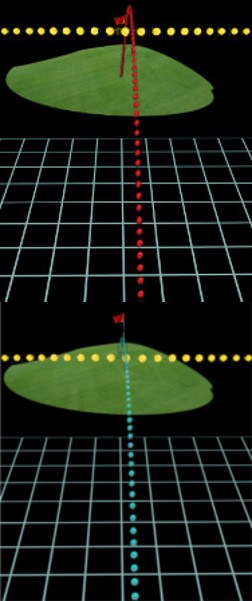
Following are three things to look out for as warning signs that you are playing the wrong compression.
- Lacking distance compared to your playing partners. If you are golfing regularly with the same group of friends and notice that your ball seems to fall short of theirs on a consistent basis, take a look at what golf balls they are using. Do a golf ball compression comparison between your ball of choice and theirs to see what the difference might be. It could be that they simply have a higher swing speed than you do, and therefore are outdriving you. However, if the swing speeds are similar, it could be an equipment problem.
- Ball flight that is too high. One sure sign that you are using a golf ball with a compression rating that is too low is a ball flight that climbs exceedingly high into the air. There is nothing wrong with hitting a high ball flight, but there is a limit to how high you can hit the ball productively. At some point, the extra height just means there is too much backspin on the shot, and you will be losing distance and control over the shot. When a golf ball is too soft for your swing speed, it will spin at a high rate and the results will not be desirable.
- Ball flight that is too low. At the same time, a ball that is too hard will result in a flat ball flight because you don’t possess the necessary swing speed to compress the ball properly. Some harder golf balls will lead to quickly diminishing returns for players with low swing speeds that can’t really compress the ball on the face of the club to create that spring-like effect. If your best swing leads to a shot that is low and flat flying through the air, look to find a softer golf ball that will help you create some backspin and some loft on the shot.
Once you start to suspect that your golf ball compression is wrong and it is costing you on the course, you should immediately look at alternatives that could improve performance. The best idea is to start within the same brand of golf ball that you are currently using by trying their other models. Most golf ball companies have a range of compressions within their product line, from balls meant for beginners on up to their tour-level ball. Move up or down that spectrum depending on your needs and see if that solves the problem. If there isn’t a proper choice within the product line of the current company you are using, feel free to shop around until you find something that works.
Remember that your golf ball should perform properly off of all of your clubs, not just the driver. You want to be able to hit long and straight drives off the tee as frequently as possible, but you also need to hit good iron shots with the same ball. The right choice is going to be the one that provides you with a good ball flight no matter which club you are using, or what kind of shot you are trying to hit. Simply picking the ball and the compression that gives you the most distance off the tee might not leave you with a ball that optimizes iron play performance. Again, it is a balancing act. Make sure you take all clubs into the though process before making a final choice.
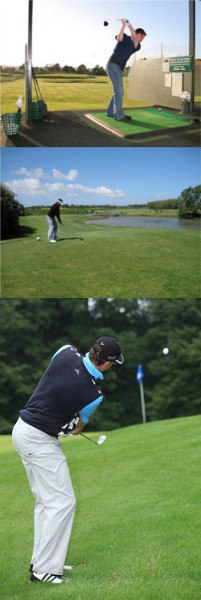
For most golfers, softer compression is going to equal more spin and a higher ball flight. Look in this direction if you live in a dry and warm climate where the weather is ‘golfer-friendly’ most of the year. You won’t mind launching the ball high into the air because the conditions are good, and you will appreciate the stopping power that the ball has when it comes down on the green. Playing a hard golf ball on hard conditions is going to require a specifically high club head speed in order to spin the ball enough to maintain control.
Those of you living in cooler and wetter climates want to take the opposite approach and consider using a harder ball. Most players will have a lower ball flight with a harder ball, which is helpful because cool and wet climates tend to have other adverse weather conditions to deal with on the course, such as wind. When the weather turns ugly, you want to be able to keep the ball as close to the ground as possible throughout the day.
In reference to course conditions are strategy, there are a few other tips that could benefit you when picking out the right golf ball compression for your game.
- What kind of course do you play? In addition to the weather conditions in your area, you can also think about the style of golf course that you play and what shots work best on that layout. Courses that have small, well-guarded greens will usually be best handled by high spin golf balls. For courses with large greens and plenty of room to run the ball up onto the green, a lower ball flight might be just fine.
- What style of golf you do you play? Different golfers have different styles, and the golf ball you use should match your style. If you game is based around the short game, make sure your ball choice suits your short game technique and that you are comfortable putting and chipping it. If you are a power-first type of golfer, use a ball that helps you achieve as many yards as possible off the tee.
- What are your goals in golf? The vast majority of low handicap players, along with professionals, use a high compression golf ball because of the control and versatility that they offer. If you have designs on getting your handicap down into the low single digits, consider using a high compression ball even if it isn’t optimal at first. You can work on your game and ‘grow into’ the ball over time. However, if you are just hoping to shave a couple strokes but don’t expect to ever be a low single digit handicap player, a softer ball may work just right.
There is no one-size-fits-all approach to picking out a golf ball. You need to take into consideration a great number of variable, in addition to trying so different models for yourself. Only when you have reviewed all of the options on the market and thought about the kind of game you want to play will you be able to make the right choice.

Most golfers are going to appreciate the feel of a soft cover more than a firm one when it comes to the short game. A soft cover will allow you to be more aggressive with your short game strokes and put a little more backspin on your chips and pitches. While this is the common preference among most golfers, you don’t have to agree if you have a different feel for your shots. Try various golf balls until you find ones that perform just right on your short shots – even if it isn’t the one that is the most popular pick among other golfers at your local course.
Try the following tests to settle on the right golf ball for your short game –
- Stopping power test. Take three different golf ball models to the practice chipping green and place them on the fairway cut of grass. Pitch each ball 10 or 15 yards onto the green and see how quickly they stop after landing. It will probably take a few trials until you can get a definitive result as to which ball spins the most for you on your pitch shots. Usually, you will want to use the ball that spins the most on these shots so you can get up and down from more places.
- Short putt test. Making short putts is often about having the right feel between your putter face and the ball. You want to be confident in how the ball is going to leave the face and roll toward the hole. Try hitting a series of short putts with each of the three different ball models you used in the test above. See which ball you can make the most putts in a row with, and which ball feels the best coming off of your putter.
- Bunker shot test. Don’t forget to evaluate how the ball is going to react when you play shots from the bunker up onto the green. Hit shots with all three golf ball models you are considering and make careful note of how the ball reacts when it lands and rolls out on the green.
None of these tests individually are going to tell you which ball you should use. Instead, you will have to take the results from all of them, along with the ball flights that you are getting, before you can pick a winner.
Share This Page
Your information has been received.
(We respect privacy and keep all emails confidential)
You have reached the maximum number of submissions for today.
Equipment Spotlight: Premium brand Thomas Golf - Custom golf clubs with Shot Accuracy Technology
Drivers | Woods | Hybrids | Irons + Wedges | Putters | Chippers | Accessories | Clearance
New Golf Lessons Delivered Each Week
- Please enter a valid email address.
New Product: Hybrid Mini Driver

AT705 Driver 10.5° Right Hand
AT705 Driver 10.5° Left Hand
AT725 Driver 10.5° Right Hand

Pete Styles PGA Pro Instructor
I Will Improve Your Game!
10,000+ videos by PGA Pros
Improve Your Game Fast!

Hybrid Golf Clubs
#1,2,3,4,5,6,7,8,9,PW,GW,SW,LW Right Handed / Left Handed
Only $129 each Includes Free Pro-Fitting Service

AT705 Hybrid Mens
AT705 Hybrid Ladies
AT725 Hybrid Mens
AT725 Hybrid Ladies
My Account | Sitemap | Support This Site | Suggest A Tip
Golf Info Guide copyright 1998-2024, Privacy Policy
Golf Ball Compression Chart – Everything You Need To Know
- Last updated on October 20, 2021
With this article, we want to make sure you know your facts about compression.
With so many options to choose from, it’s easy to choose based on eeny miney mo. But after reading this, you will know exactly what you’re looking for.
Information and knowledge are so much more important in golf than other sports. Educating yourself will be the best way to lower your scores .
What Is Compression?
The first thing to do before choosing the proper compression is to understand exactly what compression means. This word gets thrown around a lot, but most golfers don’t understand its purpose.
Compression refers to how much the ball flexes or “smushes” against the club face at impact. When you see a slow-motion shot of a driver hitting a golf ball , it actually bends the ball. When it expands again, it’s launched off the club face.
The measurement of compression is how much the ball flexes. High compression means it does not flex as much, and low compression means it flexes a lot.
How Does It Affect Your Game?
Compression affects your game mainly off the tee . It can either help or hurt your distance. You won’t have to worry about compression on your wedges and high lofted irons as much. At those swing speeds , you’re not producing enough force to flex the ball.
Low compression balls will flex more, thus giving you more distance . High compression balls won’t flex as much but tend to provide you with more control.
How To Choose Compression?
To choose the correct compression, you must evaluate your game honestly first. Knowing how you swing the club and your strengths and weaknesses will determine the best compression for you.
Skill Level
We are all at different stages of our golfing careers. Beginners will require a much different compression than those who are more experienced.
A more skilled player will not require as much flex. They already produce the speed necessary to gain adequate distance. They are looking for more control or a softer feel around the greens.
New golfers will benefit from low compression balls to try and gain every bit of yardage they can. Control is not as big of an issue at this point in their career.
Swing Speed
Your swing speed is a significant factor when choosing compression. This will directly influence how you compress the ball and how you can take advantage of it.
No matter your skill level , if you swing at a lower speed, then a low compression ball will benefit you the most. You will be able to get the ball to flex more and thus get more distance.
At a higher swing speed, you will flex the ball no matter what compression it is. At this swing speed, it’s best to get a high compression ball that won’t flex as much. You can keep control of the ball flight more with this option.
Weather plays a huge role in how your ball reacts. Not just for compression but for other factors as well that could be a whole other article on its own. Weather affects your compression choice on a broader scale. It all depends on where you play the most.
If you play in colder weather, getting a low compression ball will help the most. At colder temperatures, the ball firms up and makes it hard. The harder it is, the more difficult a time you have trying to get it to flex.
This stands true for all levels of golfers. Even the skilled players may consider switching to a lower compression ball for a round in the cold weather. They don’t have to go to the other end of the spectrum but reducing the compression a little bit could make a huge difference on days like that.
Which Companies Focus On Compression?
Just like golf clubs , some companies place more importance on compression than others. Everyone researches differently and sees the game from a different view. This is the beauty (and the frustrating) part of the game.
Companies That Focus On Compression
Bridgestone and Wilson are the two ball makers that put the most work into getting each golfer the proper compression. Their research shows that matching your skill and swing speed to the correct compression will help you the most.
Bridgestone is at the forefront of golf ball fitting. They have developed a system to get each golfer a custom ball as close to perfect as possible. They have a vast selection of balls ranging in all types of characteristics, not just compression.
Companies That Do NOT Focus On Compression
The most notable company that does not spend time on researching the effects of compression is Titleist.
As the most popular ball in golf for over a decade, you may want to side with them and give up on this article and compression talks altogether. Before you do, it’s essential to know that they still do have different compression balls. Just because they don’t market compression the same as other companies do, doesn’t mean they neglect it entirely.
The ProV1 is a lower compression ball than their ProV1x model. Titleist chooses to focus more on feel around the greens, control with your irons, and level of spin produced.
So Which Compression Is Best For You?
Just like choosing clubs, the best way to find the right ball for you will be to test a few of them out. Use a high compression ball for a whole round, then use a low compression ball for the next. Taking a ball on the course is an accurate measure to see if it suits you or not.
If you’re lucky enough to have a Bridgestone fitting center at your local driving range, then that’s even better. You can save a lot of time and speak with a professional about your specific needs.
In general, a lower swing speed will benefit most from a low compression ball. Control is less of an issue at those speeds, and you will want to get as much distance as possible. Higher swing speed will be able to compress any ball with the speed they generate. They will be looking for more accuracy and control around the greens.
Compression Breakdown
Here is a handy chart to help you determine where you fall on the compression scale.
Swing Speed Under 85 mph — At this speed, control should not be as big of a concern as distance. These golfers will benefit most from a low-mid compression ball to squeeze every last yard possible out of your drives.
85 mph – 94mph — Here is where you can start experimenting with either low or mid compression. Monitor your ball flight and how the ball spins. Different brands come with different characteristics. Match your swing and natural tendencies as best you can by experimenting.
95 mph – 104 mph — If you fall into this category, then the low compression golf balls will start hindering your ball flight more than helping it. A mid-compression ball will probably suit you best but test some high compression balls as well.
Over 105 mph — High compression will most likely be your best option. At this speed, you will compress any ball sufficient enough to get the distance. A loss of control will offset the little distance you gain from a low compression ball. Stick to a high compression ball to get the best of both worlds.
Compression Chart
Other factors to consider when choosing a ball.
Compression is not the only thing to consider when choosing a ball. There is a lot of science that goes into making a ball so that you can find one that compliments your playing style over your entire game.
This part of the ball is highly regulated, and there are specific rules about dimple dynamics that all manufactures must adhere to.
Dimples are the main factor contributing to speed. A basic explanation is that a smooth golf ball will not travel as far because it creates more drag. A low compression ball will have its dimples closer together to try and max out the amount of distance you can get.
Dimples further away will reduce distance slightly but offer more control and less spin. This design is usually found in higher compression balls.
There are two main types of golf ball covers;
Surlyn — This is the firmer of the two and will be found on range balls and other low compression balls. It has been used since the mid-1960s and offers low spin and lots of durability.
Urethane — More commonly seen in higher-end balls, urethan is softer. It offers much more control around the greens as it has a softer feel to it. For playing fast and hard greens, this will be the best option.
The core drives compression, which refers to the overall density and firmness of the ball. Higher compression balls are generally for more experienced golfers with faster swing speeds.
Golf balls briefly transform shape at impact, and the core needs to support this energy transfer. Golfers with slower swing speeds looking to gain distance tend to lean toward lower compression golf balls. They will maximize the spring-like effect created through impact.
Some companies choose not to acknowledge compression, but we think it should at least be considered, especially if you are a more skilled player looking to get your ball flight as optimized as possible.
Even if you are a beginner, we hope you now understand compression and how it can help you.
Ultimately nothing can replace practice. Having more experience will also work to your advantage. Hopefully, when the topic of compression is brought up at the 19th hole, you will be able to join the conversation.
Clint McCormick
Best glow in the dark golf balls in 2024, callaway chrome soft vs. supersoft – 2024 pga pro review, best driving irons in 2024 – straighter and further off the tee, best golf balls for mid-handicappers, best golf irons for mid handicapper in 2024 – expert review, best japanese golf driver 2024 – pga pro review, save 30% on your next order.
We have partnered with GlobalGolf.com to offer you the best deals for Golf Clubs and accessories! Click on the button below the view their offers.
Automated page speed optimizations for fast site performance

Golf Ball Compression Chart: Based On Swing Speed And Skills
Golf ball compression plays a crucial role in how a ball reacts when struck. Choosing the right golf ball compression can significantly impact your game, as it influences distance, spin, feel, launch angle, and other important factors.
It’s essential to recognize that not all golf balls are created equal, each brand and model come with different compression ratings. Therefore, considering golf ball compression chart is important when purchasing golf balls.
I. What is golf ball compression?
Golf ball compression is the measure of how much a golf ball deforms and changes shape when struck by a club . It describes the interaction between the clubface and the ball’s core. The lower the compression, the softer the ball, and the higher the compression rating, the harder the ball. Typically, the golf ball compression ranges between 30 to 120.
- Softest golf ball: 30
- Hardest golf ball: 120.
II. Compression ratings based on swing speeds
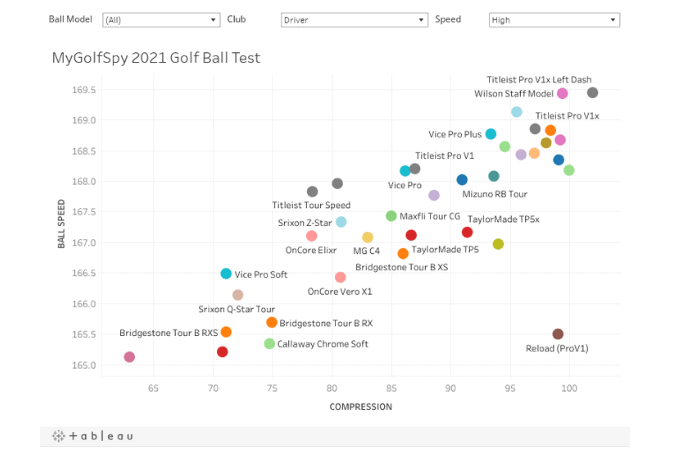
To better understand the right golf ball compression for your game, you should consider your swing speed. The below table will help you to decide the right golf ball compression for your game.
III. Golf ball compression chart: Popular golf balls
Here is a comprehensive golf ball compression chart featuring popular golf ball brands available in the market, classified into three categories: high, medium, and low compression golf balls.
1. High compression golf balls
2. medium compression golf balls, 3. low compression golf balls, iv. features that affect golf ball compression.
The compression of a golf ball is affected by various features, such as:
Golf balls can have different layer constructions, ranging from 2-piece to 5-piece . The number of layers affects the ball’s compression. 2-piece golf balls, with a single core and outer cover, are typically low compression and easier to compress.
On the other hand, golf balls with more layers, like 5-piece balls, tend to have higher compression, requiring more force to compress fully.
The core is the central part of the golf ball and is responsible for storing and releasing energy upon impact. The density of the core influences the ball’s compression. A denser core results in a higher compression ball, requiring more swing speed to compress and activate it fully.
The outer cover of the golf ball is made from different materials like Surlyn or Urethane , which can affect compression.
- Surlyn, being a harder material, tends to create higher compression golf balls, offering more distance and durability.
- Urethane covers, being softer, lead to lower compression golf balls that provide more spin and control on shots.
V. External factors that affect golf ball compression
External factors can indeed have a significant impact on golf ball compression. Two of the main external factors that affect golf ball compression are weather conditions and altitude:
1. Weather conditions
Weather conditions, specifically temperature, significantly impact golf ball compression. Cold weather stiffens the ball’s materials, increasing compression and making it feel harder. Conversely, hot weather allows for easier compression, resulting in a softer feel.
Golfers in colder climates may prefer softer golf balls with lower compression for better performance and feel.

2. Altitude
Altitude affects golf ball compression due to lower air density. At a higher-altitude golf course, there is less air resistance, allowing the ball to travel farther with less effort.
To maintain control over shots, golfers need to use golf balls with higher compression, offsetting the reduced drag and ensuring a stable flight path.
VI. Understanding how golf ball compression affects your game
The compression rating influences the golf ball’s performance in different ways. Let us take a closer look at how golf ball compression affects various aspects of your game:
1. Impact on feel
Golf ball compression directly affects how the ball feels upon impact with the clubface. High-compression golf balls generally feel harder, offering a firmer sensation during contact.
Conversely, a low compression ball feels softer, providing a more cushioned and responsive feel. Choosing the right compression level based on your swing speed and preferences can greatly impact your overall comfort and confidence while playing.
2. Impact on the ball speed
Golf ball compression plays a significant role in determining the ball’s initial velocity off the clubface. A high-compression ball requires more force to compress fully, resulting in increased ball speed upon release.
These balls are suitable for players with faster swing speeds as they can generate more energy at impact. On the other hand, a lower-compression golf ball can enhance ball speed for players with slower swing speeds since they compress more easily.
3. Impact spin on full shots
Spin control is essential for optimizing shot accuracy and performance. A high-compression golf ball tends to produce lower spin rates on full shots, resulting in a more penetrating ball flight with reduced sidespin.
This characteristic can be advantageous for players seeking greater distance and control off the tee and on full-iron shots. Low-compression golf balls, on the other hand, may generate slightly more spin, offering increased stopping power on the greens.
4. Impact on ball flight
Golf ball compression influences the trajectory and flight path of the ball. Higher compression balls, with their lower spin rates, often produce a more stable and consistent ball flight, especially in windy conditions.
They tend to travel on a flatter trajectory, minimizing the impact of crosswinds. Lower compression balls, with potentially higher spin rates, experience more pronounced ball flight variations in windy conditions.
Golf ball compression is essential in determining the performance, flight path, feel, and distance of your shots. With different golf balls offering varying degrees of compression, it is important to find the right one for your swing speed and skill level.

About The Author
Ricardo was introduced to golf through caddying at an early age. Now, an avid golfer (handicap of 9.3) he loves spending a day on the golf course. A self-professed tech geek, he loves facilitating testing of the golf equipment.
Similar Posts
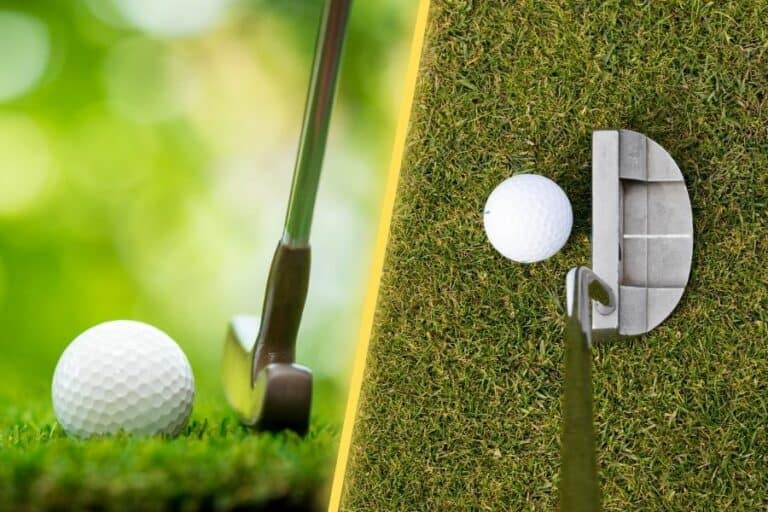
Mallet vs Blade Putter: Which Putter Style Is Right For You?
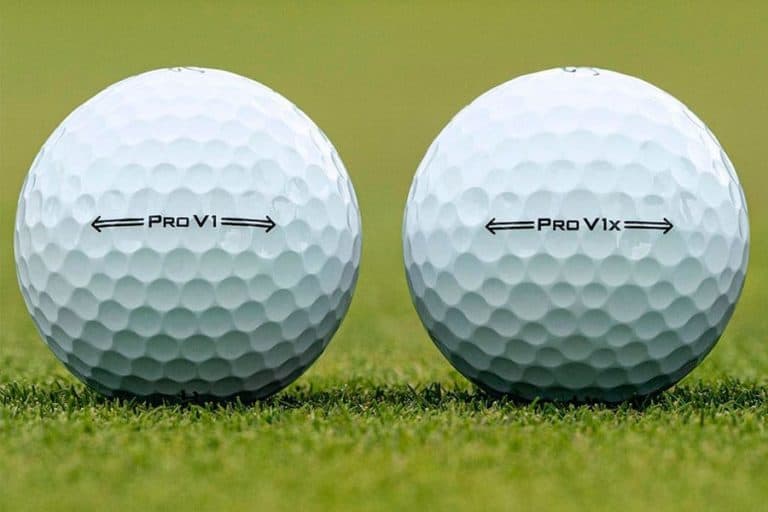
Titleist Pro v1, Pro v1x Golf Ball Review – Which is Better?
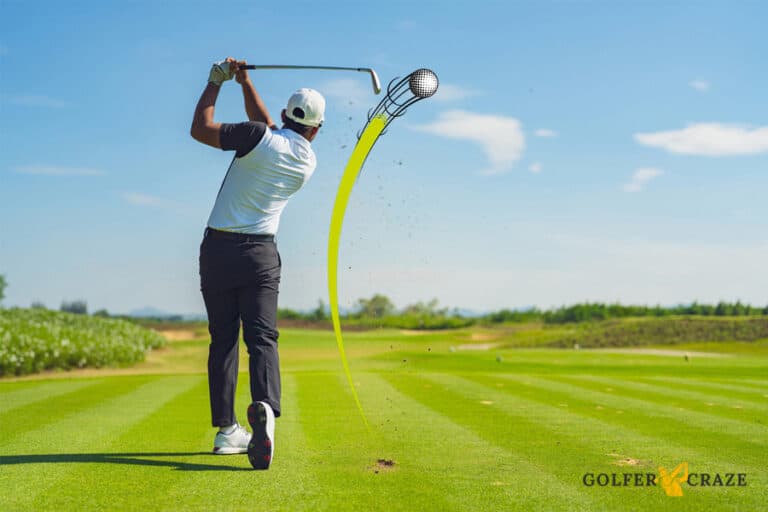
How To Fix A Slice In Golf?

What Is A Condor In Golf?

How To Hold A Golf Club: Proper Grip For Left & Right Handed
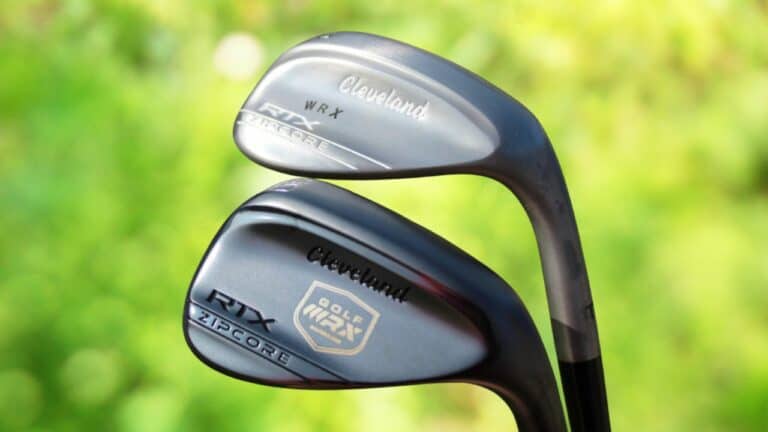
Cleveland RTX ZipCore Wedge Review (Updated)
- Mike Dowd Golf - The Golf Guru

- Beginner Guides
- Golf Is Life Blog
- Buying Advice
- Product Reviews
Golf Ball Compression Chart
Introduction.
Choosing the right golf ball can be a daunting task, especially when faced with an immense variety of options. We’ve experienced this confusion firsthand and discovered that understanding golf ball compression and swing speed is vital to your game.
In fact, research shows that matching these two factors can significantly improve both distance and control on the course. Ready to transform your game with Golf Ball Compression Chart ?
What is Golf Ball Compression and Swing Speed?
Golf ball compression refers to the density of the core in a golf ball, which affects how much it compresses upon impact with the clubface. Swing speed, on the other hand, is a measure of how fast you swing your golf club.
Understanding these two factors is crucial in selecting the right golf ball for optimal performance and distance control.

Understanding golf ball compression
Let’s delve into the concept of golf ball compression. Think of it as the measure of how much a golf ball deforms or squashes at impact when hit. It is measured on a scale ranging from low (usually around 40) to high (up to 100).
A lower compression rating indicates that the ball will deform more upon impact, making it easier for players with slower swing speeds to compress them and achieve optimal distance.
Conversely, higher compression balls require stronger swings but can provide incredible distance if accurately compressed by fast swingers. Understanding this principle is vital in selecting the perfect golf ball for your unique swing speed and overall game performance.
How swing speed affects golf ball performance
Swing speed is a crucial factor in determining how a golf ball performs. When it comes to golf, the speed at which you swing your club directly impacts the distance and accuracy of your shots.
A faster swing speed generally results in more power, but it also affects how the ball compresses upon impact with the clubface.
If you have a high swing speed, typically over 100 miles per hour, you will benefit from using a higher compression golf ball. These balls are designed to withstand the force generated by fast swings and provide optimal distance and control.
On the other hand, if your swing speed is slower, around 80-90 mph or less, a lower compression ball might be more suitable for you.
Choosing the Right Golf Ball Compression for Your Swing Speed
When selecting the right golf ball compression for your swing speed, it’s important to refer to a golf ball compression chart and consider factors such as spin rates and feel in addition to swing speed.
Golf ball compression chart

In order to choose the right golf ball for your swing speed, it’s essential to understand golf ball compression and how it affects performance. The golf ball compression chart is a valuable tool that can help you determine which ball is best suited for you.
Compression refers to the density of the core of the golf ball and impacts how it reacts when struck by the clubface. A high compression ball requires more force to compress and is better suited for higher swing speeds, while a low compression ball requires less force and is ideal for slower swing speeds.
By consulting a golf ball compression chart, you can find the recommended compression range based on your swing speed, allowing you to select a ball that will optimize distance and control off the tee.
Best ball options for different swing speeds
As golf beginners, it’s essential to choose the right golf ball that suits our swing speeds. The compression of a golf ball directly impacts its performance, so selecting a ball with the appropriate compression is crucial.
For players with slower swing speeds, opting for a lower compression ball can help maximize distance and provide better control. Brands like Titleist DT TruSoft or Callaway Supersoft are excellent options in this category.
On the other hand, if you have a faster swing speed, higher compression balls such as Titleist Pro V1 or TaylorMade TP5 would be more suitable as they offer enhanced control and spin.
Factors to consider when selecting the right compression
When selecting the right compression for your golf ball, there are a few key factors to consider. Firstly, you’ll want to take into account your swing speed. If you have a slower swing speed, opting for a lower compression ball can help maximize distance and improve your overall performance.
On the other hand, if you have a faster swing speed, choosing a higher compression ball can provide more control and enhance accuracy.
Another factor to consider is the weather conditions in which you typically play. In colder temperatures, golf balls tend to compress less, so it may be beneficial to choose a higher compression ball to compensate for this effect.
Conversely, in warmer temperatures where balls tend to compress more easily, opting for a lower compression ball can help maintain control.
Additionally, it’s important to think about the specific characteristics of each golf ball and how they align with your playing style and preferences. Some balls offer more spin while others prioritize feel off the clubface.
Other Factors to Consider When Choosing a Golf Ball
When choosing a golf ball, it’s important to consider other factors beyond compression and swing speed. These include spin rates and how they relate to compression, the feel of the ball when hitting shots, and brand comparisons based on compression ratings.
Taking these factors into account will help ensure you select the right golf ball for your game.

Spin rates and compression
Spin rates and compression play a crucial role in your golf ball’s performance. The compression of a golf ball affects how much it compresses upon impact with the clubface, which in turn influences the spin rates produced.
When choosing a golf ball, it’s important to consider how much spin you want on your shots and how it relates to the compression of the ball. Higher compression balls tend to produce lower spin rates, while lower compression balls generate higher spin rates.
This means that if you’re looking for more control and accuracy with your shots, a higher compression ball might be ideal. On the other hand, if you want more distance and forgiveness, a lower compression ball could be better suited for your game.
Feel and compression
When it comes to choosing the right golf ball, considering both feel and compression is crucial. The feel of a golf ball refers to the feedback you get when striking it with your club.
It affects how the ball feels in your hands, as well as the sound it makes upon impact. Compression, on the other hand, relates to how much the ball compresses upon contact with your clubface.
The feel of a golf ball can greatly influence your overall experience on the course. Some players prefer a softer feel, which provides a more responsive sensation at impact. Others may prefer a firmer feel for added control and feedback.
When selecting a golf ball based on its compression rating, keep in mind that lower compression balls typically offer a softer feel while higher compression balls tend to have a firmer touch.
Finding the right balance between feel and compression is essential for optimizing your performance and enjoyment while playing golf. Experimenting with different types of balls will help you determine which combination suits you best based on personal preference and playing style.
Brand comparisons and compression ratings
When it comes to choosing the right golf ball, brand comparisons and compression ratings play a significant role in determining which one is best suited for your game. Different brands offer varying levels of compression, which affects how the ball reacts upon impact with your clubface.
Brands like Titleist, Callaway, TaylorMade, and Bridgestone all have their own range of golf balls that cater to different swing speeds and player preferences.
Compression ratings typically range from 50 to 100 or higher, with lower compression balls being softer and higher compression balls being firmer. Beginners may benefit from using a lower compression ball as they tend to have slower swing speeds.
These softer balls compress more easily upon impact, resulting in more distance and greater forgiveness on off-center hits.
On the other hand, players with faster swing speeds might prefer higher compression balls as they can generate more power at impact. These firmer balls retain their shape better during high-speed swings, offering better control and increased spin for those who need it.
Conclusion and Final Considerations
In conclusion, choosing the right golf ball compression for your swing speed is crucial in optimizing your performance on the course. By understanding how compression and swing speed are related, you can make an informed decision about which golf ball will suit your game best.
Factors like spin rate, feel, and brand comparisons should also be considered when selecting the perfect ball. Remember, finding the ideal match between your swing speed and golf ball compression can greatly enhance your distance control and overall playing experience.
So take some time to do some research and find the perfect golf ball that will elevate your game to new heights!
1. What is compression and why is it important when choosing a golf ball?
Compression refers to the density of a golf ball’s core, which affects how it reacts when struck by a club. Higher compression balls are better suited for players with faster swing speeds, while lower compression balls are more forgiving for players with slower swing speeds.
2. How can I determine my swing speed to help me choose the right golf ball?
To determine your swing speed, you can use a launch monitor or visit a professional fitting session at a golf store or course. These tools measure the velocity at which your clubhead strikes the ball and provide data that helps in selecting the appropriate compression rating for your game.
3. Are there other factors besides compression and swing speed to consider when choosing a golf ball?
Yes, aside from compression and swing speed, other factors to consider include spin rate, feel around the green, durability, and overall performance characteristics such as distance and trajectory control.
4. Should beginners opt for low-compression golf balls regardless of their swing speed?
While low-compression balls tend to be more forgiving for players with slower swing speeds like beginners, it’s not necessarily always the best choice. Beginners should experiment with different types of balls based on their individual preferences and skill level to find what works best for them in terms of distance, accuracy, and feel on different shots throughout their learning process.
Mike Dowd has been teaching golf professionally for 24 years, has been Head P.G.A. Professional at Oakdale for the past 13, is a member of teh Northern California P.G.A.’s Board of Directors, and is a Callaway Golf Elite Staff Member.

Terms and Conditions - Privacy Policy

Golf Ball Compression Chart That Tells a Lot about Your Skills
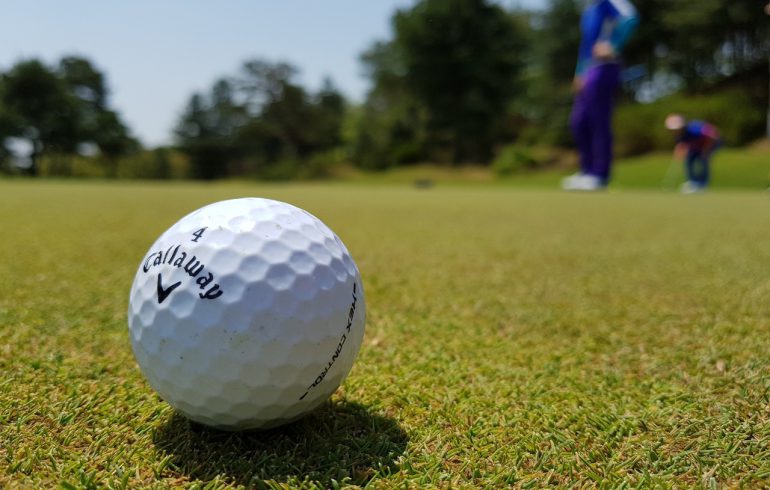
Introduction
Is golf compression does matter to you? You will surely often hear the term golf compression in the golf course, but what does it mean? Do you see and feel those dimples in golf balls? Beginners may explain the purpose of those dimples, but they may not understand for now the
Most golf balls come in white, but modern balls come in different colors such as yellow, green, gold, orange, and even black! But there are more colors to choose from nowadays! Despite the variations in colors, the golf balls have classifications according to their compression rating.
The golf ball compression is one way of measuring the overall hardness of the ball. A lower compression factor tells a softer golf ball, while a higher rating connotes a hard golf ball.
This post will take you further into the golf ball compression characteristics. We will also show you the golf ball compression charts of some of the leading brands. We will feature compression ratings of golf ball brands like Bridgestone, Callaway, Cut, Mizuno, TaylorMade, Titleist, and Volvik, among others.
Well, discover more about golf ball compression by continuing reading!
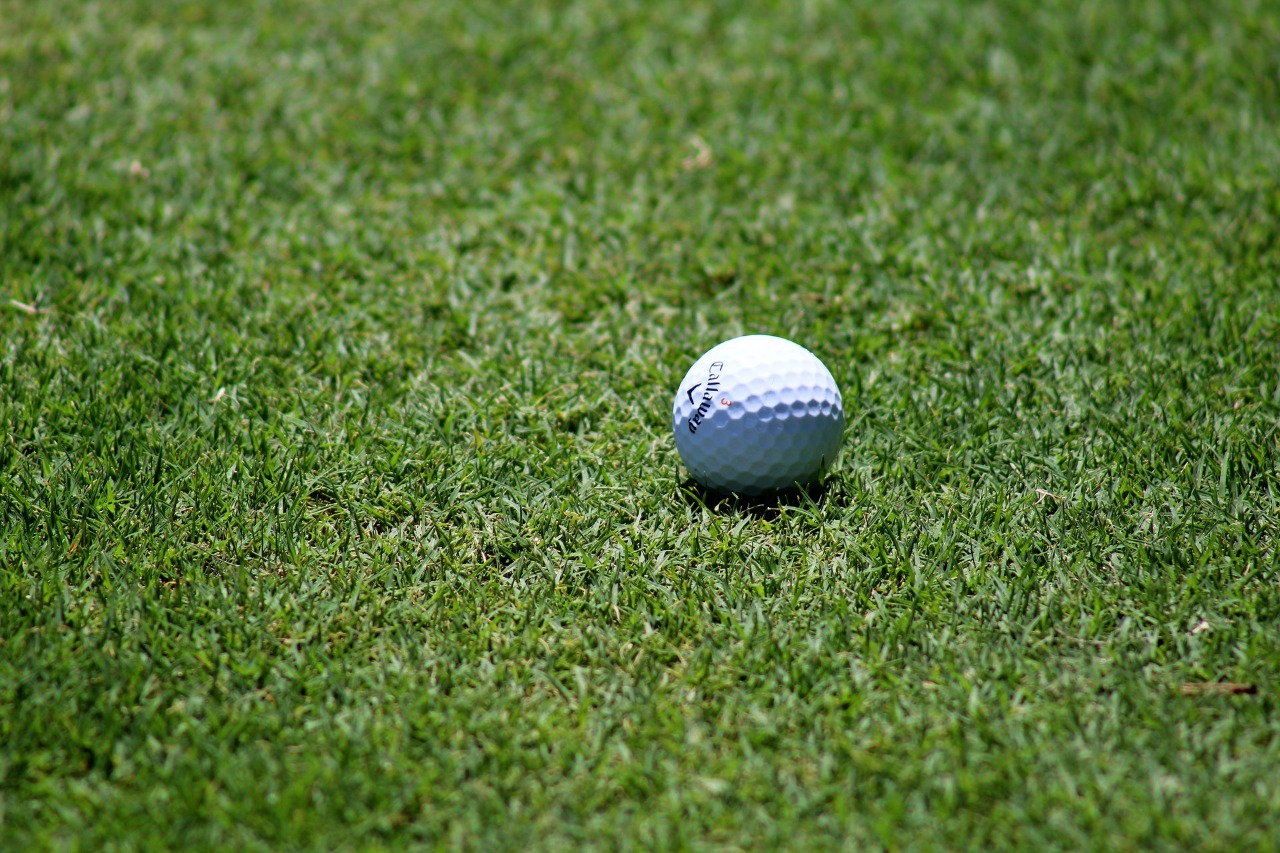
Everything you need to know about Golf Ball Compression
Several variables determine a golf ball’s performance, but the compression rating (or factor) is one of the most useful. But what golf ball compression is all about? To explain it simpler: golf ball compression is the measurement of how the clubface presses the ball upon impact.
The pressing manner on the golf ball the clubface provides during impact is called compression. It is the calculation of the force the ball received: the compression rating measures in number, like 70 or 100.
Watch Bryson DeChambeau’s high-speed video of his golf ball at impact: https://www.youtube.com/watch?v=c-0dDKfw4NI
The slow-motion video shows you how a golf ball compresses when hit by the club. The video shows a ball strike off the tee, where swing speed is higher. The second strike is from the green with a slower swing speed.
Compression and rebound
The word compression comes about in golf balls because of the force impacted by the clubface into the ball. Once the club strikes the ball, it will first squeeze (or compresses) when receiving the impact and then rebounds. Depending on the force (swing speed) you exert, the ball will bounce (because of the energy transfer) and travels a certain distance.
Compression ratings of golf balls
The golf ball compression rating describes how hard or soft the ball is. In general, brands rate golf ball compression between 30 and 120. The softest is 30, while 120 is the hardest. To be more understood: the lower the compression, the softer the ball, and the higher the compression rating, the harder the ball.
To have a more specific golf ball compression factor, experts laid down the following ranges and descriptions:
- Low compression: 65 and less (has softer core; compresses quickly; and with maximum distance on lower speeds).
- Medium-compression: 66 to 89 (with standard cores, in-between core; and maximized range with average swing speeds).
- High compression: 90+ (with a harder core: compresses slowly, and maximum distance with high or fast swing speeds).
Some golf ball manufacturers put the ball rating on the packaging. However, the number on golf balls is not the compression rating.
What are golf ball layers?
The materials of golf balls nowadays have two to five-ply. The core is pressurized or synthetic rubber covered by one or several outer layers and a dimpled cover. A golf ball with two layers is called a 2-piece. These balls are cheaper and ideal for beginners.
Those with three layers are called 3-piece, and the four-layer golf ball is called 4-piece. The current golf ball layers are five, called the 5-piece. Amateurs and intermediate players prefer the 3-piece balls, while pros and advanced players prefer the 4-piece or the 5-piece.
Most low compression golf balls are 2-piece construction and so on.
Golf Ball Compression Chart
Here is the compression ratings of different golf ball brands, so you can clearly understand what a compression rating means. Take a closer look at this chart, and later we will tell you the right golf ball for you depending on your skill. The table below will also show the perfect golf ball that will correspond to your swing speed
Which Compression is Right for You?
Golf ball compression is one of the many factors you may consider in picking the perfect ball for you. But more experts will agree that once you know your swing speed, you can start from there. The golf ball compression chart we provided is also one of the most comprehensive guides. You can rely on these charts and may base your decision on buying golf balls.
Moreover, if you have a low swing speed (less than 85mph), choose a low-compression ball. If you have a medium swing speed (ranging from 85 to 104mph): a medium compression golf ball may suit your skill. And finally, if you have a high swing speed (more than 105mph), the high compression ball is ideal for you.
So, now you know what golf ball will suit your skill. Please do not forget to consult the golf ball compression chart above if you are still looking for the appropriate ball for you. Sometimes, a chart tells more than a golf buddy!
Written by Tamos Shanter
Leave a reply cancel reply.
Your email address will not be published. Required fields are marked *
Save my name, email, and website in this browser for the next time I comment.
Golf Ball Compression Chart of 2024: Find Your Perfect Ball Today!
Imagine striking on your golf ball for a smooth delivery, only to get the opposite. Well, that happens when you use a golf ball with the wrong compression level. That’s right! Golf balls also come in variable speed and compression categories, making their performance different.
But while professional golfers know these matters, non-professionals and newbies can have trouble understanding which compression level is right for them. That is why I have made a golf ball compression chart for your better understanding.
Knowing the speed and compression level of the ball can be a game-changer (no pun intended). So let’s find out the compression and other details of various golf balls to determine which will help you perform better.
What Is Golf Ball Compression? How Does It Work?
If you ever watch the video of the golf club hitting a golf ball, you will notice an interaction between the two. The ball flexes against the club due to the pressure before it springs off with speed. This interaction between the club and the ball’s delivery level is known as golf ball compression.
Generally, golf balls come in three different compression levels, ranging from 30 to 120. A golf ball with a low compression rating tends to be soft and suitable for making short-distance deliveries.
On the other hand, golf balls with a higher compression can cover more distance. But how would you know if the ball you chose is suitable to cover your expected distance? I believe the following compression and speed chart will help you choose the right ball.
Golf Ball Compression Chart By Brand (Alphabetically)
Before I take you through the chart, let me make it clear that there is no fixed industry standard level for golf ball gauge.
As a result, manufacturers determine the gauge by their own standards, making it unlikely that two balls of different brands will have the same compression.
That is why I am mentioning the compression and other details in the following chart by golf ball brands.
Bridgestone Golf Ball Chart
Callaway golf ball chart, cut golf ball chart, kirkland golf ball chart, mizuno golf ball chart, snell golf ball chart, srixon golf ball chart, taylormade golf ball chart, titleist golf ball chart.
Also Read: Titleist Golf Ball Comparison Chart: Compare Titleist Balls!
Trust Golf Ball Chart
Vice golf ball chart.
Also Read: Vice Golf Ball Comparison Chart: Are Vice Balls Any Good?
Volvik Golf Ball Chart
Wilson golf ball chart, how to choose the right golf ball.
The golf ball’s compression is a major factor in your performance and flexibility. But before that, you need to ensure purchasing a suitable golf ball.
But what are the factors you need to consider so that you get the best golf balls? If you want to find out, I suggest you check out the following buying guide.
Not all golf balls are of the same type, and it plays a vital role in the ball’s performance. Based on various factors, golf balls are categorized into three types:
- Distance: Golf balls with thinner cover and a larger core usually cover more distance. Such balls lower the spin numbers to boost maximum carry.
- Soft Feel: Another name for soft feel is low compression. A golf ball with such a quality flexes more when struck with the golf club. It reduces the ball’s spin even more and allows it to have a long and straight flight.
- Tour Performance: These balls are for professional and highly-experienced golfers. They are multi-layered balls that offer coverage for more distance, feel and spin.
Construction
The golf ball’s construction is the key. There are two types of golf balls based on their construction, and here they are.
- Two-Piece Golf Ball: This type of ball has a larger core, and a thin layer covers the core making it a two-piece ball. Two-piece golf balls are more suitable for beginner golfers and those with a slow swing speed.
- Multi-Layer Golf Ball: For mid to low handicappers, there is no better alternative than multi-layer golf balls. These balls are called multi-layered because they can have three to five different layers from core to cover. Multi-layered balls are more functional for covering a shorter distance.
The core is the compressed mold inside the ball. The material used for making the mold is rubber, which takes up the ball’s most internal space.
A golf ball’s core quality determines how hard or soft the ball is, making it essential to know about the type of core the ball has. Moreover, it plays several roles in the ball’s performance, such as restraining the energy release, speed, accuracy, etc.
The top outer dimpled layer of the ball is its cover. And generally, a golf ball cover is made of two types of materials:
- Surlyn: Surlyn is basically hard plastic resin, and most golf balls come with Surlyn covers. These balls have more resistance to impacts and scratches and last a very long time.
- Urethane: Urethane golf balls are the opposite of the Surlyn balls. These balls are softer and offer more spin. The downside of urethane balls is that they are less durable than hard ones.
No, I am not ruling out the not-very-important-looking dimples. The simples on the ball covers are there to add control to the ball’s energy level. Without them, your golf ball would travel only around half the distance it would have with dimples.

The number of dimples a golf ball might have depends on the manufacturer and the size and depth of the ball. Nevertheless, you can bet that most of them have about 350-400 dimples.
The spin is when the golf ball takes off and moves from side to side. Golf balls offer different spin levels based on the ball’s construction, core, and other factors. But what type of spin would you prefer? Let’s find out more about different golf ball spins.
- Low-Spin Golf Ball: Low-spin golf balls have fewer side spins, making the ball take a straighter flight. These balls do not travel far when up in the air. However, this feature works as an advantage when you need the ball to roll less on the ground.
- Mid-Spin Golf Ball: Mid-spin balls are suitable for all golfers as they balance low and high-spin balls. While these balls cover most distance, their softness can differ depending on the brand.
- High-Spin Golf Ball: High-spin golf balls offer maximum offer in the air as the ball releases more backspin once struck. However, these balls can be responsible for losing distance because of excessive backspin.
Compression
As explained around the beginning, compression is the ball’s deflection measure when struck. A golf ball’s compression determines a major part of its performance. If the ball has a lower compression, it will deform more against the golf club and generate more speed.
On the other hand, balls with a higher compression level are hard and suitable for traveling a short distance. Since these balls do not deform easily like the others, players need to strike harder and faster.
If you have a harder time noticing where your ball goes, especially if you are striking for a long distance, you need a ball that offers more visibility. These balls come with bold patterns and various bright colors. Nowadays, many top golf ball brands manufacture high-vis balls.
Personalization
Here is something a little extra and fun. You can personalize your golf ball for games or as a souvenir.
Manufacturers and sellers allow you to add names, initials, signatures, quotes, etc., on the ball. However, not all golf balls might not be suitable for personalization.
Which Compression Is Right for You?
The compression of the ball you pick should be based on your swing speed or performance. And since golf balls come in various compression ratings, I have separated them into a few categories to help you decide more easily.
Type 1: 80 And Under
Which type of golfer are you? Beginner, junior, senior, or someone with average strength? If you are one of the types I just mentioned, you could use golf balls with a low compression rating, ranging up to 80.
Slow swingers can hit their marks more easily with low-compression golf balls. And if you hold the club face downside, you can achieve a better distance.
Type 2: Between 85-90
If you are an average male or a long-hitting golfer, the best golf ball compression score for you should be between 85 to 90. That is because a golf ball with such a compression rating requires a faster strike from the golf club.
Doing so increases the ball’s spring effect and compression, bringing change in your performance. But if you are unsure whether you should choose 85 or 90, I suggest experimenting a little before it strikes you.
Type 3: Up To 100
The higher the ball’s compression level, the harder strike it requires. And most of the time, these balls are suggested for pro golfers.
Golf balls with such a compression rating can travel a greater distance if it gets a fast and hard club strike. If the club head is not fast enough. Moreover, this type of ball is more suitable for strong golfers.
Type 4: Above 100
If you are a professional golf player, generating an expected distance will not be a problem no matter which compression rating or level the ball comes with. Golf balls with more than 100 compression ratings offer more swing speed and cover more yards when the golfer hits them correctly.
High-compression balls are not easy to play with if you are a starter or do not have muscular strength. But you never know if a different ball will give you an unexpected and satisfying result.

2 Signs That You Are Using the Wrong Golf Ball
If your balls do not have enough performing strength to reach the expected target, it can be pretty disappointing. So the best way to avoid such a situation is to know if you have the right golf ball. Here are some signs that will tell you that you have the wrong balls.
1. Ball Going Too High
If your golf ball is going way too high up in the air, it means the ball’s compression is on the lower side. They go higher if there is too much backspin, making them lose distance and control. It also means the balls are soft, resulting in more swing speed.
2. Ball Flying Close To the Ground
If the ball travels closer to the ground, that means the ball is too hard and has less spin speed. This problem is also known as the flat-ball flight.
Another way to identify the problem is if you see the ball is not covering much distance, even if you are striking with the same swing speed. The solution to this problem is using soft-feel golf balls.
If you notice any of these signs, your golf ball does not have accurate compression. So what can you do about it?
I suggest you experiment with different balls but stick to the same brand to know which compression fits your performance. Once you find the compression rating from a particular brand, it will become easier for you to experiment with other brands.
Have you read through the entire golf ball compression chart? If you have, you will notice how different brands offer different compression levels, which is also noticeable in their swing speed. That is why it is essential to know what to look for in a golf ball when purchasing it.
Well, in that case, there is a detailed buying guide in this article to help you out. Remember that when it comes to golf balls, prices cannot always speak for their quality. So feel free to experiment with multiple golf balls to find the right one.
WeekendGolf is a participant in the Amazon Services LLC Associates Program. As an Amazon Associate, I earn from qualifying purchase. To support our site we may earn a commission if you purchase through some of the links listed above at no additional cost to you.
Golf Ball Compression: What Is It And Why Does It Matter?
Even though golf ball manufacturers don't talk about compression as much as they once did, it's still an important consideration...
- Sign up to Golf Monthly Newsletter Newsletter
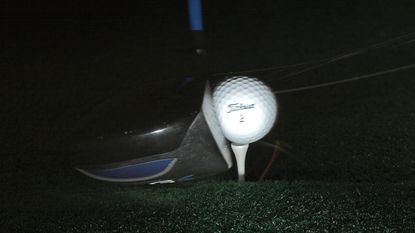
Most balls in most sports compress (they deform or go mis-shapen) at the point of impact, whether football, rugby, tennis and, perhaps most obviously of all, squash, where even a young child can manipulate the ball easily in his or her hands. But even seemingly rock-hard balls such as snooker balls compress to a degree because impact in many sports can take place at perhaps surprisingly high speeds.

Club meets ball at speeds well in excess of 100mph in the strongest players
When it comes to golf, all balls feel hard to the touch (other than perhaps any tactile differences between their cover materials) and you would certainly be hard-pushed to compress them in your bare hands. But when you factor in that some of the best golfers in the world have driver swing speeds of over 120mph, and even the average male club golfer somewhere between 80 and 90mph, that’s an awful lot of collision force between two seemingly hard objects – golf ball and hard metal clubface.
Beneath the surface of a golf ball there always lies a core made of various plastic and/or rubber materials. There may be other layers between core and cover, especially in many of the best golf balls on the market, but it is the compound of the core that largely determines the extent to which the golf ball compresses at impact, and this in turn dictates the amount of energy transferred to the ball

The golf balls of yesteryear would sometimes have their compression stamped on them
In days gone by you will have seen a figure of perhaps 90 or 100 stamped on a golf ball to indicate its compression rating. Compression is a measure of the deflection a golf ball undergoes when it is struck, with values typically ranging from 50 to 100, although at least one version of Callaway’s Supersoft golf ball had a compression rating as low as 38.
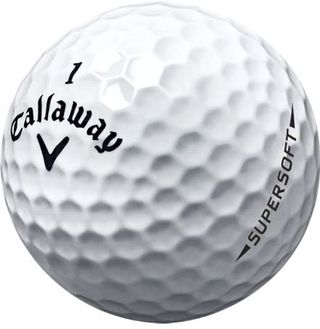
2014's Callaway Supersoft model had a compression of just 38
These days, such figures are rarely, if ever, stamped on a ball, although some manufacturers will still refer to them somewhere in their product features and benefits. This is partly because ball manufacturing has advanced to such a degree, using all manner of high-tech, manmade materials, that it is possible to make balls that ‘feel’ significantly different to what their measured compression rating would actually be.
But even if the figures themselves are now largely absent, or certainly less prominent than once they were, compression is still an important factor in performance as some golfers will find it easier to get greater distance out of a ball they can compress more easily (a low-compression ball) than one that requires greater swing speed to reap maximum benefit from its construction (a high-compression ball).
Get the Golf Monthly Newsletter
Subscribe to the Golf Monthly newsletter to stay up to date with all the latest tour news, equipment news, reviews, head-to-heads and buyer’s guides from our team of experienced experts.

Swing speed is a big factor in deciding whether you'll be able to reap the full benefits of higher-compression balls
Many of the best golf balls for slow swing speeds and the best golf balls for seniors (acknowledging that there will, of course, be some seniors with faster swing speeds!) will be low-compression models because their cores can be ‘activated’ more easily at slower swing speeds allowing them to achieve greater distance. Conversely, low-compression balls will compress too much for those with faster swing speeds, meaning sub-optimal performance and most likely a loss of control.
While there are certainly elements of performance in the best premium golf balls from which all golfers can benefit (added feel, spin and control closer to the green) it may come at the cost of compromised distance for those not blessed with the fastest swings as they won’t be able to fully ‘activate’ the core of these higher-compression models at impact.
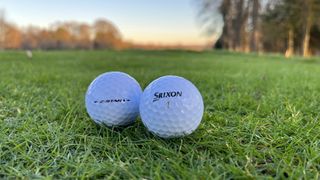
Srixon's new Z Star Diamond has a compression of 102 and is designed for driver swing speeds of 90+mph
As an example, Srixon launched two ball models in early 2022 – the new Z Star Diamond and a new Q-Star Tour model . The Z Star Diamond, as played by Brooks Koepka , has a compression rating of 102 and is designed for driver swing speeds of 90+mph; the Q-Star Tour has a compression rating of 72 and is designed for driver swing speeds of 75+mph, but is otherwise engineered for tour-level performance. In other words, it will be a better distance option for those with sub-tour swing speeds who still want to reap all the other performance benefits of a tour-calibre ball.
In addition to the relationship between ideal compression and swing speed, there is also a school of thought that some golfers might be able to hit low-compression balls a little further than firmer balls in cold weather, and some of our recommended best golf balls for cold weather are, indeed, low-compression models. Golf balls don’t go quite as far in the cold because the air is denser, which increases lift and drag so they tend to fly slightly higher and a little shorter. And if the golf ball itself gets very cold, this can also affect the characteristics of its materials resulting in lower initial velocity off the clubface.
Jeremy Ellwood has worked in the golf industry since 1993 and for Golf Monthly since 2002 when he started out as equipment editor. He is now a freelance journalist writing mainly for Golf Monthly . He is an expert on the Rules of Golf having qualified through an R&A course to become a golf referee. He is a senior panelist for Golf Monthly's Top 100 UK & Ireland Course Rankings and has played all of the Top 100 plus 91 of the Next 100, making him well-qualified when it comes to assessing and comparing our premier golf courses. He has now played 1,000 golf courses worldwide in 35 countries, from the humblest of nine-holers in the Scottish Highlands to the very grandest of international golf resorts. He reached the 1,000 mark on his 60th birthday in October 2023 on Vale do Lobo's Ocean course. Put him on a links course anywhere and he will be blissfully content.
Jezz can be contacted via Twitter - @JezzEllwoodGolf
Jeremy is currently playing...
Driver: Ping G425 LST 10.5˚ (draw setting), Mitsubishi Tensei AV Orange 55 S shaft
3 wood: Ping G425 Max 15˚ (set to flat +1), Mitsubishi Tensei AV Orange 65 S shaft
Hybrid: Ping G425 17˚, Mitsubishi Tensei CK Pro Orange 80 S shaft
Irons 3-PW: Ping i525, True Temper Dynamic Gold 105 R300 shafts
Wedges: Ping Glide 4.0 50˚ and 54˚, 12˚ bounce, True Temper Dynamic Gold 105 R300 shafts
Putter: Ping Fetch 2021 model, 33in shaft (set flat 2)
Ball: Varies but mostly now TaylorMade Tour Response

Polo shirt? Golf shoes? Jeans? What to (and not) wear for a day when attending a professional golf event
By Conor Keenan Published 15 July 24

Aberg is preparing for his Open bow after turning pro last year and refuses to be dishearten by his collapse at the Renaissance Club
By James Nursey Published 15 July 24
- Contact Future's experts
- Terms and conditions
- Privacy policy
- Accessibility statement
- Cookies policy
- Advertise with us
Golf Monthly is part of Future plc, an international media group and leading digital publisher. Visit our corporate site . © Future Publishing Limited Quay House, The Ambury, Bath BA1 1UA. All rights reserved. England and Wales company registration number 2008885.
Low Compression Golf Balls In 2024: Top Picks & Buying Guide
Lower compression golf balls are built to help the slower swinging player get the ball speeds they need.
When the concept of a low compression ball became popular, it was one of the greatest breakthroughs for the average golfer.
Having taught so many students that lack swing speed and power, I can honestly say the low compression golf ball makes a difference.
We have put together some of the best low compression golf balls on the market .
At A Glance: Our Top 5 Picks for Low Compression Golf Balls On The Market In 2024
- Best Overall: Callaway Supersoft
- Runner Up 1: Srixon Soft Feel
- Runner Up 2: Maxfli SoftFli Matte White
- Best Value: Wilson Staff Fifty Elite
- Best Premium: Titleist TruFeel
- Best Ultra Low Compression: Wilson Duo Soft
Best Low Compression Golf Balls: Callaway Supersoft

- Great distance and feel
- It comes in several color options
- One of the lowest compression golf balls on the market
- Still a two piece golf ball
The best overall low compression golf balls are the Callaway Supersoft . With a compression rating of 38, it’s going to be hard to find something with a lower compression than this.
The great thing about the Supersoft is that it is also a great choice for those that have some extra swing speed. Golfers with a wide range of handicaps will benefit from the Supersoft. Especially the beginner golfers.
As with all Callaway golf balls, the Supersoft features the HEX Aerodynamics pattern . This pattern will help to improve overall distance by reducing drag.
In addition to this extra distance that you will get, the soft Trigonometry cover gives some great feel.
The Supersoft is low compression golf balls that are available in many different colors, and they even come in the new Magna version . The Magna is a slightly large sized Supersoft that is a great golf ball choice for the senior player .
Read our Callaway Supersoft review .
Runner Up 1: Srixon Soft Feel Golf Balls

- Fair pricing
- Good distance off the tee
- Tremendous feel when chipping and putting
- Low compression golf balls
- Not the longest golf ball on the market
The Srixon Soft Feel is one of the most popular golf balls on the market. The Soft feel offers lots of distance to the golfers with a slower swing speed, but they also have a tremendous amount of feel on the short game shots.
The cover on the Srixon Soft Feel is very thin and if offers a tremendous amount of spin and soft feel. If you are a golfer who feels like you need help in the short game department, this is a ball that can make a difference.
In addition to being one of the better low compression golf ball options around the green, the Srixon soft feel is also a great choice from the tee.
Golfers will love the 338 speed dimple pattern that gives the Srixon very low drag and more overall distance. For an affordable and high performing, low compression golf ball, this is a perfect choice.
Runner Up 2: Maxfli SoftFli Matte White Golf Ball

- Faster ball speeds
- Good control around the greens
- Great for a very slow swing
- Senior golfers should consider the Maxfli
- Not the same feel as tour golf balls
The Maxfli SoftFli have a compression rating of 35, which puts them pretty low on the compression list. A high compression golf ball will be closer to 100 compression.
As you can see, the Maxfli Softfli is a lower compression golf ball.
The core on the Maxfli offers a lot of ball speed and a low spin rate . This means that if you are looking for distance off the tee, you are going to have lots of luck with the Maxfli SoftFli.
There are 332 dimples on the Maxfli, and it helps to decrease the drag and increase the overall distance you can get with this golf ball.
The Maxfli Softfli is a low compression golf ball with a very soft ionomer cover formulation. Around the green, you can get some great speed as well with the Maxfli SoftFli. For slower swing speeds, this golf ball is a great choice.
Wilson Staff Fifty Elite
Best Value Low Compression Golf Balls

- Very soft core
- Good distance
- Long lasting golf ball
- Very fair price
- Not much spin when chipping or approaching the green
The great thing about the low compression golf ball is that it is usually pretty reasonably priced. Golf ball manufacturers know that most players who will look for this ball are going to be higher handicapper or average golfers that need an affordable ball.
The Wilson Golf Staff Fifty Elite is very reasonably priced and has a compression rating of 50. This is a perfect compression for the average swing speed golfer. The Wilson Golf Staff Fifty Elite has an explosive core and a very soft feel.
Inside the golf ball is a core that is 22% softer than the competition. This core helps to lower the compression but also gives this golf ball some extra responsiveness around the greens.
The flat bottomed shallow dimples are going to create much less drag as you send this Wilson golf ball flying. If your swing speeds are a bit slower and you have been looking for a lower compression golf ball, this is a perfect choice.
Titleist TruFeel
Best Premium Low Compression Golf Balls

- Softer feel
- Lots of distance from the tee
- Very consistent and long term durability
- Not as much distance as high compression balls from Titleist
Titleist is not known for making the lowest compression golf balls on the market. Although Titleist gives you a tremendous amount of control around the green , they usually are not the best option for the slower swing speed.
If you have a slow swing speed , there is a Titleist golf ball that you can use.
The T itleist TruFeel has the lowest compression ratings of any of the Titleist golf balls. For a slower swinging player, you can get lots of distance and plenty of feel around the green as well.
The high compression Titleist golf balls tend to be a better feeling ball, but the soft cover on the TruFeel makes it a great choice around the greens as well.
Titleist golf balls are known for offering great long term durability for the price as well.
Although the Titleist golf balls tend to be priced a bit higher than some other choices on the market, you will know that their capabilities are about as high as it gets.
Wilson Duo Soft
Best Ultra Low Compression Balls

- Great for the slowest swing speeds
- Soft golf balls
- Very low compression rating
- Not great for average swing speeds
If you are serious about finding a low compression ball, the Duo Soft is about as low compression as it gets. This is the lowest compression rating golf ball that the world of golf has seen.
Although we don’t believe this is the best golf ball for all golfers, it is perfect for slow swing speeds .
The compression ratings on the Wilson Duo Soft are less than 29. This is a two piece ball that has plenty of distance from the tee.
The Duo Soft also has a softer feel around the greens. With a low compression golf ball like this, you can’t expect too much spin around the greens.
What to Look For When Buying Low Compression Golf Balls?
Now that you have a better idea of the best low compression balls on the market, it is time to help you narrow down which of these could be the best for your game.
Let’s take a look at the benefits of the low compression golf ball and the reason it may make sense to put some in your golf bag.
Who Should Use A Low Compression Golf Ball?
Golfers that have very slow swing speeds should consider the low compression golf balls. These balls allow the club’s club head to compress the golf ball and get players the distance they need.
Distance in golf is all about ball speed. If you don’t have clubhead speed, you can’t get ball speed.
Some golfers can work on their swings continually but still not be able to gain extra swing speed. Swing speed can be a physical thing for some players.
If this describes you, then the low compression golf balls could be your ticket to some extra distance.
Do Low Compression Golf Balls Go Further?
Low compression golf balls will go further for those that can benefit from them. For a higher swing speed golfer, the golf ball compression should be a little higher.
If you are a faster swinging player, the higher compression ball will give you much more distance.
Essentially a higher swing speed player can compress a harder golf ball, so they should. Compressing the harder ball and allowing it to release and give them extra distance will undoubtedly help them get more yardage.
If a slower swinging player tries a harder golf ball with a high compression, they will notice a loss in the distance. So a low compression golf ball can help you gain distance, but only if your swing speed is the proper match.
Are Low Compression Balls Always 2 Piece?
The majority of the ultra low compression golf balls are going to be two pieces. This is because it is easier to make a softer golf ball when you are working with less pieces.
The soft core can be combined with a soft Urethane cover, and the ball will be very low compression.
When switching to the three piece golf ball, you will get some high spin rate around the green. Players that need more performance around the green as opposed to distance off the tee, the higher compression will be the best golf balls.
Skilled Golf also has a detail article on Longest Golf Balls For All Golfers.
Hopefully, you know, feel like you have a better handle on the best low compression golf balls on the market. There are many options to choose from.
Finding a balance between price, performance, distance, and feel can be quite difficult. Luckily the Callaway Supersoft Golf Balls are the best lower compression balls on the market.
The Supersoft has a very soft cover and a high energy core. The compression rating on the Supersoft is 38, making it one of the lowest on the market.
This high performing Callaway golf ball is available in several colors, and it is offered at a great price as well. If you think that a lower compression golf ball could be a solution for your game, the Supersoft is a perfect choice.
Henry Foster

We are a participant in the Amazon Services LLC Associates Program, an affiliate advertising program designed to provide a means for us to earn fees by linking to Amazon.com and affiliated sites.
Top Categories
- Training Aids
- Accessories
Site Navigation
Useful links.
- Privacy Policy
Copyright © 2024 Skilled Golf

Amazon Prime Day is here, running July 16 through July 17, and the golf deals are a total score. Amazon Prime members can up their golf game with one unbeatable deal after the next -- all for Amazon Prime Day . Whether you're in the market for a new set of golf clubs , an amazing golf shoe upgrade or a golf rangefinder designed to make your game more efficient, the folks at Amazon have pulled out all the stops to deliver amazing golf deals to Prime members.
We take finding great golf deals for you seriously, about as seriously as we take our golf game. Keep reading to find the best Amazon Prime Day deals on golf clubs and other must-have equipment. You'll be so happy you did.
We're tracking down all the best Prime Day discounts , including the best lightning deals and rival sales during Prime Day 2024. Whether you're trying to find the best Prime Day deals on tech, Prime Day sales on beauty and fashion finds or Prime Day deals on health and fitness equipment , our team of expert deal hunters has you covered.
These are the top deals on golf equipment for Prime Day 2024
This year's Amazon Prime Day golf deals are sure to up your game. We found the best Amazon Prime Day deals on golf shoes , golf rangefinders and accessories, golf bags , driving irons and more.
The best deals on golf clubs
Amazon Prime Day is a terrific time to score a deal on a new set of clubs. Below are the top Prime Day golf club deals.
Get a complete set of golf clubs for $300: Callaway Strata golf club set
The 9-piece Callaway Strata golf club set includes a driver, hybrid, 7- through 9-irons, sand wedge, putter and a durable Callaway golf stand bag. Featuring titanium heads designed for forgiveness and control, these are the best golf clubs for casual players or beginners.
Ahead of Amazon Prime Day, you can get the bestselling 9-piece set for just $300 (reduced from $350).
Best Prime Day golf club deal for women: Wilson Magnolia complete set ($150 off)
The Magnolia golf club set from Wilsion includes a spacious stand bag housing a driver, 5-wood, 4-6 hybrids, 7-9 irons, pitching and sand wedge and a putter. The lightweight bag is great for those who prefer to walk but it's also compact enough to fit in most carts. Oversized heads and precision weighting make the irons and driver in this set forgiving and easy to swing. Meanwhile, the more compact hybrids offer great loft that will come in handy when playing from the rough.
Normally retailing for $650, this complete set is a steal even at full price. But you can get it for even less ahead of Amazon Prime Day. The 11-piece set has dropped to just $500 right now.
Wilson Profile JGI Junior complete golf set
Designed to help new golfers get in the game from an early age, this set features a durable stand bag. The clubs are designed to help beginners develop of a love of the game and features a junior shaft flex, grip size, weight and club length.
Wilson is one of the top brands in sports equipment and this junior golf set earns 4.7 stars on Amazon. This junior golf set is on sale at Amazon for $135, reduced from $182.
Top deals on golf balls for Amazon Prime Day
Stock up on terrific golf balls thanks to these Amazon Prime Day golf ball deals.
TaylorMade TP5 and TP5x golf balls: $34 (reduced from $50)
TaylorMade's seamless ball features layered construction and a cast urethane cover. The ball delivers high speed, high launch and a soft feel. The ball's expanded core delivers increased speed.
Rated 4.8 stars by enthusiastic Amazon shoppers, these TaylorMade golf balls are on sale for $34, reduced from $50.
Callaway Hex Soft 19: $39 (save 15%)
Callaway is a top name in golf balls and equipment for good reason. The Hex soft 19 ball is a soft golf ball with low compression, delivering a terrific feel to your shots on the green.
The ball features a low compression core designed for ball speed, while reducing spin -- ultimately increasing distance. Built for a straight flight and low spin, this ball earns 4.7 stars on Amazon.
Currently 15% off for Amazon Prime Day, the Callaway Hex Soft 19 balls are #$39, reduced from $46 for a package for 24 balls.
Shop more Amazon Prime Day golf ball deals
Here are more golf ball savings for Amazon Prime Day.
- Great value for a quality ball : Titleist tour speed golf balls, 12-count, $28 with Prime (reduced from $37)
- Responsive golf ball : Taylormade golf Rocketballz, 36-count, $42 with Prime (reduced from $50)
- Easy putting alignment : Srixon Q-Star Tour Divide golf ball (12 count), $30 with Prime (reduced from $35)
- For players with low to medium club head speed: Vice Drive golf balls (12 count), $15 with Prime (reduced from $20)
- Powerful long distance ball: Bridgestone Golf 2023 e6 (24 count), $33 with Prime (reduced from $50)
The best deals on golf shoes for Amazon Prime Day
From spikeless golf shoes to kicks that will dig into the green, Amazon Prime Day is slicing into major discounts on the best golf shoes.
Puma Golf Proadapt Alphacat golf shoe: $60 (Save 26%)
Puma Golf's men's golf shoe provides stable cushioning and dimensional stability thanks to the shoe's impact resistant foam. The waterproof upper shell is made with engineered mesh to provide structure and support.
The spikeless outsole is stable, while providing intense ground gripping and traction. The shoe's bootie construction provides 360 degrees of support around the foot.
These golf shoes are on sale for Amazon Prime Day for $67, reduced from $160.
Shop men's sizes:
Shop women's sizes:
Adidas Women's Summervent spikeless golf shoe: $46 (Save 49%)
Adidas' oh-so-comfortable women's golf shoe is constructed to keep your feet cool and comfortable all day. With an upper made from mesh for breathable comfort and a bouncy midsole made with flexible cushioning, you'll want to wear these spikeless golf shoes on and off the green.
Made in part from high-performance recycled materials, 50% of the shoe's upper is constructed from recycled materials.
This shoe is on sale for $46, reduced from $90.
Save on more golf shoes on Amazon Prime Day
There are more terrific golf shoes on sale this year for Amazon Prime Day.
- 4.6-star rated men's shoe : Adidas men's Codechaos 21 Primeblue spikeless golf shoes, $63 with Prime (reduced from $150)
- High rise men's shoe: Puma Ignite Articulate, $68 with Prime (reduced from $84)
Best Amazon Prime Day deals on golf tech and clothing
There's more to your golf game than clubs and shoes. Check out these terrific deals on range finders and more.
Reader-favorite golf deal: Callaway 300 Pro golf rangefinder: $170 (save $130)
CBS Essentials readers can't get enough of the terrific Callaway Golf 300 Pro Slope Laser Rangefinder, which earns 4.7 stars at Amazon from exuberant shoppers.
Callaway is one of the most popular names in golf gear. This highly accurate laser rangefinder features a range of 5-1000 yards with +/- 1 yard accuracy, and measures in yards or meters
Regularly priced at $300, this Amazon best-selling Callaway rangefinder is just $170 on Amazon now, the lowest prices to date on this popular golf rangefinder.
Get a golf rangefinder under $100: Gogogo Sport Vpro
Finding top-notch golf gear for under $100 isn't always easy. That's one reason we love this golf rangefinder deal at Amazon. You can get this high-quality, tournament-legal rangefinder for $64 (reduced from $80).
Best Amazon Prime Day deals on golf pants and apparel
- A stylish Callaway polo for 45% off: Callaway Micro hex performance golf polo, $30 and up (reduced from $55)
- Over half off stretchy golf shorts: Callaway Everplay golf shorts, $35 (reduced from $72)
- Save on an Adidas golf belt: Adidas braided stretch golf belt, $34 with Prime (reduced from $42)
- Get over half off women's golf pants: Adidas women's pull on ankle golf pants, $36 and up (reduced from $80) )
- Save 65% on men's golf pants: Adidas men's Ultimate365 golf pants, $30 with Prime (reduced from $85)
Best deals on golf bags
The right golf bag is a serious game-changer. Below are our favorite Amazon Prime Day golf bag deals.
Best Prime Day golf bag deal: Frogger Function hybrid golf bag (20% off)
The Frogger Function hybrid golf bag boasts an award-winning magnetic latch system. Literally. The "Latch-It Ecosystem" feature earned the title of "Best New Product" at the PGA Merchandise Show.
The award-winning design is built for the "caddieless golfer" who needs quick and easy access to all of their gadgets and gear. The signature magnetic latch-it system allows you to attach a Latch-it receiver to any accessory, whether that's your rangefinder , your phone, a towel or anything else you might need.
This rarely-on-sale golf bag is available to Prime members for just $184 (reduced from $230).
Taylormade Golf 2023 classic stand golf bag: $153 (save 15%)
Featuring 14 dividers, front facing pockets for phone and accessory storage, a magnetic security pocket and a built in putter protecting polymer patch, this bag offers all the storage one needs for a day of golf.
The bag is made from fade resistant yarn, which holds color longer and is made from UV protected materials.
This bag is on sale from Amazon Prime Day $153 (reduced from $180).
Izzo Golf Ultra-Lite golf bag: 24% off
The Izzo Golf Ultra-Lite hybrid golf bag weighs just 3.2 pounds, comes with two padded straps to carry on your shoulders, and includes enough pockets for all those extras you need while you're out golfing on the green. When you're not hoofing it, use the convenient and durable handle for lifting this golf bag in and out of the cart.
A great deal at its regular price of $130, this golf bag is a steal while it's on sale at Amazon for just $100.
Our Latest Essentials Stories
Best omega-3 supplements in 2024, according to experts
Rachael green • 11 min read.
Save over $80 on the new Oura Ring for Amazon Prime Day
Rachael green • 1 min read.
We are loving these Amazon Prime Day 2024 fitness deals
Rachael green • 17 min read.
Best Amazon Prime Day 2024 deals on running shoes
Rachael green • 5 min read.
We handpicked the best Amazon Prime Day deals of 2024
Rachael green • 9 min read.
The best Prime Day cycling deals
Meredith gordon • 6 min read, share video.

Best Amazon Prime Day golf deals: Rangefinders, clubs

Get 33% off an advanced pickleball paddle for Prime Day

The best Prime Day 2024 deals on tennis shoes

The best Prime Day deals on TVs: Upgrade for the Summer
The Open Championship
Royal Troon
BRITISH OPEN PLAYER RANKINGS

British Open 2024: Tiger Woods fired back at Colin Montgomerie, but Monty knows the truth
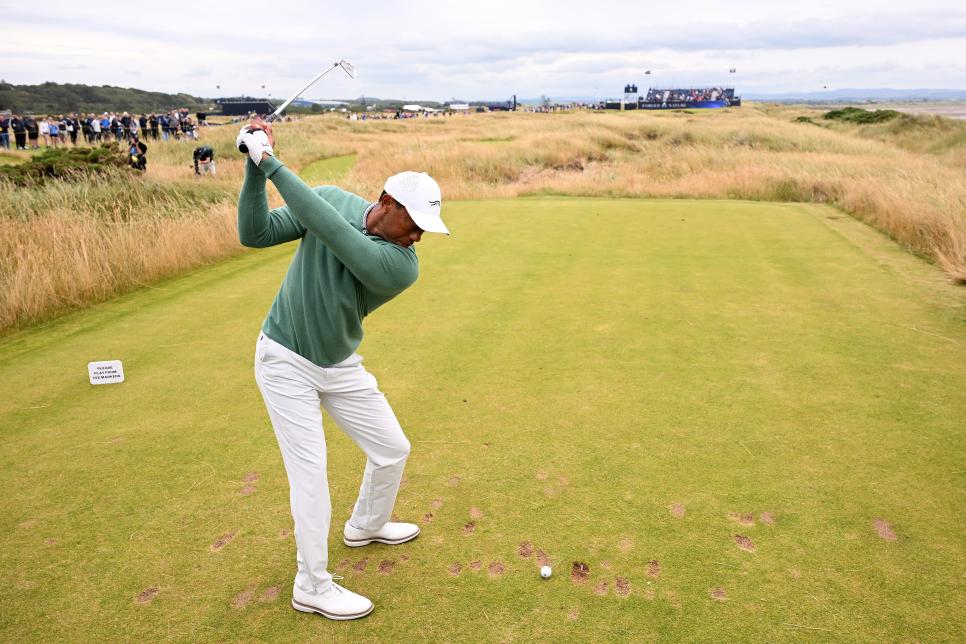
Ross Kinnaird
TROON, Scotland — Only a chosen few are awarded “The Stop.” It is both earned and conferred, and always cashed in at the Swilcan Bridge. The legend makes his way over the crossing, pauses, perches his leg up on the stone ledge, turns away from the Old Course and toward the fans to his right and behind him, then back to the town of St. Andrews and to the people craning their necks from pubs and hotel windows to say they saw it, and waves. The Stops of yesteryear are run annually on Open broadcasts and pictures of The Stop are plastered in clubhouses across the world, because The Stop matters, a graceful transition of a golf legend from the pangs of now into the gloss of the past.
Tiger Woods was bestowed The Stop in 2022. It made sense; he was nine over through 35 holes, 20-something shots behind the leader and miles from the cut. He was just 46 years old, but his return from a savage car accident raised plenty of questions about an already tenuous future, and with the R&A likely deviating from its tradition of hosting the Open at the St. Andrews every five years it was unclear when the Auld Gray Toon would host again … and what type of shape Woods would be in when that time came.
Woods is a student and historian. He is well aware of The Stop. What it means, to himself and to others. Over the past decade, he had preached a cognizance of the finish line. And yet, knowing what was ahead, Woods glided over the most famous bridge in golf, stride unbroken. He did raise his hat to the heavens, a concession made by his brain, but his legs were taking direction from his heart. At the 150th Open, Tiger Woods was given The Stop. He kept walking.
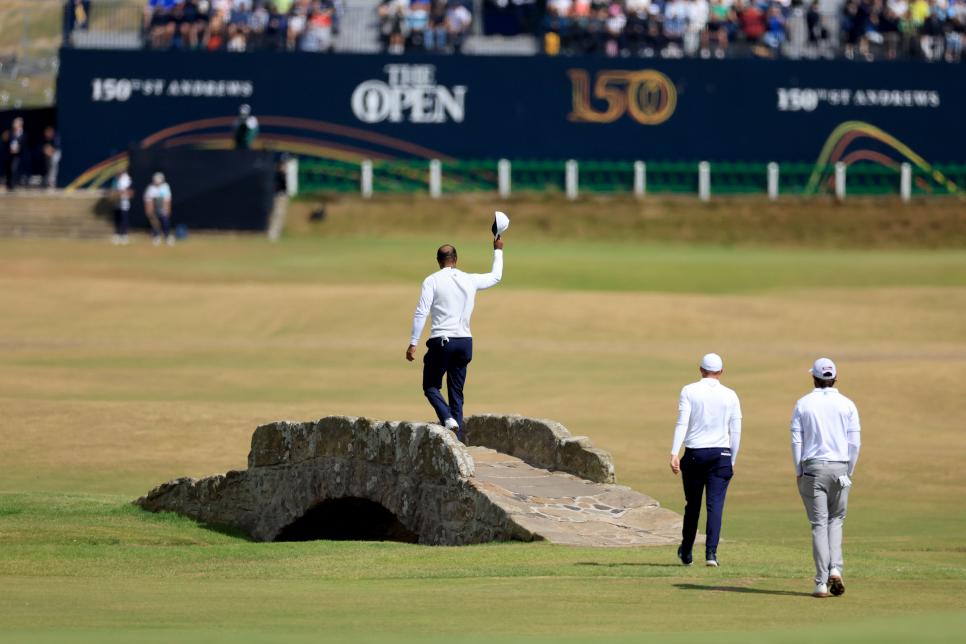
David Cannon
“I hope people remember Tiger as Tiger was, the passion and the charismatic aura around him,” Colin Montgomerie said in an interview with The Times of London last week. “There is none of that now. At Pinehurst [for the U.S. Open], he did not seem to enjoy a single shot and you think, ‘What the hell is he doing?’ He’s coming to Troon, and he won’t enjoy it there either.” Montgomerie later added, in response to Woods’ comments last month that his competitive days may be numbered, “Aren’t we there? I’d have thought we were past there. There is a time for all sportsmen to say goodbye, but it’s very difficult to tell Tiger it’s time to go. Obviously, he still feels he can win. We are more realistic.”
To various extents for the last decade, similar eulogies have been made about Woods’ career—only for Woods to prove how much life he has left. Perhaps that’s partly why Monty’s remarks made the rounds. But as blunt as Montgomerie was, the collective response has been just as telling, because there has been little, if any, rebuttal. Montgomerie said what we all know to be true:
In sports, everything ends badly. Otherwise, it wouldn’t end.
Badly is a sober assessment of Woods’ golf as of late. More than as of late: Since winning the 2019 Masters he has failed to finish inside the top 20 at a major and has either missed the cut or withdrawn in five of the last seven. He’s played four rounds of an official tournament just three times in the last four seasons. This is partly an upshot of the fact he hardly plays at all. The last time Woods teed it up at an event that wasn’t a) a major, b) his Genesis Invitational or c) a silly-season event was in the summer of 2020. That is the profile of a ceremonial figure … which Woods was at the U.S. Open, in the field thanks to a special exemption from the USGA. He fought, but Pinehurst painfully illustrated it was a test he could not pass. Golf pounds its chest about its meritocratic fields but Woods, in his current form, is more celebrity than competitor.
More British Open Preview Coverage
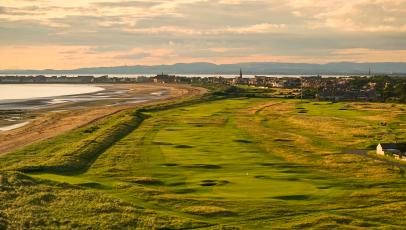
In itself, this is not a surprise. Willie Mays is often cited as the star who remained too long after he stopped emitting light. The truth is Mays is the rule, not the exception. Tom Brady could’ve walked away after winning a Super Bowl in his first season away from New England; he stayed for two more years, his last the first losing-season in his 21-year career as a starter. Michael Jordan’s second comeback was better than it’s remembered, but Jordan missed the playoffs in both of his years with the Washington Wizards (after winning the NBA Finals his final three years with the Chicago Bulls) for calling it quits for a third and final time. Muhammad Ali was so sluggish in a return bid against Larry Holmes that the fight was described as “watching an autopsy on a man who is still alive.” Jerry Rice, Shaquille O'Neal, Greg Maddux, Brett Favre, Chuck Liddell … the very drive that makes the greats great often blinds them from seeing the gas light furiously flashing on the dashboard, their engines needing to go up in smoke before conceding the tank is well past empty.
Golf is a different bird. There are no front offices making cuts or governing bodies ruling an athlete unfit for competition. Woods can play the Masters and PGA Championship as long as he wants and last month was gifted a lifetime exemption into PGA Tour signature events. The Open only recently implemented an age restriction at 55 years old, although Woods is grandfathered into the previous limit of 60. There’s also the golden parachute that is the senior tour. Golfers don’t retire, they fade into competitive irrelevance as the next generation emerges.
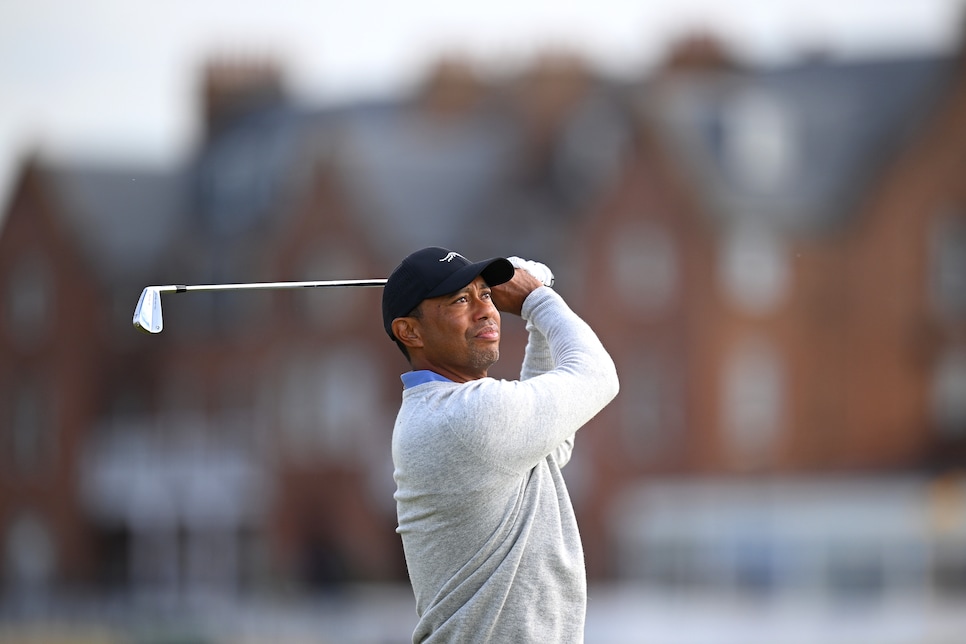
Stuart Franklin/R&A
The problem is Woods continues to be the sun this solar system revolves around, and why the finality of Woods’ career is something of a third rail. Fans don’t want it to be true, and collectively, no one quite understands what the end looks like, including Woods.
That is at the heart of what Montgomerie was trying to convey. Woods has asserted he only tees it up when he thinks he can win. He doubled-down on the sentiment Tuesday at Royal Troon. “I'll play as long as I can play and I feel like I can still win the event,” Woods said, the implication being that he feels that way about his chances this week in Scotland.
The thing is, what Woods wants to do—what fans want him to do—he physically can’t, his impressive physique belying a body fused together through more surgeries than you can count on two hands. And though the runway for those on the backend of their careers has been extended thanks to equipment gains and advancements in sports sciences such as training and recovery, professional golf is unequivocally a young man’s game. Rory McIlroy is the only player older than 30 inside the world’s top 10, and Adam Scott is the lone player older than 40 in the top 60.
Of course, this is ultimately Woods’ legacy and his life, and Woods was clear Tuesday that he would not take directions from anyone but himself.
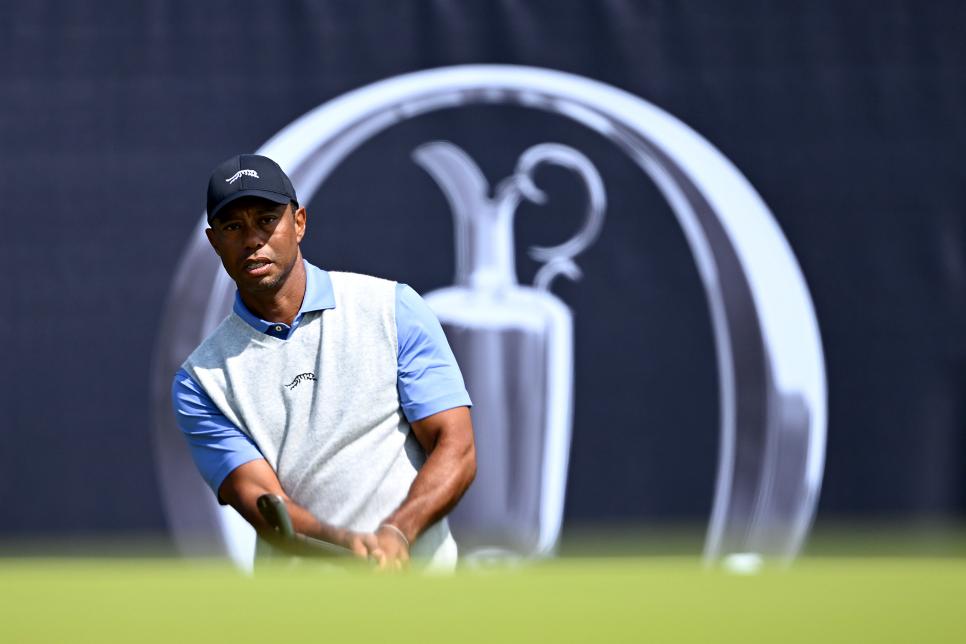
Stuart Kerr/R&A
“Well, as a past champion, I'm exempt,” Woods said. “Colin's not. He's not a past champion, so he's not exempt. So he doesn't get the opportunity to make that decision. I do.” When pressed further if he’s earned the privilege to continue, Woods responded, “When I get to his age, I get to still make that decision, where he doesn't.”
Woods has earned the right. And the case can be made that there's something noble in battling a destiny we cannot escape yet refusing to surrender all the same. That he can conjure the magic that Phil Mickelson did at Kiawah, that 59-year-old Tom Watson did at Turnberry. The hope that, if only for one week or even one day, Woods can be as good as he once was.
Conversely, for all the romanticism of the Open, it is a major championship and major championship golf is cannibalistic. Montgomerie was blunt but the underlying heart of the message was one of compassion. He’s trying to tell Woods what he apparently can’t see, and what Montgomerie doesn't want to see again.

In an exceedingly paint-by-numbers game, links golf requests—maybe the best phrase is requires —one to draw outside the lines. Precision and power take a backseat to vision, artistry and feel. Experience matters here more than any other major setting. The Open is also infamous for occasionally slimming its field in half depending on the weather. It’s not hard to squint and see a scenario in which Woods is hanging around come Friday evening.
Woods does look healthier and slimmer in Scotland. He says he’s been “training a lot better” and “busting it” in the gym. “I'm able to do some things that I haven't done all year, which is nice.” He arrived at Royal Troon on Sunday and walked 18 holes, acquitting himself with a course he hadn’t played competitively in two decades. He played another nine on Monday. He’s getting through the ball well, the distance is OK and the ball-striking remains world class. When things are going good, he looks and sounds and feels like the eternal Tiger Woods.
Except, it’s not about the golf, because in between his shots on the course and range Woods has been noticeably hobbling. (During his press conference, he wore shorts and a compression sleeve on his right leg from above the knee to his foot.) It is a gait hampered by injuries, functional only through an unshakable will and the belief that he can keep going because he’s done it countless times before. However, there is no thing such as eternity in sports. Eventually, everything has to stop.
Is it the British Open or the Open Championship? The name of the final men’s major of the golf season is a subject of continued discussion. The event’s official name, as explained in this op-ed by former R&A chairman Ian Pattinson , is the Open Championship. But since many United States golf fans continue to refer to it as the British Open, and search news around the event accordingly, Golf Digest continues to utilize both names in its coverage.
More from Golf Digest
Trending now.
Analysis: Tiger Woods is playing all the majors. But for how much longer?
Tiger Woods is playing all four majors for the first time in five years
TROON, Scotland — Tiger Woods is playing all four majors for the first time since 2019, which at the start of the year would have been cause for great optimism.
The results paint a different picture.
He set a Masters record by making his 24th consecutive cut at Augusta National . And then he was gone by the weekend at the PGA Championship and the U.S. Open . He hasn’t broken par since a 69 in the second round of the 2022 PGA Championship , and he needed that simply to make the cut.
His performance is starting to raise questions of how much longer he will play — how much longer he should play — to avoid lasting memories of a great champion slapping it around.
Leave it to Colin Montgomerie to put those thoughts into words found in a Times of London interview ahead of the British Open, when he said at one point, “What the hell is he doing?”
The entirety of what Montgomerie told the Times: “I hope people remember Tiger as Tiger was, the passion and the charismatic aura around him. There is none of that now. At Pinehurst he did not seem to enjoy a single shot and you think, ‘What the hell is he doing?’ He’s coming to Troon and he won’t enjoy it there, either.”
Woods already has enjoyed one aspect of his stay at Royal Troon . That came Tuesday when he was asked about Montgomerie’s comments. Woods relishes a chance to push back on criticism, particularly when the source is someone known for never winning a major.
“Well, as a past champion, I’m exempt until I’m 60,” Woods said, speaking to his time at the British Open. “Colin’s not. He’s not a past champion, so he’s not exempt. So he doesn’t get the opportunity to make that decision. I do.”
It brought up memories of an Open tradition some 20 years ago. Stewart McDougal was the press officer at the time, and he would ask Open champions who came into the press center to sign the table. At the end of the week, McDougal auctioned off the table for charity.
Montgomerie came in one day, saw all the signatures on the table and reached for pen.
“I’m sorry, Colin,” McDougal told him. “It’s only for Open champions.”
Poor Monty.
The questions are fair enough, but there is something to be said about golfers being able to decide when their time is done. And given all that Woods has done in the game, it’s probably not the best idea to show him the door no matter what numbers he is posting.
His 82 in the third round of the Masters was his highest in a major. The 78 on the Old Course two years ago in what likely will be his final time at St. Andrews .
He still draws the biggest crowd and generates the loudest buzz. And two numbers worth remembering are four and 15. He had four surgeries on his lower back, the last one to fuse his spine, and two years later he won his 15th major at the Masters .
Another number worth noting is 59 — the age of Tom Watson when he was an 8-foot par putt away from winning the British Open at Turnberry in 2009. The year before, Greg Norman was 53 when he had the 54-hole lead at Royal Birkdale.
Courses for the U.S. majors might be getting too big for the 48-year-old Woods, whose body is held together by hardware. But there is something about links golf that is timeless.
“The older you get, the less you can carry the golf ball,” Woods said. “But over here, you can run the golf ball 100 yards if you get the right wind and the right trajectory. ... You can play on the ground. You can burn it on the ground with a 1-iron, 2-iron, 3-wood, whatever.
“I think that’s one of the reasons why you see older champions up there on the board because they’re not forced to have to carry the ball 320 yards.”
Woods always will be linked with Augusta National because of his watershed win at age 21 when he won the 1997 Masters by 12 shots, and it is the major he has won the most times. But for all his power as a younger man, no one hit irons like Woods. The flight of his shots was ideal for the links golf. It still is.
Woods showed up Tuesday wearing shorts, with a black compression sleeve covering his right leg. That was a clear reminder that age isn’t as big an issue as health. Woods has been forthright in explaining his dilemma. His body won’t allow him to play a full schedule, and when he shows up at the majors, he has to deal with competitive rust.
He could play more and risk not playing where it matters. That’s something he will have to sort out. And it was telling that the PGA Tour created an exemption category exclusively for him to play in the $20 million signature events by adding him to the field — he wouldn’t be taking a spot away from another player.
How much he plays next year will be worth watching.
In the meantime, Woods has been at Royal Troon since Sunday. He has high hopes. Maybe they are unrealistic based on the scores he is positing, but they are his hopes.
“There is a time for all sportsmen to say goodbye, but it’s very difficult to tell Tiger it’s time to go,” Montgomerie said. “Obviously, he still feels he can win. We are more realistic.”
The truth is probably somewhere in between. But perhaps Woods still feels he can win because unlike Montgomerie, he has done it before.
AP golf: https://apnews.com/hub/golf

- Search Please fill out this field.
- Manage Your Subscription
- Give a Gift Subscription
- Newsletters
- Sweepstakes
If you click on links we provide, we may receive compensation.
- Travel Products
- Trends + Deals We Love
- Amazon Products
- Amazon Prime Day
Amazon Prime Day Is Stacked With Golf and Tennis Deals — Shop Our Favorite Picks From $3
Score up to 60 percent off on clothes, shoes, bags, gear, and more.
Alesandra Dubin is an LA-based lifestyle writer and editor. As a veteran digital journalist, she's covered travel, food, parenting, and more for over 15 years. Her work has appeared in Travel + Leisure, TripSavvy, and countless other online and print outlets. An avid traveler, she often trots the globe with her husband and their twins. Follow her on Instagram and Twitter at @alicedubin. Alesandra holds a master's degree in journalism with an emphasis on cultural reporting and criticism from NYU, and a bachelor's degree from UC Berkeley.
:max_bytes(150000):strip_icc():format(webp)/AlesandraDubin-67615307279641008729cb062b07fd3b-b63952818f6c4ba094f26d0bd29bb11a.jpg)
Travel + Leisure / Tyler Roeland
Are you the first person at the hotel’s courts in the morning? Do you pick a travel destination based on the quality of its golf courses? Or, maybe you’re just after some sporty outfits to pack for your next trip (no judgment!). Regardless of your reasoning, you’ll find the best Amazon Prime Day tennis and golf deals here, including everything from clothes to gear.
With a sprawling assortment of deals for golfers and tennis players alike to shop in the Prime Day deals hub , we picked out the discounts that are actually worth your time, with plenty of golf essentials like bags, clubs, accessories, clothes, as well as tennis must-haves like shoes, rackets, and balls.
Best Amazon Prime Day Golf and Tennis Deals Overall
- Himal Outdoors Golf Practice Net , $60 (originally $99)
- Callaway Golf 300 Pro Laser Rangefinder , $170 (originally $300)
- TaylorMade TP5 & TP5x Golf Balls , $34 (originally $45)
- Jiskan Pro Golf Club Brush Cleaner , $12 (originally $20)
- Footjoy Mens Fj Originals , $51 (originally $100)
- Wilson Tour Slam Adult Recreational Tennis Racket , $28 (originally $45)
- Adidas Women's Gamecourt 2.0 Tennis Sneaker , $49 (originally $70)
- Ewedoos Women’s Tennis Dress , $35 (originally $50)
Shop the best Prime Day golf and tennis deals up to 60 percent off, perfect for the golf pro looking to stock up on more sweat-proof polos that are easy to move in or the tennis novice who needs the right footwear before hitting the court. These are our 40 top picks — and at these prices, they’re sure to go fast.
Best Amazon Prime Day Golf Club and Bag Deals
Golf clubs can be a major investment, which is why you should take advantage of these Prime Day golf deals that include many different types of clubs. Knock 11 percent off the Cobra one-length iron set or $80 off the Callaway Strata Complete 12 Piece Set . There are also great deals on golf bags to safely store your clubs: The PowerBilt’s 14-way golf stand bag is now just $95 (when compared to its original $150 price).
- Himal Outdoors Golf Travel Bag , $55 (originally $90)
- Powerbilt TPS Dunes 14-way Golf Stand Bag , $95 (originally $150)
- Founders Club Premium Cart Bag with 14-way Organizer Divider Top , $200 (originally $280)
- Callaway Golf Men's Strata Complete 12 Piece Package Set , $320 (originally $400)
- Cobra Golf 2022 LTDX Men's One-length Iron Set , $623 (originally $699)
- Himal 3 Racquet Tennis-Bag, $17 (originally $20)
- Darekuku Golf Travel Covers for Airlines with Detachable Shoulder Straps, $36 (originally $66)
Callaway Golf Men's Strata Complete 12 Piece Set
Whether you’re a beginner or it’s time to replace your hand-me-down clubs, the Callaway Strata is a great set for your money. For $320, it includes everything you need to hit the links: a driver, three woods, five hybrids, an iron, a pitching wedge, a putter, a stand bag, and two head covers.
Powerbilt TPS Dunes 14-Way Golf Stand Bag
There’s a chance your golf bag has seen better days after a lot of time on the course. Upgrade to this Powerbilt Dunes Bag, which has 14 dividers for your clubs, plus zippered pockets for other important items, plus your personal belongings. It’s easy to carry, thanks to the lightweight design and padded shoulder straps.
Best Amazon Prime Day Golf Accessory Deals
Amazon has golf accessories on sale at incredibly low prices for Prime Day, perfect for making your day on the course even more enjoyable. For instance, get the Jiskan brush cleaner for just $12 to keep your clubs clean and clear of dirt and debris. Or, get yourself the Himal Outdoors Golf Practice Net for $60 (versus the regular price of $99) and practice your swing from the comfort of your yard.
- Hoverolf Golf Towel With Brush , $10 (originally $17)
- Callaway 4-in-1 Golf Divot Repair Tool , $11 (originally $15)
- Champkey Professional 5 Prongs Golf Tees 100 Pack , $8 (originally $12)
- Zero Friction Golf Glove , $10 (originally $14)
- Caddytek CaddyLite EZ V8 3 Wheel Golf Push Cart , $168 (originally $219)
- Golf Rangefinder Laser Range Finder with Slope, $90 (originally $500)
- WILSON Profile Distance Golf Ball 36 pack, $25 (originally $32)
- THIODOON 2 Pack Golf Club Brushes and Groove Cleaner, $9 (originally $10)
- Bulex Golf Club Groove Sharpener, Re-Grooving Tool and Cleaner, $6 (originally $8)
- WILSON Staff Zip Golf Balls (Pack of 24), $24 (originally $35)
- Callaway Golf Ball Retriever for Water, $37 (originally $55)
Callaway Golf 300 Pro Laser Rangefinder
This pricey Callaway Rangefinder is an amazing 43 percent off for Prime Day, making it the perfect time to buy. Golfers who bought it rave about how accurate its readings are, especially when measuring the slope, and how well it locks on to the flag. Many also say that the battery life lasts for a long time and its compact size makes it easy to take with you.
Zero Friction Golf Glove
One easy way to improve your golf game is with a golf glove designed to help you grip the club for better control over your swing. This particular glove is made of mesh Lycra that allows for a secure fit and is breathable so your hand won’t get sweaty. Pick it up now for just $10.
Best Amazon Prime Day Golf Shoe and Clothing Deals
Amazon has excellent deals on golf clothes and shoes for both men and women (and these classic staples work great for casual wear off the course, too). One especially great deal is on the Puma Golf Proadapt Alphacat Shoes , which are marked down to $65 (which is 59 percent off the normal price). And PGA Tour’s women’s golf pants are now as low as $20, depending on the color and size.
- Puma Golf Men's Proadapt Alphacat Golf Shoe , $65 (originally $160)
- Footjoy Womens Fj Fuel Golf Shoe , $70 (originally $130)
- PGA Tour Women's Airflux 16" Golf Skort , $19 (originally $60)
- PGA Tour Women’s Golf Pant , $20 (originally $75)
- JWM Men’s Golf Pants , $28 (originally $50)
PGA Tour Women's Airflux Golf Skort
For a comfortable way to play a round of golf, try this PGA Tour moisture-wicking skirt, ideal for especially hot days. The mesh fabric keeps you cool and allows you to move comfortably without restricting your range of motion.
JWM Men’s Golf Pants
Wear these comfortable golf pants on the course and out to lunch; they have a sleek look, yet have four-way stretch to allow for full range of motion while you swing. The moisture-wicking fabric will also keep you cool during your entire game.
Best Amazon Prime Day Tennis Gear and Accessory Deals
Tennis gear and accessories are marked down for Prime Day, with tons of deals available under $30. For just $3, you can grab a few Wilson tennis headbands to keep sweat away from your face while you play. Or, protect your wrists with a two-pack of the HiRui compression straps for $8 right now.
- Adidas Women's Superlite Sport Performance Visor , $14 (originally $22)
- Himal Outdoors Tennis Backpack , $21 (originally $33)
- Wilson Advantage Tennis Bag Series , $24 (originally $29)
- Wilson Tennis Headband , $3 (originally $7)
- Sukeen Cooling Towels 4-pack , $16 (originally $29)
- HiRui 2-pack Wrist Compression Strap , $8 (originally $13)
- Penn Championship Tennis Balls , $33 (originally $45)
- T4U888 Tennis Trainer Rebound Ball , $17 (originally $21)
HiRui 2-pack Wrist Compression Strap
Protect your wrists with this brace that provides supportive compression and stabilizes your wrist while you swing your racket. It’s comfortable and easy to take on and off, plus it can be hand-washed to keep it clean after a sweaty game. There are two in a pack so you can use them for both wrists at the same time.
Penn Championship Tennis Balls
Need to stock up on tennis balls? Look no further than this deal on Penn Championship Tennis Balls, which includes a total of 36 balls for $33. These best-selling tennis balls are best for hard courts, but can also be used on indoor courts, as well as clay courts.
Best Amazon Prime Day Tennis Clothes Deals
Tennis style is very much having a moment, so these deals aren’t just for tennis players. For instance, tennis players and non-players alike will appreciate the Blevonh tennis skort which is comfy and functional with built-in shorts and pockets (starting at $22, depending on size and style). And the popular Ewedoos tennis dress , which is Amazon’s best-selling tennis dress with over 4,000 five-star ratings, is 30 percent off right now at $35.
- Blevonh Women’s Tennis Skort , $22 (originally $37)
- Pinspark 4-pack Polo Shirts , $32 (originally $46)
- Baleaf Women’s Pleated Tennis Skirt , $24 (originally $36)
- Under Armour Men's Tech 2.0 Short-sleeve T-shirt , $17 (originally $25)
- Viodia Men's 7" Golf Shorts, $26 (originally $33)
Under Armour Men's Tech 2.0 Short-sleeve T-shirt
With over 69,000 five-star ratings, this Under Armour shirt is incredibly popular on Amazon, with shoppers praising its comfort and sweat-wicking abilities. In addition to wearing it on the courts, you’ll want to wear it to the gym, on a run, or even running errands. With dozens of colors, stock up on a few.
Baleaf Women’s Pleated Tennis Skirt
Tennis skirts are very popular now, whether you’re on the court or getting brunch. Players appreciate how comfortable this skirt is while moving around and note that it doesn’t fall down.
Best Amazon Prime Day Tennis Shoe Deals
Tennis shoes are a must for on and off the court, and some big names, including Adidas, Asics, K-Swiss, and Under Armour, are on sale for Prime Day. You can get a pair of the Under Armour Men's Charge Assert 10 sneakers for 20 percent off, making them $60.
- Under Armour Men’s Charge Assert 10 , $60 (originally $75)
- Adidas Men’s Gamecourt 2.0 Tennis Sneaker , $48 (originally $70)
- Asics Men's Solution Swift FlyteFoam Tennis Shoes , $70 (originally $110)
- Asics Women's Gel-Dedicate 7 Tennis Shoes , $60 (originally $80)
- K-Swiss Men's Hypercourt Supreme Tennis Shoe , $90 (originally $130)
Adidas Women's Gamecourt 2.0 Tennis Sneaker
With a cushioned sole and padded collar, these Adidas Gamecourt sneakers will provide plenty of support for your feet throughout the game. They’re also lightweight, which makes them perfect for moving around quickly on the court. And, they’re up to 30 percent off right now, making them as low as $49 depending on the size and color.
K-Swiss Men's Hypercourt Supreme Tennis Shoe
This K Swiss Hypercourt men’s shoe is supportive and lightweight, designed to cushion your foot and help you move around the court. Many shoppers say that these sneakers hold up well even after a lot of wear, making the $90 well worth it.
Love a great deal? Sign up for our T+L Recommends newsletter and we’ll send you our favorite travel products each week.
Shop More T+L-Approved Picks
:max_bytes(150000):strip_icc():format(webp)/roundup-genius-travel-essentials-deals-tout-00316fa2087144d98a7171d3d0e11d23.jpg)
Related Articles
Nine’s Wide World of Sports
'What the hell is he doing?': Tiger Woods chirps back at rival's retirement sledge
Tiger Woods is playing all four majors for the first time since 2019, which at the start of the year would have been cause for great optimism.
The results paint a different picture.
He set a Masters record by making his 24th consecutive cut at Augusta National, but was gone by the weekend at the PGA Championship and the US Open .
LIVE UPDATES: State of Origin 2024 Game 3
IN PICTURES: Where are they now? Last Blues team to conquer Suncorp
READ MORE: Patty's perfect response to brutal Bogut calls
He hasn't broken par since a 69 in the second round of the 2022 PGA Championship, and he needed that simply to make the cut.
His performance is starting to raise questions of how much longer he will play — how much longer he should play — to avoid lasting memories of a great champion slapping it around.

Tiger Woods has responded to a retirement did by Scottish veteran Colin Montgomerie. PGA Tour
Leave it to Colin Montgomerie to put those thoughts into words found in a Times of London interview ahead of the British Open , when he said at one point, "What the hell is he doing?".
The entirety of what Montgomerie told the Times: "I hope people remember Tiger as Tiger was, the passion and the charismatic aura around him. There is none of that now.
"At Pinehurst he did not seem to enjoy a single shot and you think, 'What the hell is he doing?'.
"He's coming to Troon and he won't enjoy it there, either."
Woods relishes a chance to push back on criticism, particularly when the source is someone known for never winning a major. He got his chance to respond to Montgomerie on Tuesday evening (AEST).
"Well, as a past champion, I'm exempt until I'm 60," Woods said, speaking to his time at the British Open.

Woods during a practice round ahead of this weekend's British Open at Royal Troon. Getty
"Colin's not. He's not a past champion, so he's not exempt. So he doesn't get the opportunity to make that decision. I do."
It brought up memories of an Open tradition some 20 years ago. Stewart McDougal was the press officer at the time, and he would ask Open champions who came into the press center to sign the table. At the end of the week, McDougal auctioned off the table for charity.
Montgomerie came in one day, saw all the signatures on the table and reached for pen.
"I'm sorry, Colin," McDougal told him. "It's only for Open champions."
Poor Monty.
The questions are fair enough, but there is something to be said about golfers being able to decide when their time is done. Given all that Woods has done in and for the game, it's probably not the best idea to show him the door no matter what numbers he is posting.
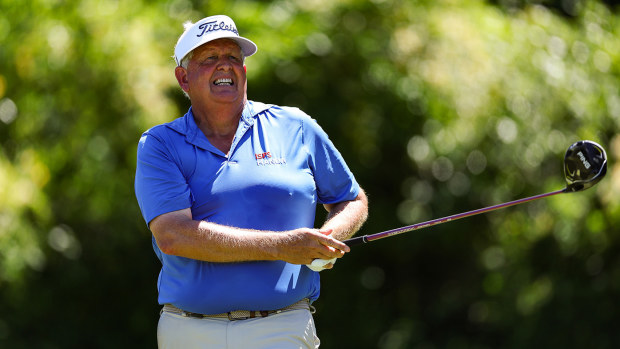
Colin Montgomerie during the US Senior Open last month. Getty
His 82 in the third round of the Masters was his highest in a major. He shot a 78 on the Old Course two years ago in what was likely his final round at St Andrews.
He still draws the biggest crowd and generates the loudest buzz.
Two numbers worth remembering are four and 15. He had four surgeries on his lower back, the last one to fuse his spine, and two years later he won his 15th major at the Masters.
Another number worth noting is 59 — the age of Tom Watson when he was an eight-foot par putt away from winning the British Open at Turnberry in 2009. The year before, Greg Norman was 53 when he had the 54-hole lead at Royal Birkdale before blowing up on the final day.
Courses for the US majors might be getting too big for the 48-year-old Woods, whose body is held together by hardware. But there is something about links golf that is timeless.
"The older you get, the less you can carry the golf ball," Woods said.
"But over here, you can run the golf ball 100 yards if you get the right wind and the right trajectory ... you can play on the ground. You can burn it on the ground with a 1-iron, 2-iron, 3-wood, whatever.
"I think that's one of the reasons why you see older champions up there on the board because they're not forced to have to carry the ball 320 yards."
Woods always will be linked with Augusta National because of his watershed win at age 21 when he won the 1997 Masters by 12 shots, and it is the major he has won the most times.
But for all his power as a younger man, no one hit irons like Woods. The flight of his shots was ideal for the links golf. It still is.
Woods showed up at Troon wearing shorts with a black compression sleeve covering his right leg. That was a clear reminder that age isn't as big an issue as health. Woods has been forthright in explaining his dilemma. His body won't allow him to play a full schedule, and when he shows up at the majors, he has to deal with competitive rust.
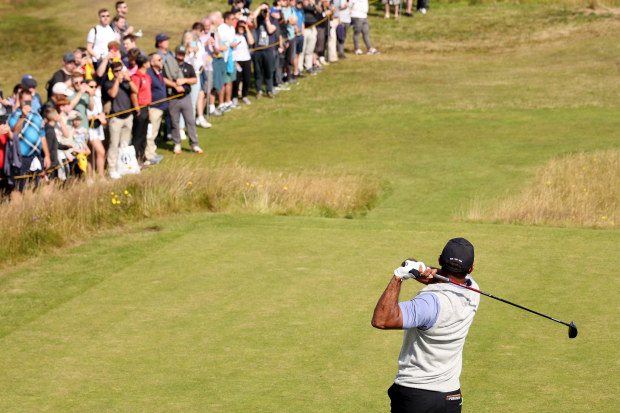
Woods still draws large crowds, even during practice rounds. Getty
He could play more and risk not playing where it matters. That's something he will have to sort out.
It was telling that the PGA Tour created an exemption category exclusively for him to play in the $30 million signature events by adding him to the field — he wouldn't be taking a spot away from another player.
How much he plays next year will be worth watching.
In the meantime, Woods has been at Royal Troon since Sunday. He has high hopes. Maybe they are unrealistic based on the scores he is positing, but they are his hopes.
"There is a time for all sportsmen to say goodbye, but it's very difficult to tell Tiger it's time to go," Montgomerie said.
"Obviously, he still feels he can win. We are more realistic."
The truth is probably somewhere in between. But perhaps Woods still feels he can win because unlike Montgomerie, he has done it before.
- British Open
- Tiger Woods
Most viewed in Golf

'It sucks': Agonising Aussies blow $1.7m in a few hours

Bitter feud explodes over $3m 'extortion' claim
- Election 2024
- Entertainment
- Photography
- AP Buyline Personal Finance
- AP Buyline Shopping
- Press Releases
- Israel-Hamas War
- Russia-Ukraine War
- Global elections
- Asia Pacific
- Latin America
- Middle East
- Election Results
- Delegate Tracker
- AP & Elections
- Auto Racing
- 2024 Paris Olympic Games
- Movie reviews
- Book reviews
- Financial Markets
- Business Highlights
- Financial wellness
- Artificial Intelligence
- Social Media
Analysis: Tiger Woods is playing all the majors. But for how much longer?
Tiger Woods of the United States chips onto the 6th green during a practice round for the British Open Golf Championships at Royal Troon golf club in Troon, Scotland, Monday, July 15, 2024. (AP Photo/Peter Morrison)
Tiger Woods of the United States answers questions at a press conference ahead of the British Open Golf Championships at Royal Troon golf club in Troon, Scotland, Tuesday, July 16, 2024. (AP Photo/Jon Super)
Tiger Woods during a practice round ahead of The Open at Royal Troon, South Ayrshire, Scotland, Monday, July 15, 2024. (Steve Welsh/PA via AP)
Tiger Woods of the United States, right, tees off the 10th hole during a practice round for the British Open Golf Championships at the Royal Troon golf club in Troon, Scotland, Monday, July 15, 2024. (AP Photo/Peter Morrison)
Tiger Woods of the United States puts on the 10th green during a practice round for the British Open Golf Championships at Royal Troon golf club in Troon, Scotland, Monday, July 15, 2024. (AP Photo/Peter Morrison)
- Copy Link copied

TROON, Scotland (AP) — Tiger Woods is playing all four majors for the first time since 2019, which at the start of the year would have been cause for great optimism.
The results paint a different picture.
He set a Masters record by making his 24th consecutive cut at Augusta National . And then he was gone by the weekend at the PGA Championship and the U.S. Open . He hasn’t broken par since a 69 in the second round of the 2022 PGA Championship , and he needed that simply to make the cut.
His performance is starting to raise questions of how much longer he will play — how much longer he should play — to avoid lasting memories of a great champion slapping it around.
Leave it to Colin Montgomerie to put those thoughts into words found in a Times of London interview ahead of the British Open, when he said at one point, “What the hell is he doing?”
The entirety of what Montgomerie told the Times: “I hope people remember Tiger as Tiger was, the passion and the charismatic aura around him. There is none of that now. At Pinehurst he did not seem to enjoy a single shot and you think, ‘What the hell is he doing?’ He’s coming to Troon and he won’t enjoy it there, either.”
Woods already has enjoyed one aspect of his stay at Royal Troon . That came Tuesday when he was asked about Montgomerie’s comments. Woods relishes a chance to push back on criticism, particularly when the source is someone known for never winning a major.
“Well, as a past champion, I’m exempt until I’m 60,” Woods said, speaking to his time at the British Open. “Colin’s not. He’s not a past champion, so he’s not exempt. So he doesn’t get the opportunity to make that decision. I do.”
It brought up memories of an Open tradition some 20 years ago. Stewart McDougal was the press officer at the time, and he would ask Open champions who came into the press center to sign the table. At the end of the week, McDougal auctioned off the table for charity.
Montgomerie came in one day, saw all the signatures on the table and reached for pen.
“I’m sorry, Colin,” McDougal told him. “It’s only for Open champions.”
Poor Monty.
The questions are fair enough, but there is something to be said about golfers being able to decide when their time is done. And given all that Woods has done in the game, it’s probably not the best idea to show him the door no matter what numbers he is posting.
His 82 in the third round of the Masters was his highest in a major. The 78 on the Old Course two years ago in what likely will be his final time at St. Andrews .
He still draws the biggest crowd and generates the loudest buzz. And two numbers worth remembering are four and 15. He had four surgeries on his lower back, the last one to fuse his spine, and two years later he won his 15th major at the Masters .
Another number worth noting is 59 — the age of Tom Watson when he was an 8-foot par putt away from winning the British Open at Turnberry in 2009. The year before, Greg Norman was 53 when he had the 54-hole lead at Royal Birkdale.
Courses for the U.S. majors might be getting too big for the 48-year-old Woods, whose body is held together by hardware. But there is something about links golf that is timeless.
“The older you get, the less you can carry the golf ball,” Woods said. “But over here, you can run the golf ball 100 yards if you get the right wind and the right trajectory. ... You can play on the ground. You can burn it on the ground with a 1-iron, 2-iron, 3-wood, whatever.
“I think that’s one of the reasons why you see older champions up there on the board because they’re not forced to have to carry the ball 320 yards.”
Woods always will be linked with Augusta National because of his watershed win at age 21 when he won the 1997 Masters by 12 shots, and it is the major he has won the most times. But for all his power as a younger man, no one hit irons like Woods. The flight of his shots was ideal for the links golf. It still is.
Woods showed up Tuesday wearing shorts, with a black compression sleeve covering his right leg. That was a clear reminder that age isn’t as big an issue as health. Woods has been forthright in explaining his dilemma. His body won’t allow him to play a full schedule, and when he shows up at the majors, he has to deal with competitive rust.
He could play more and risk not playing where it matters. That’s something he will have to sort out. And it was telling that the PGA Tour created an exemption category exclusively for him to play in the $20 million signature events by adding him to the field — he wouldn’t be taking a spot away from another player.
How much he plays next year will be worth watching.
In the meantime, Woods has been at Royal Troon since Sunday. He has high hopes. Maybe they are unrealistic based on the scores he is positing, but they are his hopes.
“There is a time for all sportsmen to say goodbye, but it’s very difficult to tell Tiger it’s time to go,” Montgomerie said. “Obviously, he still feels he can win. We are more realistic.”
The truth is probably somewhere in between. But perhaps Woods still feels he can win because unlike Montgomerie, he has done it before.
AP golf: https://apnews.com/hub/golf

Expedia Rewards is now One Key™
Elektrostal, visit elektrostal, check elektrostal hotel availability, popular places to visit.
- Electrostal History and Art Museum
You can spend time exploring the galleries in Electrostal History and Art Museum in Elektrostal. Take in the museums while you're in the area.
- Cities near Elektrostal

- Places of interest
- Yuri Gagarin Cosmonaut Training Center
- Central Museum of the Air Forces at Monino
- Peter the Great Military Academy
- Bykovo Manor
- Balashikha Arena
- Balashikha Museum of History and Local Lore
- Pekhorka Park
- Ramenskii History and Art Museum
- Orekhovo Zuevsky City Exhibition Hall
- Malenky Puppet Theater
- Noginsk Museum and Exhibition Center
- Saturn Stadium

IMAGES
VIDEO
COMMENTS
If you have a high swing speed between 100 and 110 MPH, then try a high compression golf ball. If you have a tour swing speed over 110 MPH, then try a high compression golf ball with added features and more layers in order to refine the control of the ball for different kinds of shots.
Discover the importance of golf ball compression and learn how it affects ball performance. Find out how to choose the right compression for your swing and improve your golf game ... High Compression Golf Balls: Mizuno RBX Tour X: 4 Piece: High 110 + 105 mph $$$$ Cut DC: 4 Piece: High 105 + 105 mph $$$ Taylormade TP5X Pix: 5 Piece: High 100 ...
Golf ball compression is a measure of how much a golf ball deforms under load. The higher the compression, the harder the ball. It should be noted that there isn't a single industry-standard gauge and even gauges of the same type can produce slightly different measurements, so it's not uncommon for one manufacturers 90 to be another's 87 ...
To understand the golf ball compression chart, it is important to know what compression means. Compression refers to the degree of density at which the ball is made. The higher the compression, the harder and denser the ball will be. Golf balls have varying degrees of compression, ranging from 0 (soft) to 200 (hard).
The golf ball's compression is the density or tightness of the ball. The lower the compression of a golf ball, the softer they are. If a golf ball is high in compression, it is harder. ... Middle Compression Option: Wilson Tour Velocity Golf Ball Pack [amazon box = "B07JNVDBHN" template="horizontal" description_items="3″]
Our golf ball compression chart makes it easy to find models with your preferred specs, including the spin, height, and price. This guide will also cover what compression does to performance and feel and how to pick the right golf ball for your game. ... Inesis Tour 900: 5: 5: 1 $$ Maxfli Tour X: 5: 4: 5 $$$ Wilson Staff Model: 5: 5: 2 $$$$ PXG ...
Swing Speed: 85 - 95 mph. Recommended Compression: 80-90. TaylorMade Project (a) Provides a good balance of distance, feel, and control for mid-range swing speeds. Srixon Soft Feel. A low compression ball offering a soft feel without compromising distance. 3. Swing Speed: 95 - 105 mph. Recommended Compression: 90-100.
TaylorMade Tour Response is my favorite medium compression golf ball. The Tour Response has gone through some rigorous testing in the last few years, and it is still one of the best sellers for TaylorMade. Essentially TaylorMade took their impressive TP5 golf ball and eliminated a few of the layers, and they came up with the Tour Response. ...
TaylorMade Tour Response Golf Balls - Compression. On our gauge, the 2022 TaylorMade Tour Response has an average compression of 73. That's one point firmer than the 2020 model. Suffice it to say that the compression is functionally identical. By way of comparison, that puts it within a couple of points of the prior-gen Bridgestone TOUR B ...
Maxfli Tour — Compression. On our gauges, the Maxfli Tour has an average of 85 compression. That puts it in the firm category. ... The Maxfli Tour CG golf ball gets an overall grade of 85. The score is above the average for the market as a whole and is, frankly, outstanding considering the $34.99 retail price (and that's before we consider ...
Equipment Spotlight: Premium brand Thomas Golf - Custom golf clubs with Shot Accuracy Technology. GOLF BALL COMPRESSION CHART & RANK >> Everything You Need To Know About Golf Ball Compression. For detailed articles about golf ball compression, explore the tabs. - To find the compression rating of a specific golf ball... - VOTED #1 GOLF SITE!
Golf ball compression is a term often used but seldom understood! Read our golf ball compression chart to learn more and become an expert! ... Bridgestone Tour B XS: Mid <105 mph: Bridgestone Tour B RX: Low: 85 - 104 mph: Bridgestone Tour B RXS: Low: 85 - 104 mph: Bridgestone e12 Soft: Low: 85 - 104 mph:
It describes the interaction between the clubface and the ball's core. The lower the compression, the softer the ball, and the higher the compression rating, the harder the ball. Typically, the golf ball compression ranges between 30 to 120. Softest golf ball: 30. Hardest golf ball: 120.
Golf Ball Compression Chart For Beginners help you choose the right golf ball for your swing speed. ... Golf Ball Model: Compression: Bridgestone Tour B330: High: Bridgestone Tour B330-S: High: Bridgestone Tour B330-RX: Mid: Bridgestone Tour B330-RXS: Mid: Bridgestone TOUR B RX: Low:
Simply, the higher the compression, the harder the golf ball. Some examples of high-compression balls include the popular Titleist Pro V1X, Callaway Chrome Soft X, and Bridgestone Tour B RX.. Lower-compression golf balls feel softer and do not require as much swing speed. Some examples of softer balls include Wilson Duo, Callaway Super Soft, or the Srixon Soft Feel.
Compression ratings of golf balls. The golf ball compression rating describes how hard or soft the ball is. In general, brands rate golf ball compression between 30 and 120. The softest is 30, while 120 is the hardest. To be more understood: the lower the compression, the softer the ball, and the higher the compression rating, the harder the ball.
Then maybe you need the golf ball compression chart to ensure you never pick the wrong golf ball. ... Compression Swing Speed; Bridgestone Tour B X: 3: 98 (High) 105+ MPH: Bridgestone Tour B RX: 3: 75 (Medium) Under 105 MPH: Bridgestone Tour B RXS: 3: 65 (Low) Under 105 MPH: Bridgestone Tour B XS: 3:
Compression is a measure of the deflection a golf ball undergoes when it is struck, with values typically ranging from 50 to 100, although at least one version of Callaway's Supersoft golf ball had a compression rating as low as 38. 2014's Callaway Supersoft model had a compression of just 38. These days, such figures are rarely, if ever ...
At A Glance: Our Top 5 Picks for Low Compression Golf Balls On The Market In 2024. Best Overall: Callaway Supersoft. Runner Up 1: Srixon Soft Feel. Runner Up 2: Maxfli SoftFli Matte White. Best Value: Wilson Staff Fifty Elite. Best Premium: Titleist TruFeel. Best Ultra Low Compression: Wilson Duo Soft.
The Hex soft 19 ball is a soft golf ball with low compression, delivering a terrific feel to your shots on the green. ... Great value for a quality ball: Titleist tour speed golf balls, 12-count ...
Woods can play the Masters and PGA Championship as long as he wants and last month was gifted a lifetime exemption into PGA Tour signature events. The Open only recently implemented an age ...
Tiger Woods of the United States chips onto the 6th green during a practice round for the British Open Golf Championships at Royal Troon golf club in Troon, Scotland, Monday, July 15, 2024.
Amazon Prime Day 2024 has a huge selection of tennis and golf deals of up to 60 percent off. Shop Prime Day golf deals on bags, clubs, and shoes, plus tons of tennis deals on apparel, gear, and ...
Park of Culture and Leisure. 16 reviews. #7 of 12 things to do in Elektrostal. Parks. Write a review. All photos (17) Suggest edits to improve what we show. Improve this listing. The area.
PGA Tour. Leave it to Colin ... "But over here, you can run the golf ball 100 yards if you get the right wind and the right trajectory ... you can play on the ground. ... Woods showed up at Troon wearing shorts with a black compression sleeve covering his right leg. That was a clear reminder that age isn't as big an issue as health. Woods has ...
Tiger Woods of the United States chips onto the 6th green during a practice round for the British Open Golf Championships at Royal Troon golf club in Troon, Scotland, Monday, July 15, 2024. ... with a black compression sleeve covering his right leg. ... And it was telling that the PGA Tour created an exemption category exclusively for him to ...
Gandikap, Elektrostal: See reviews, articles, and photos of Gandikap, ranked No.9 on Tripadvisor among 12 attractions in Elektrostal.
Cities near Elektrostal. Places of interest. Pavlovskiy Posad Noginsk. Travel guide resource for your visit to Elektrostal. Discover the best of Elektrostal so you can plan your trip right.
Things to Do in Elektrostal. 1. Electrostal History and Art Museum. 2. Statue of Lenin. 3. Park of Culture and Leisure. 4. Museum and Exhibition Center.